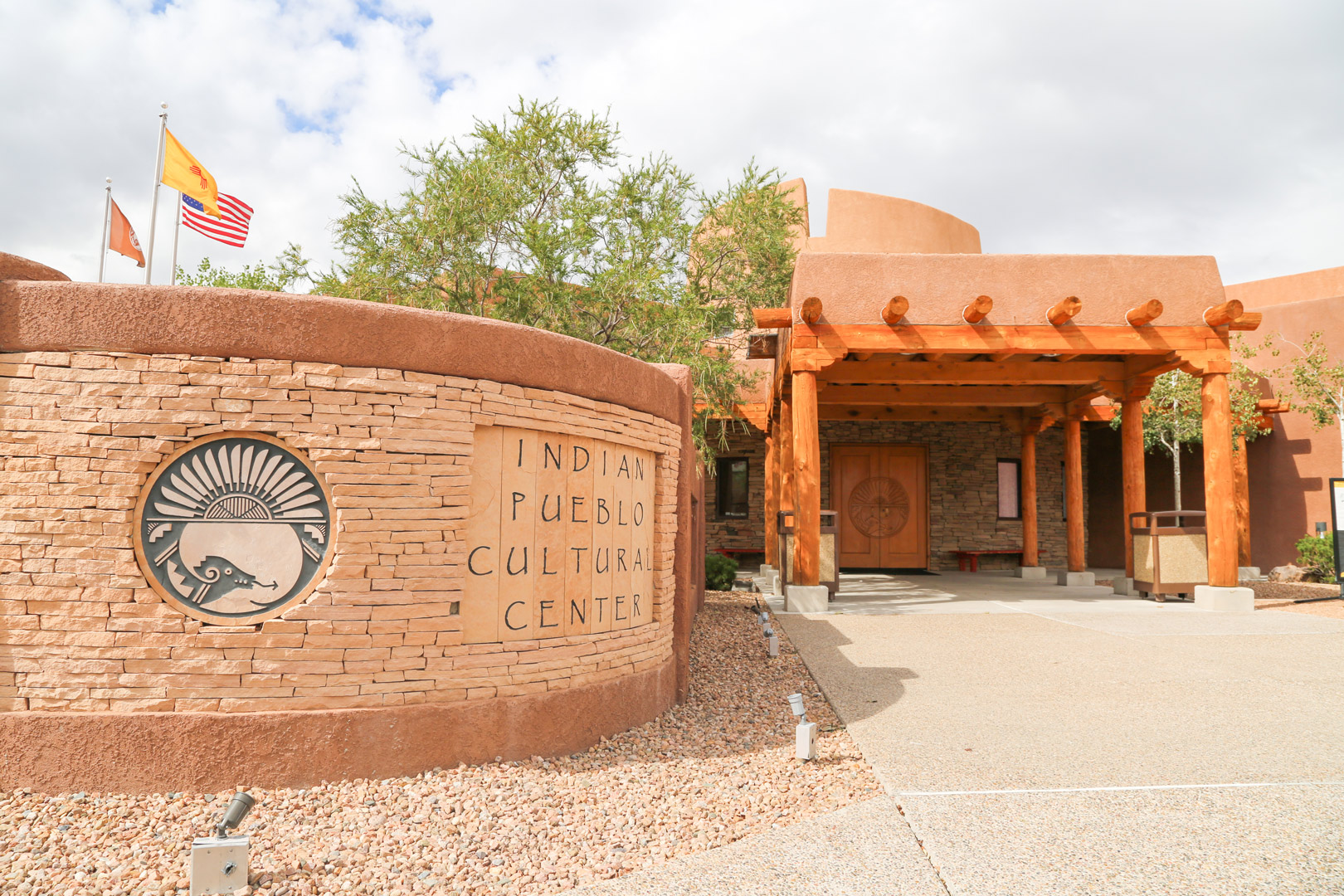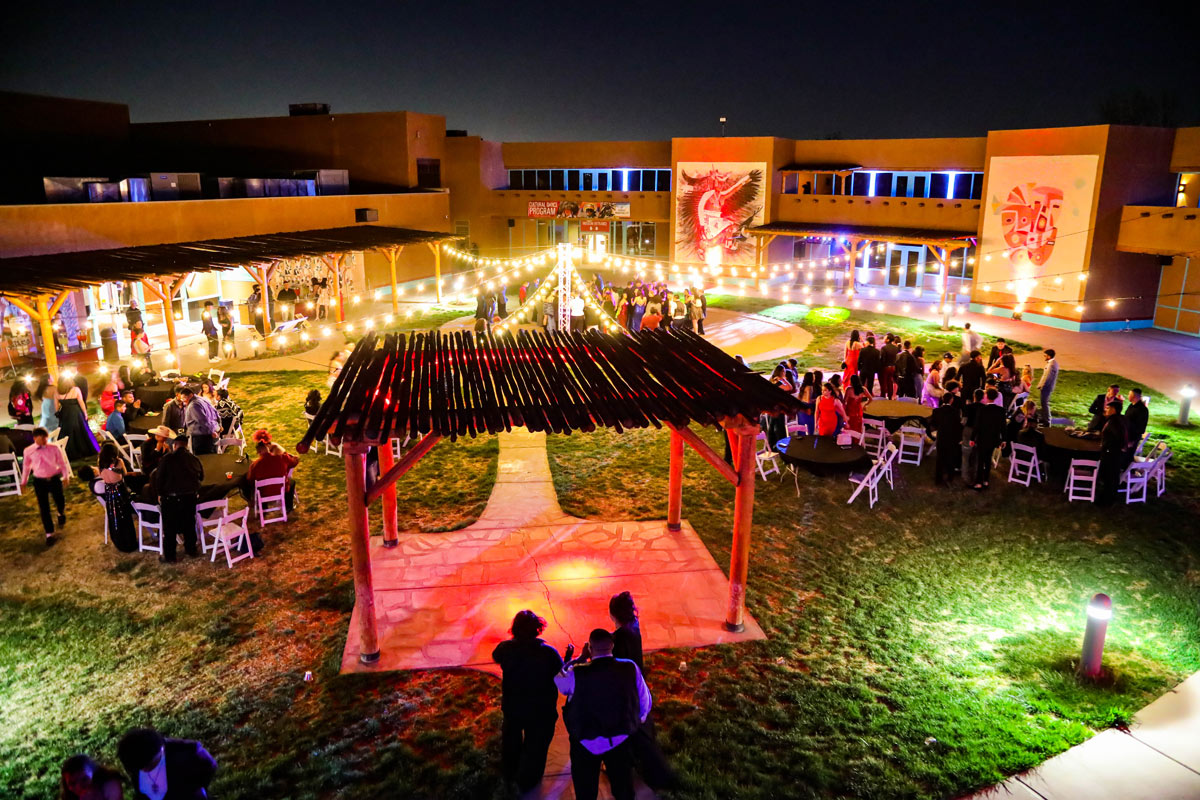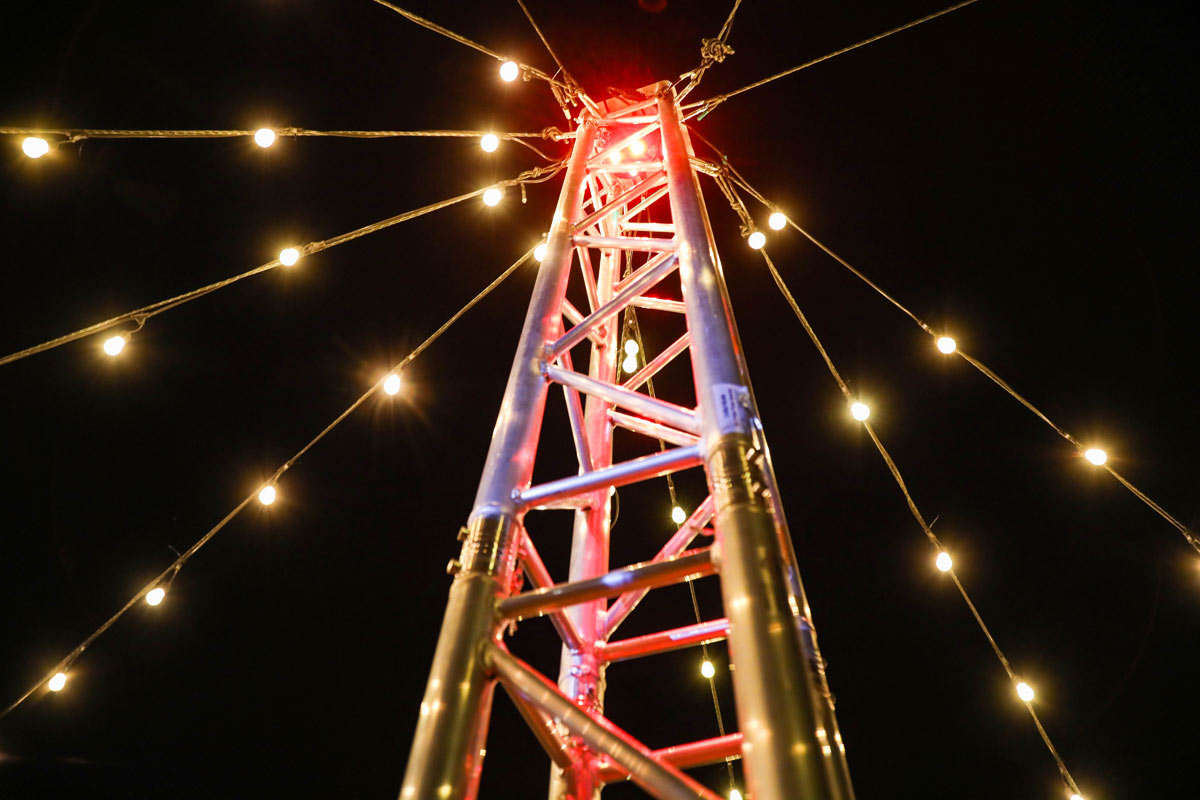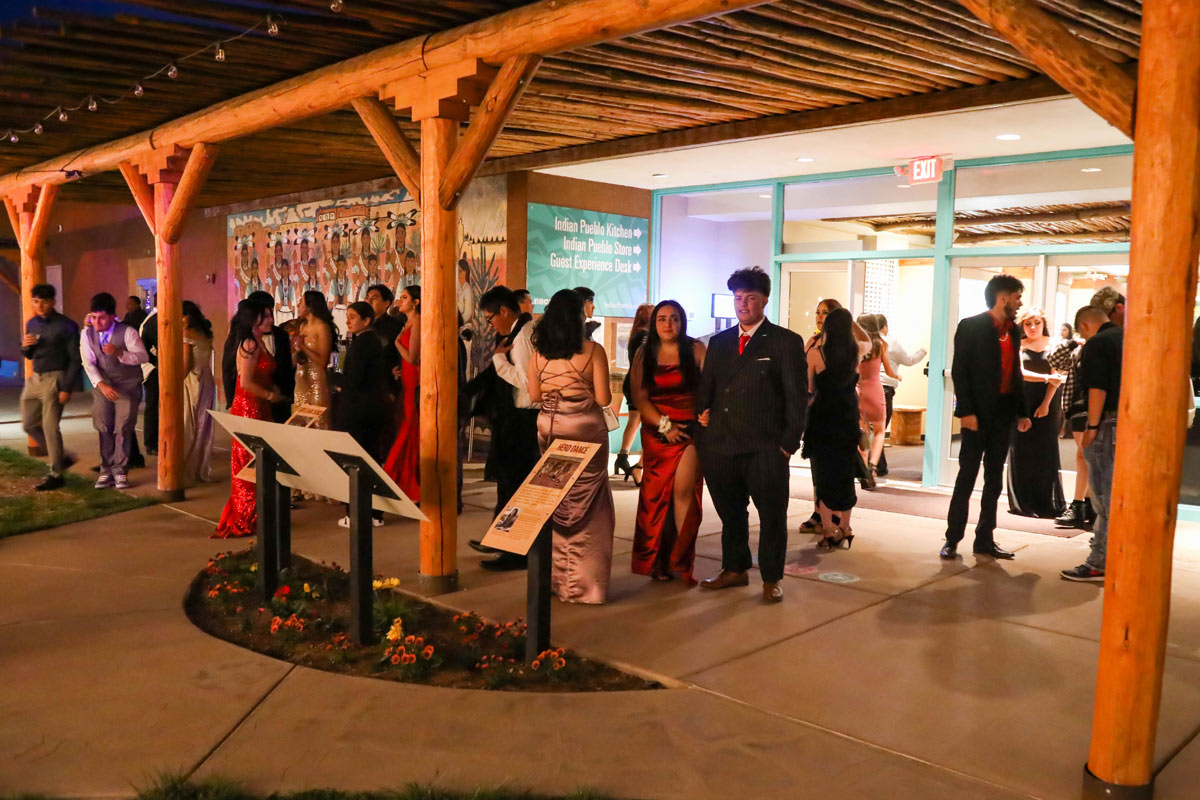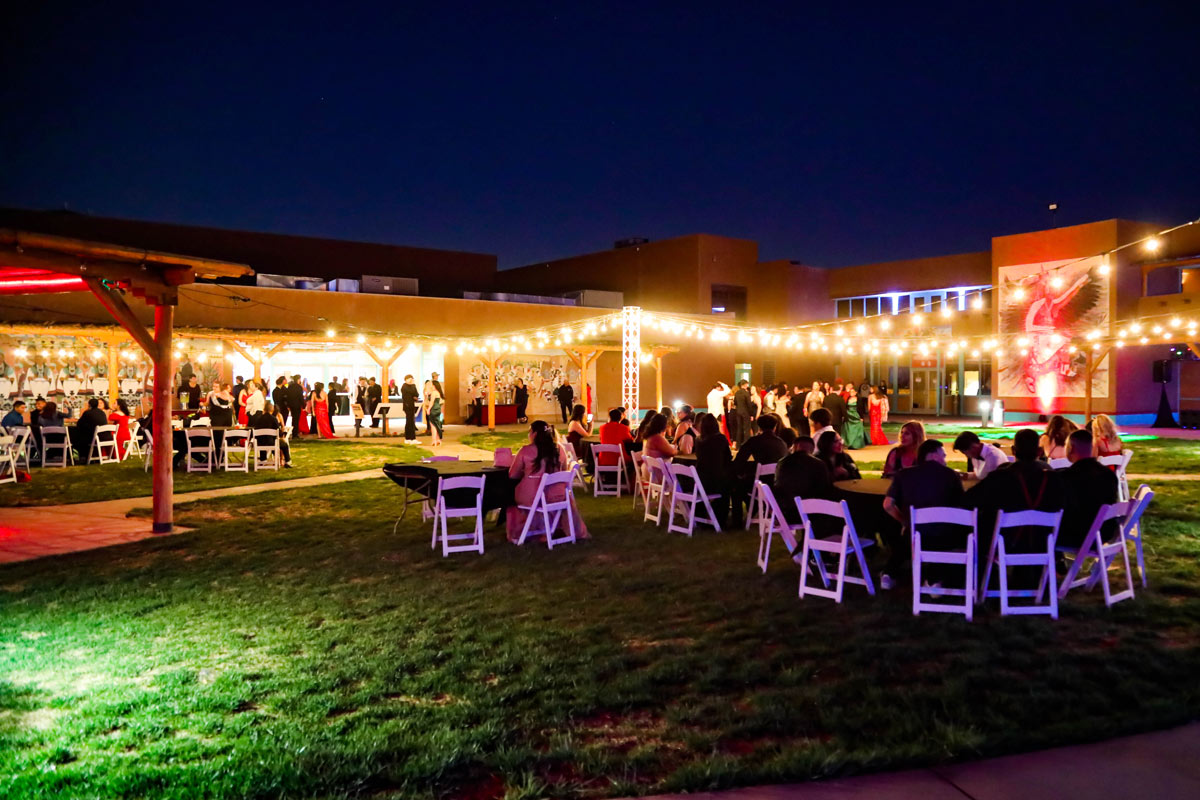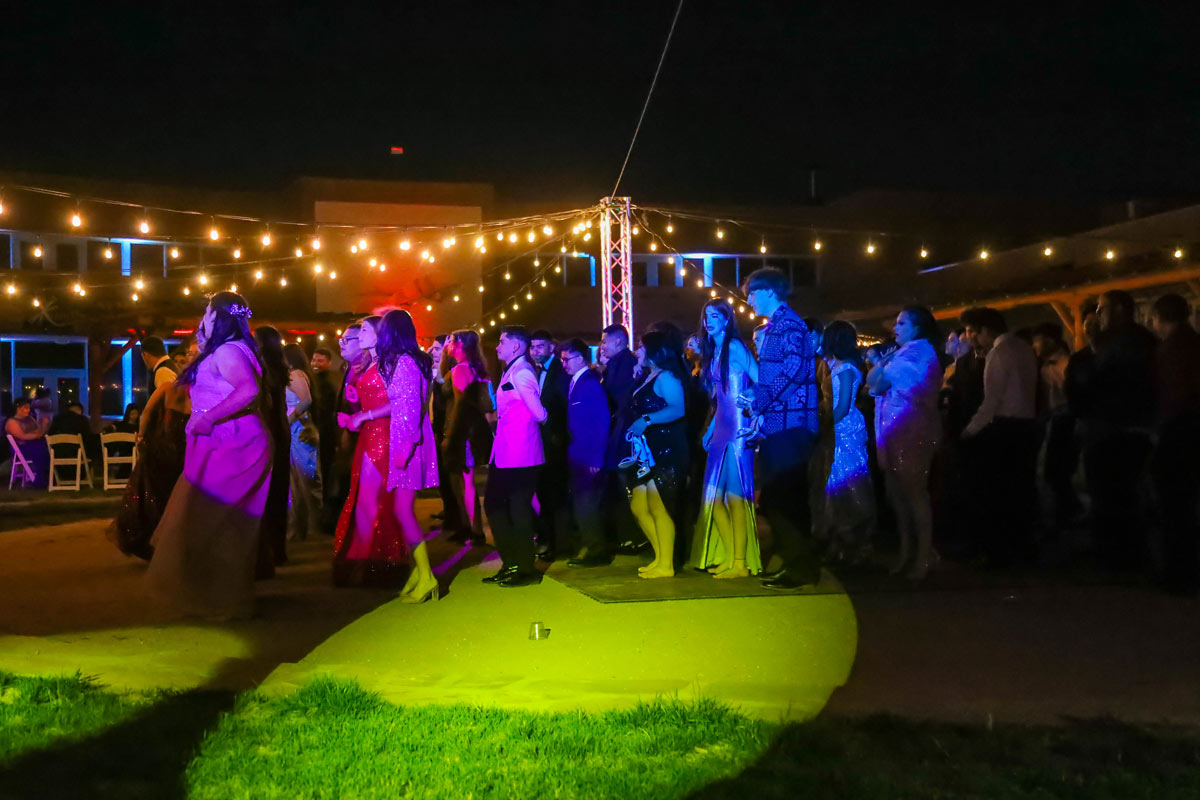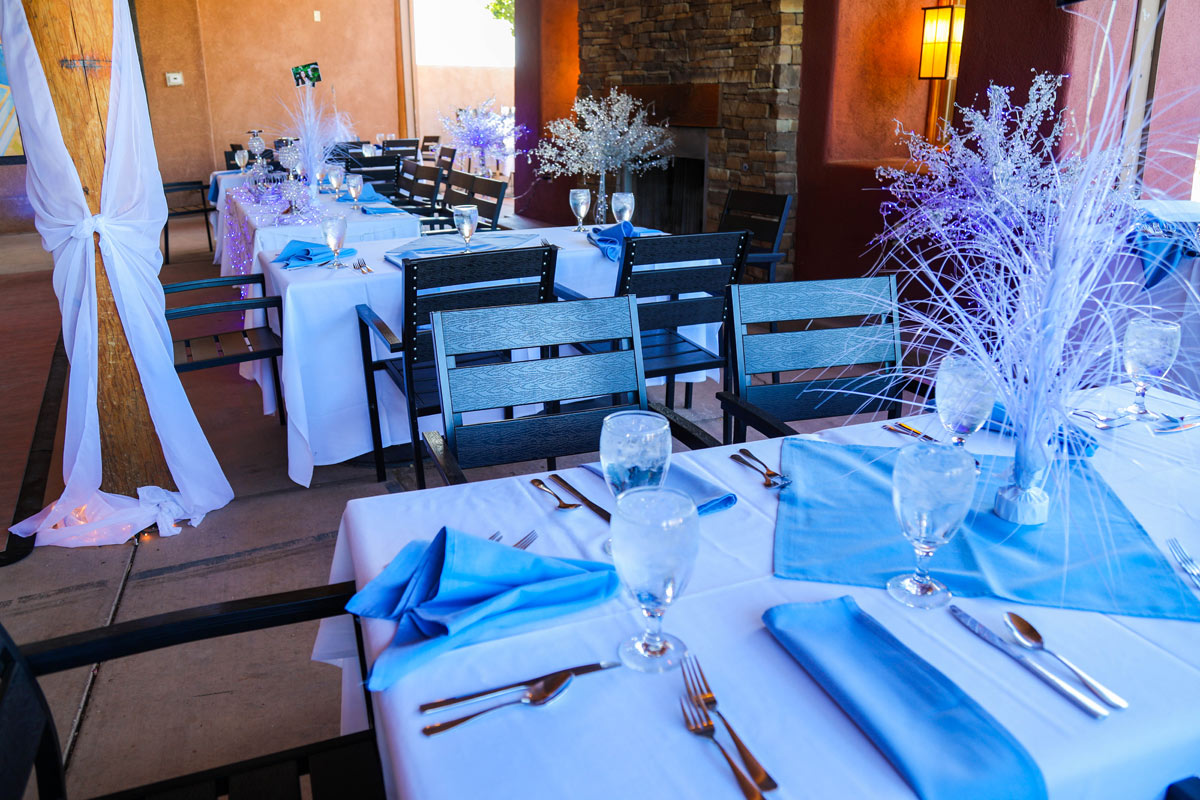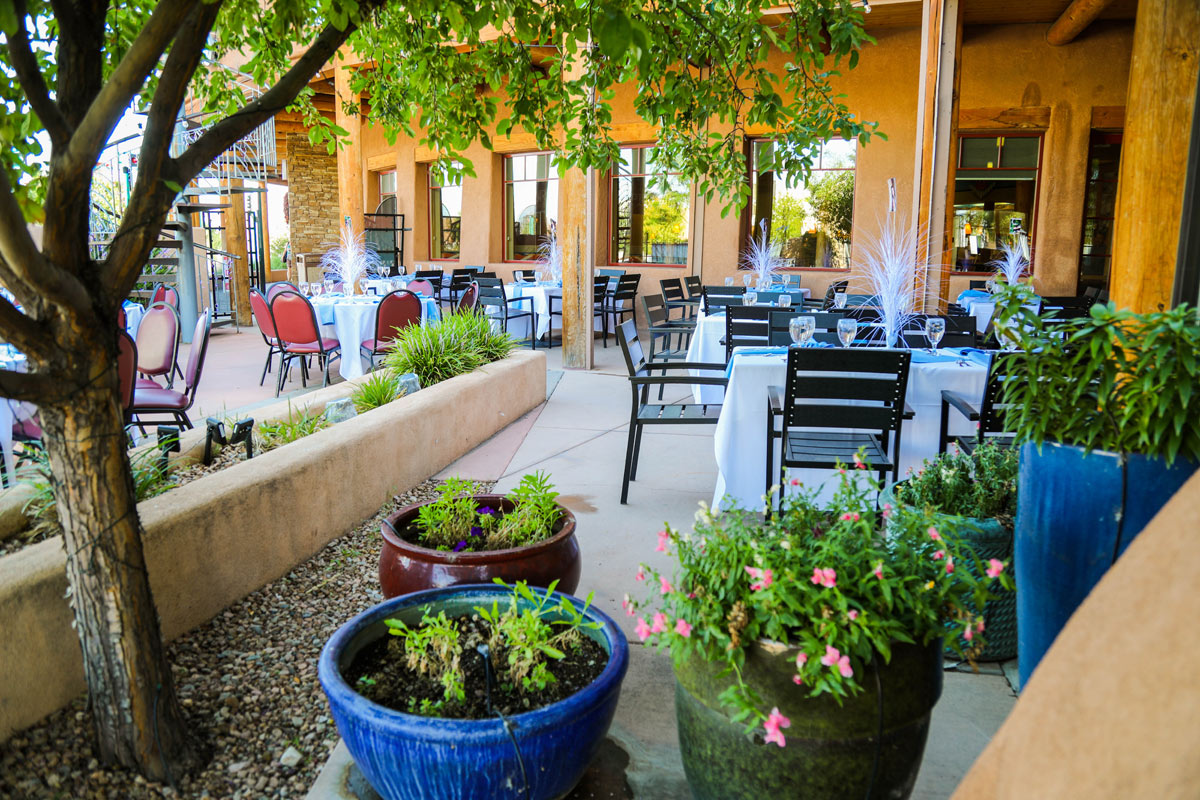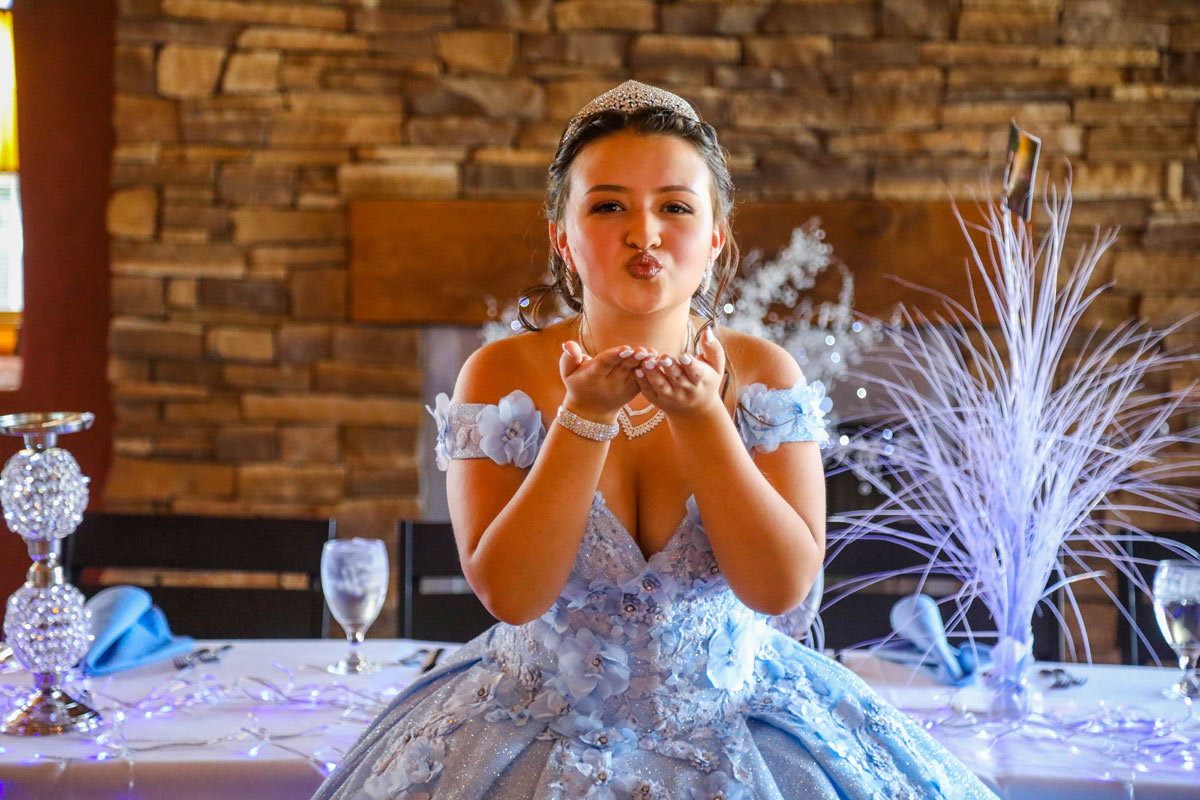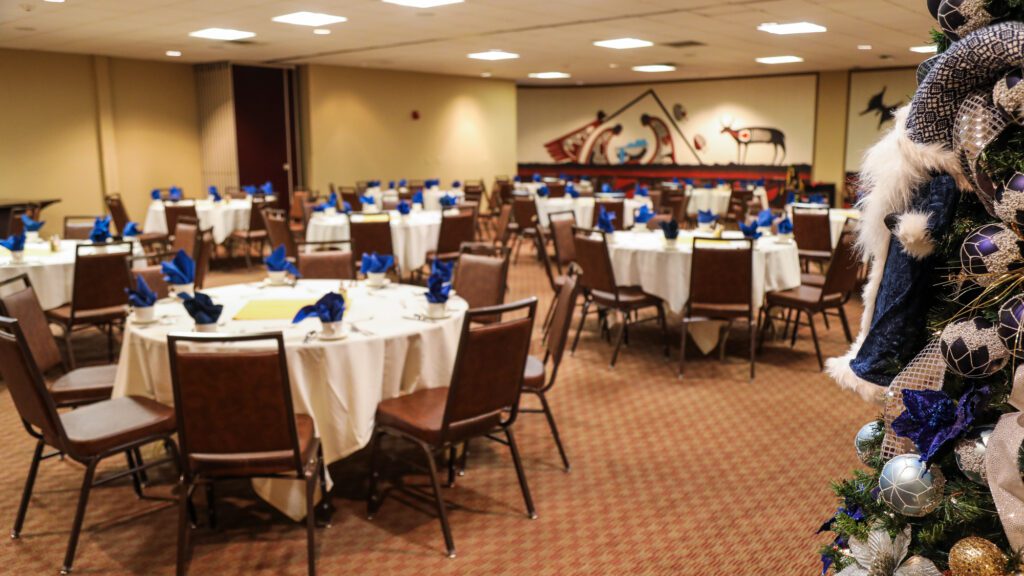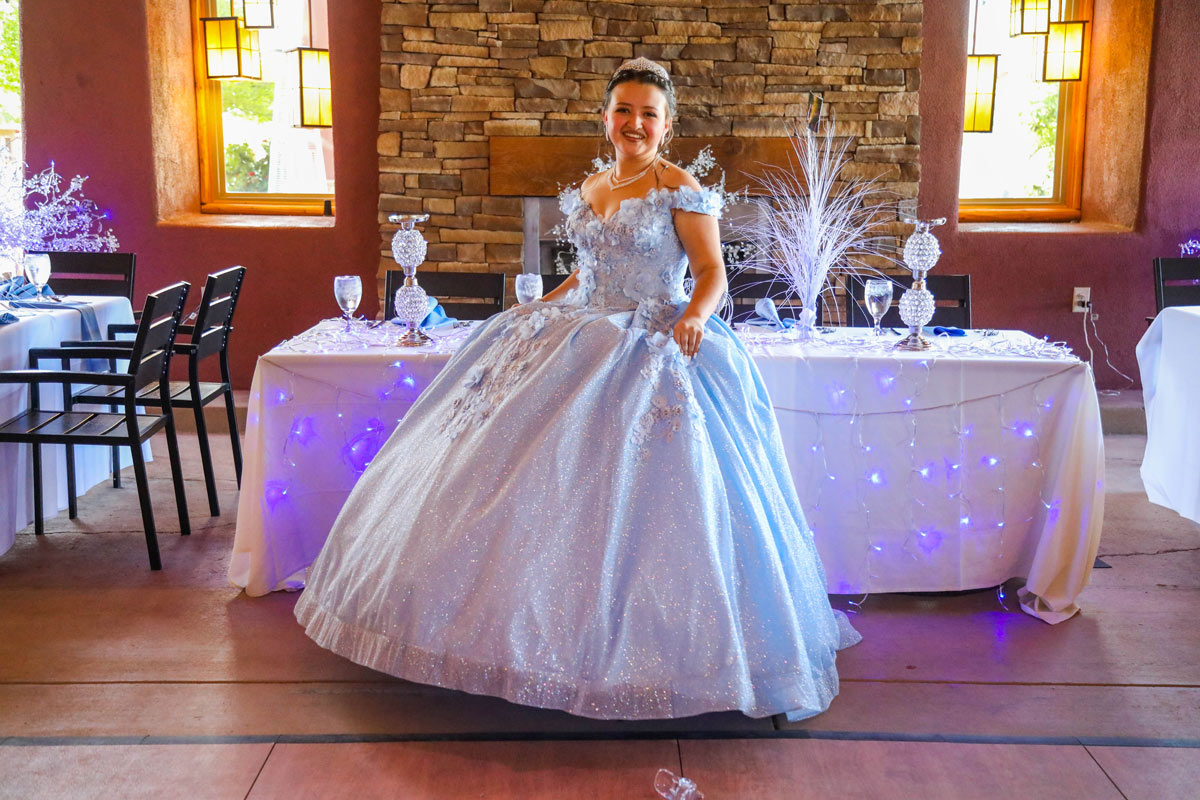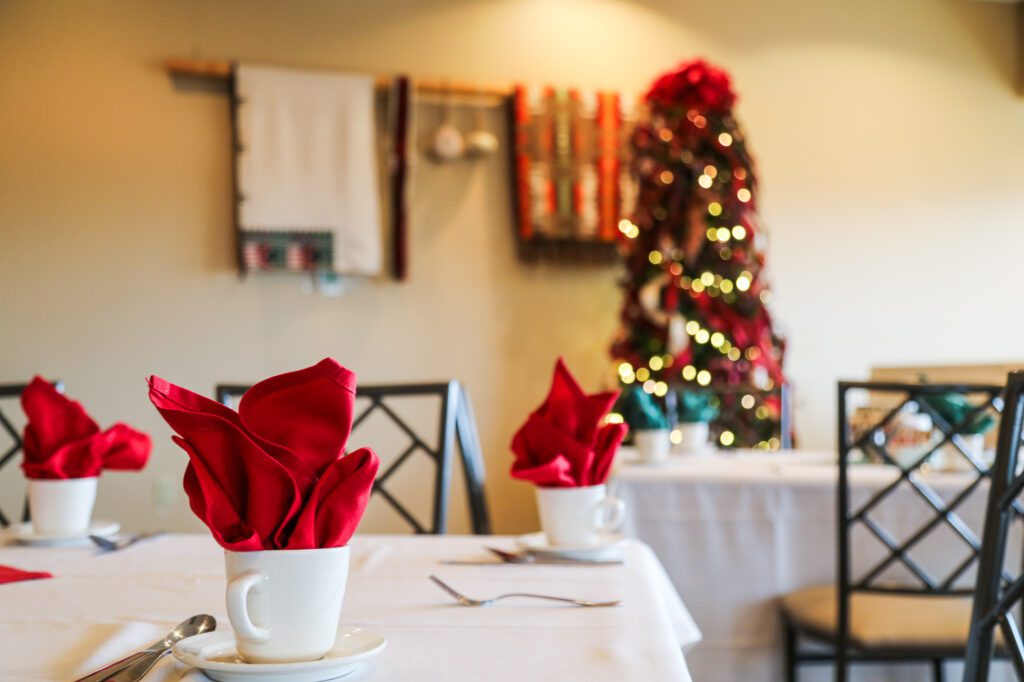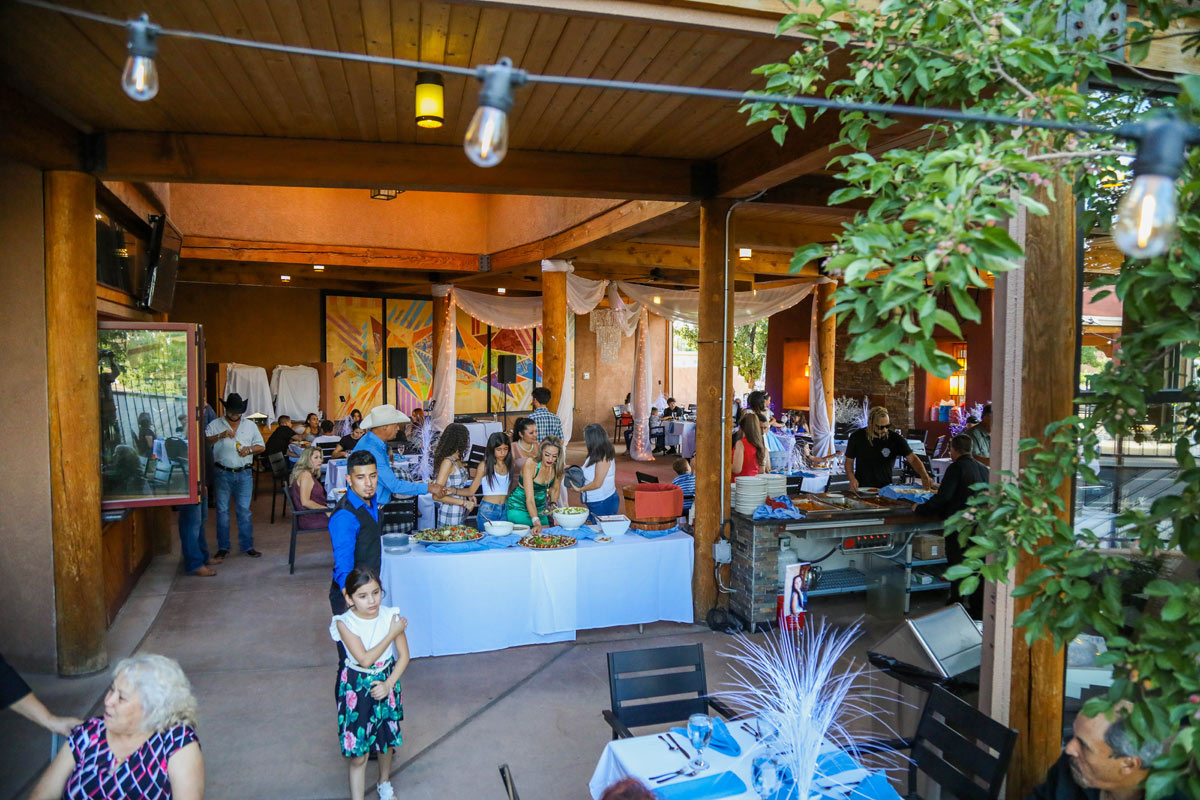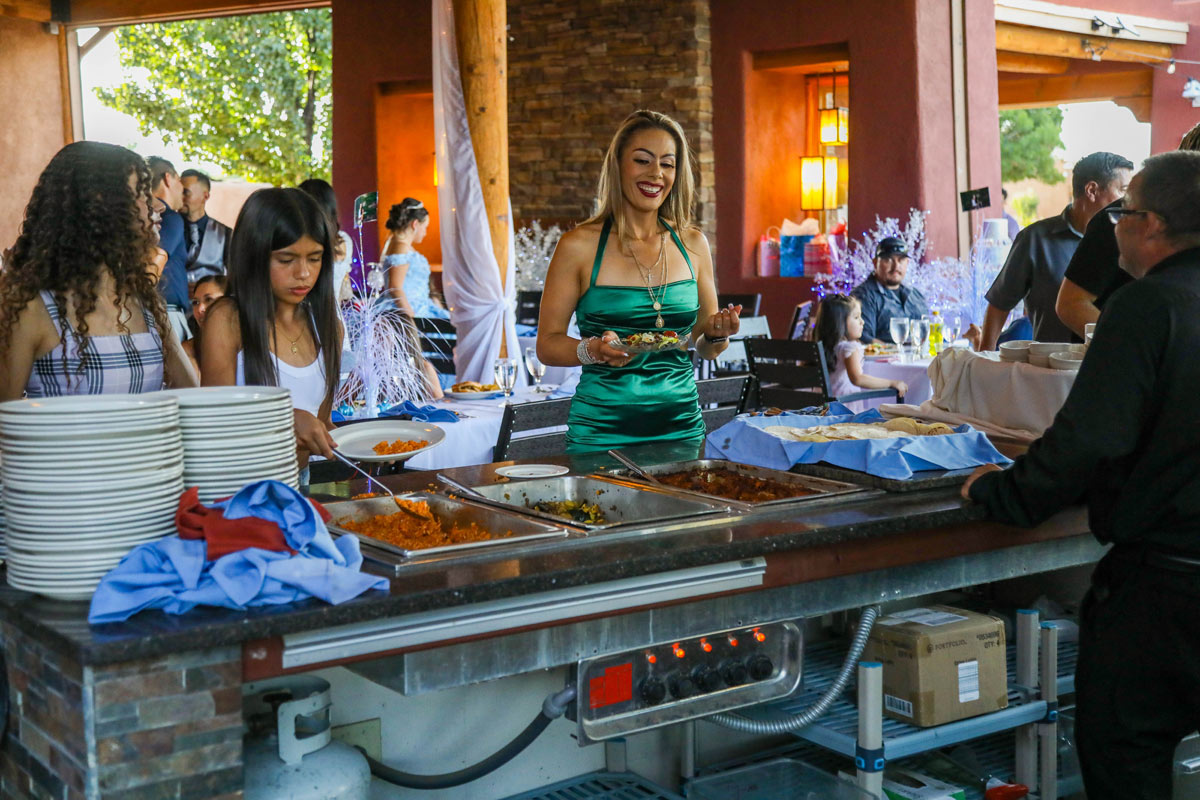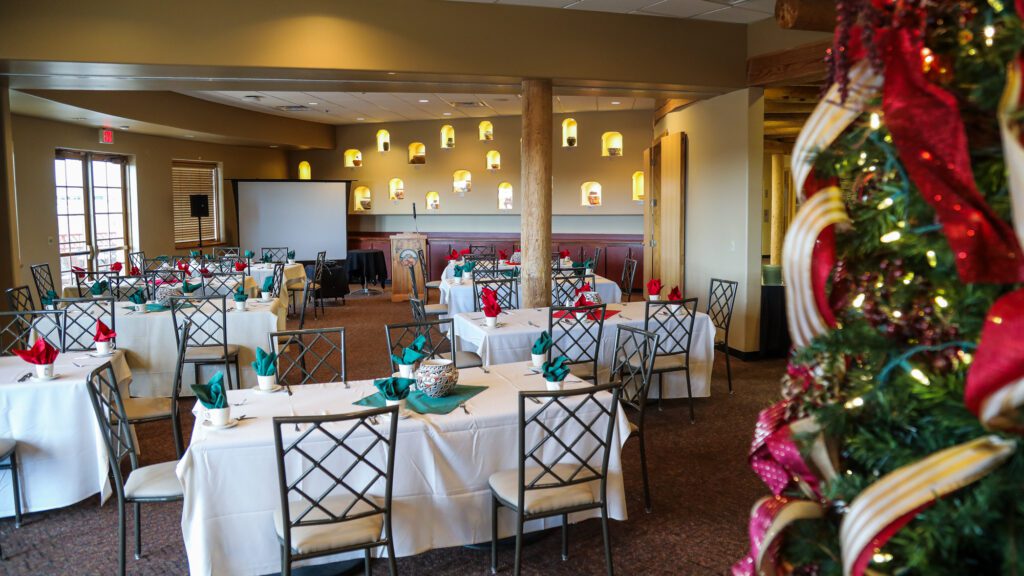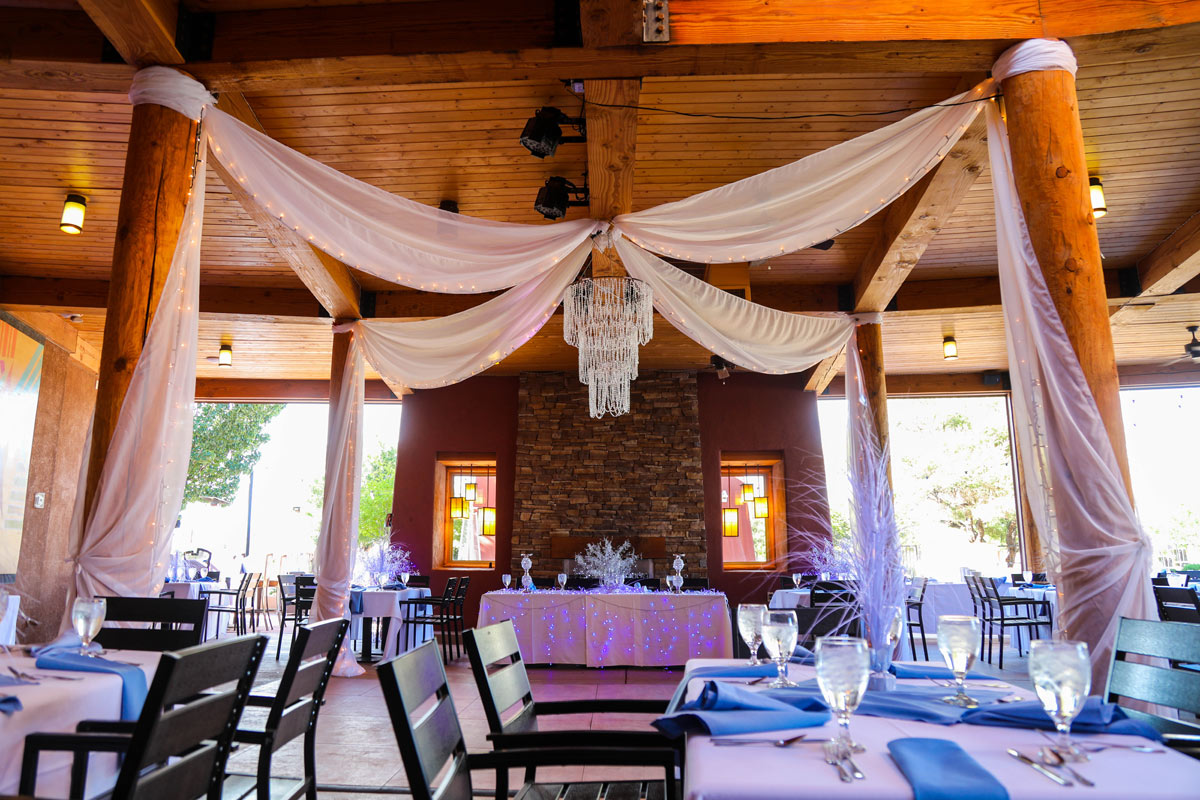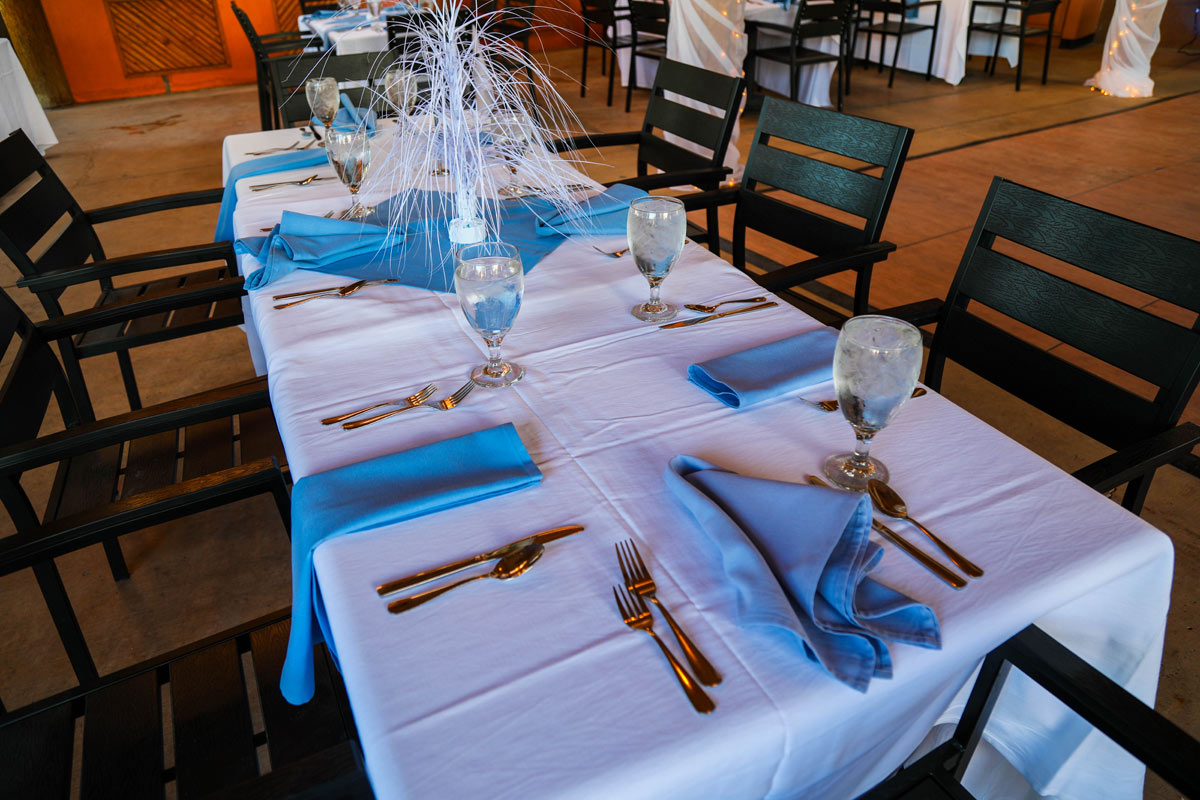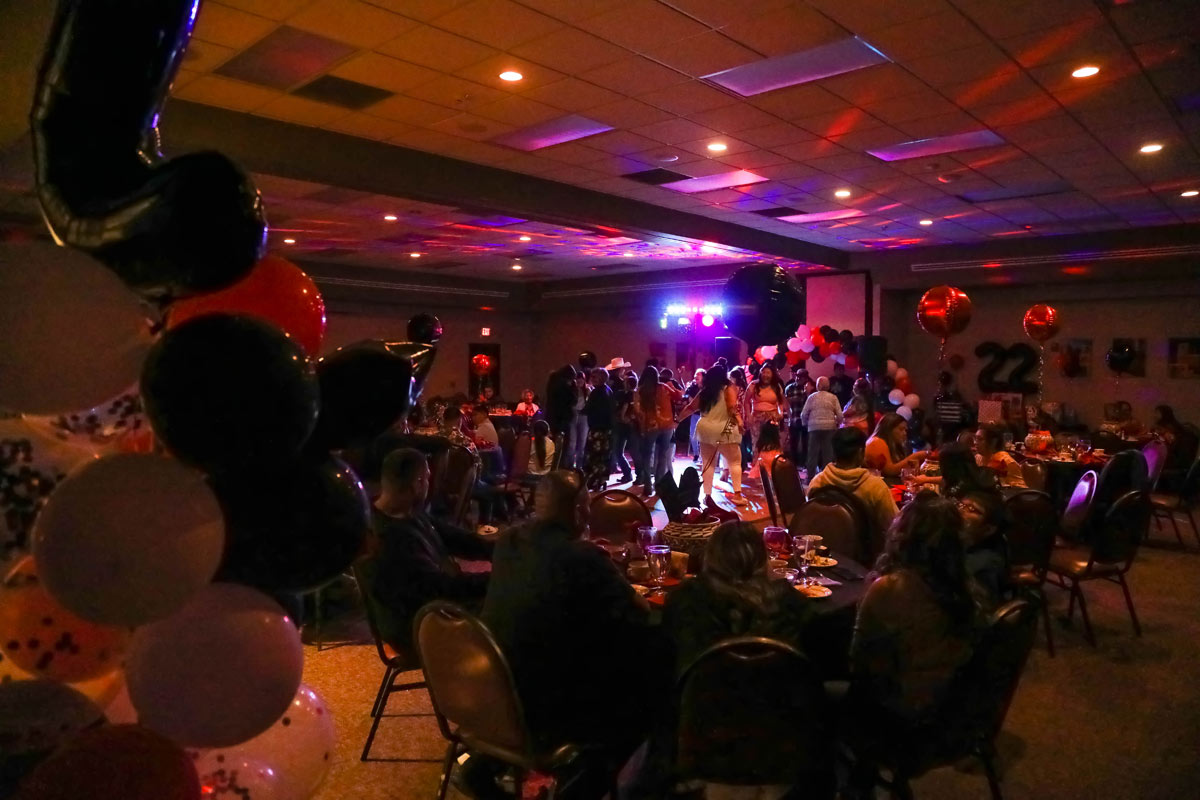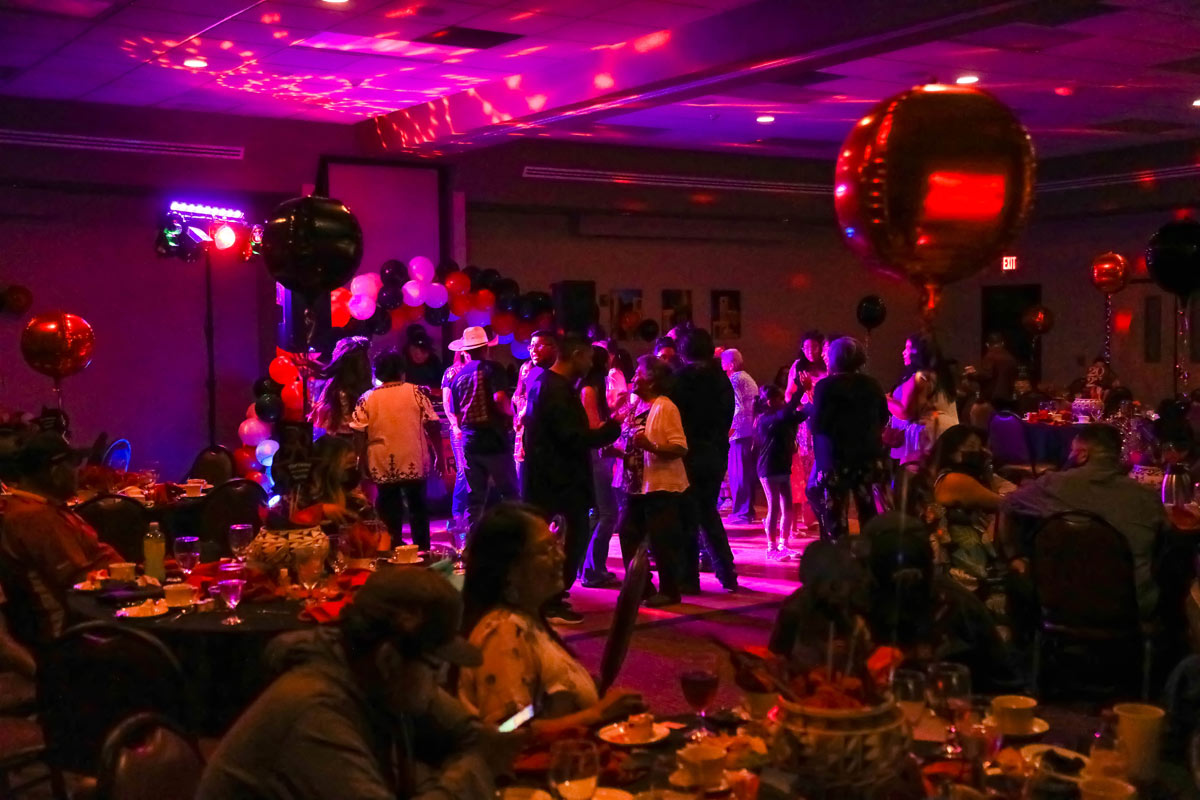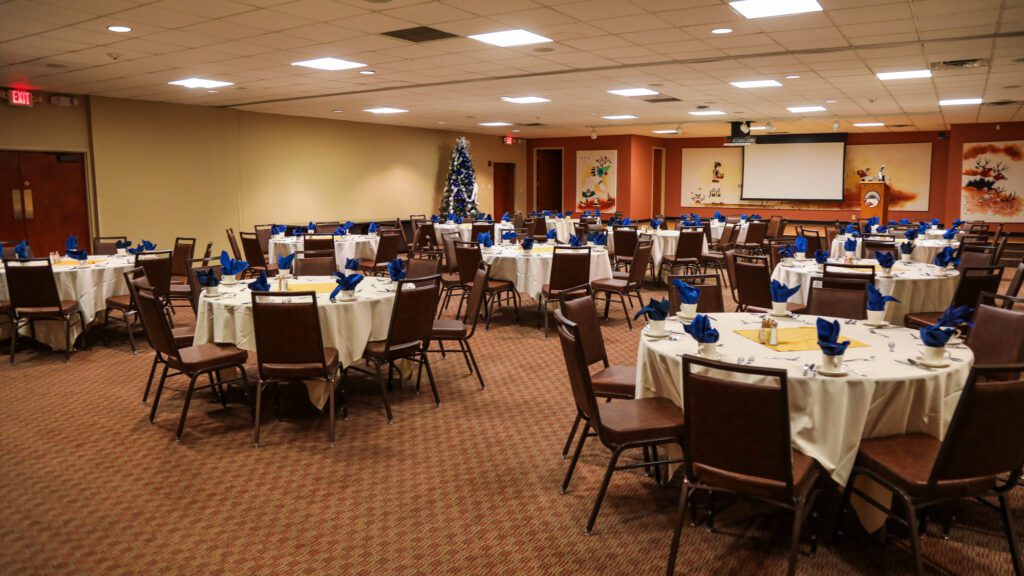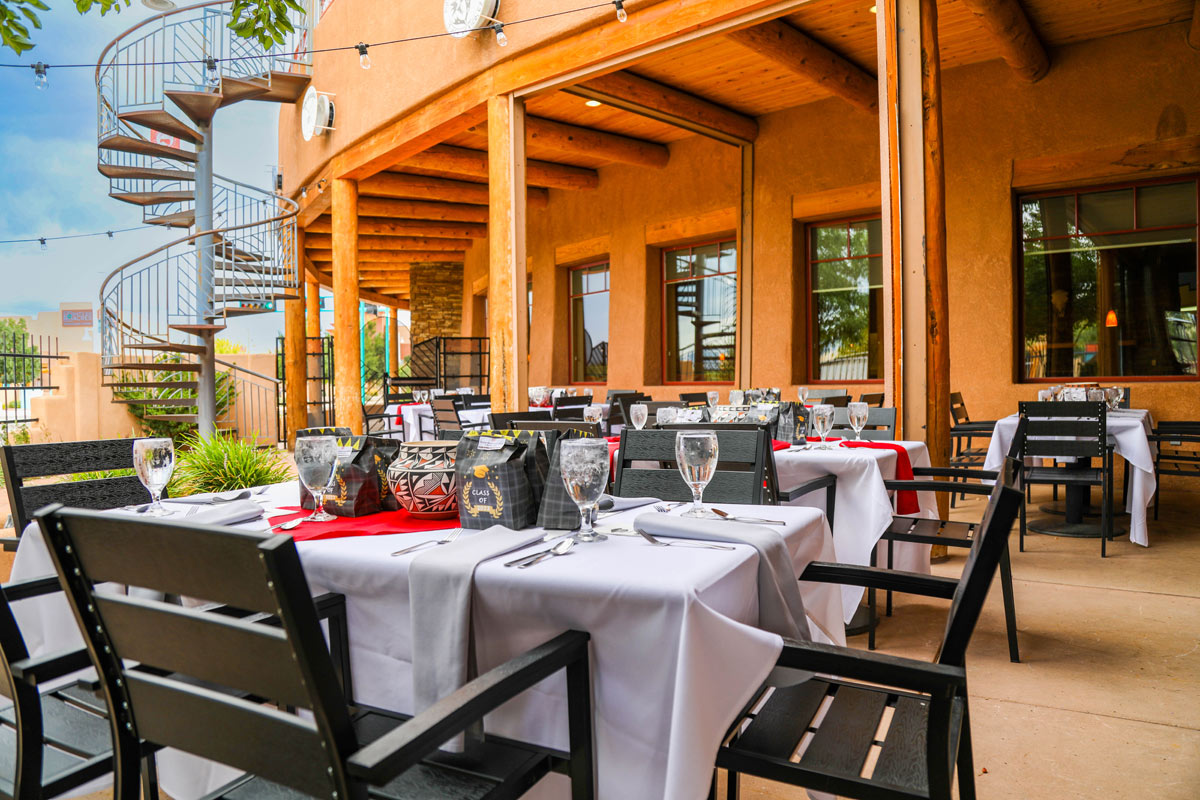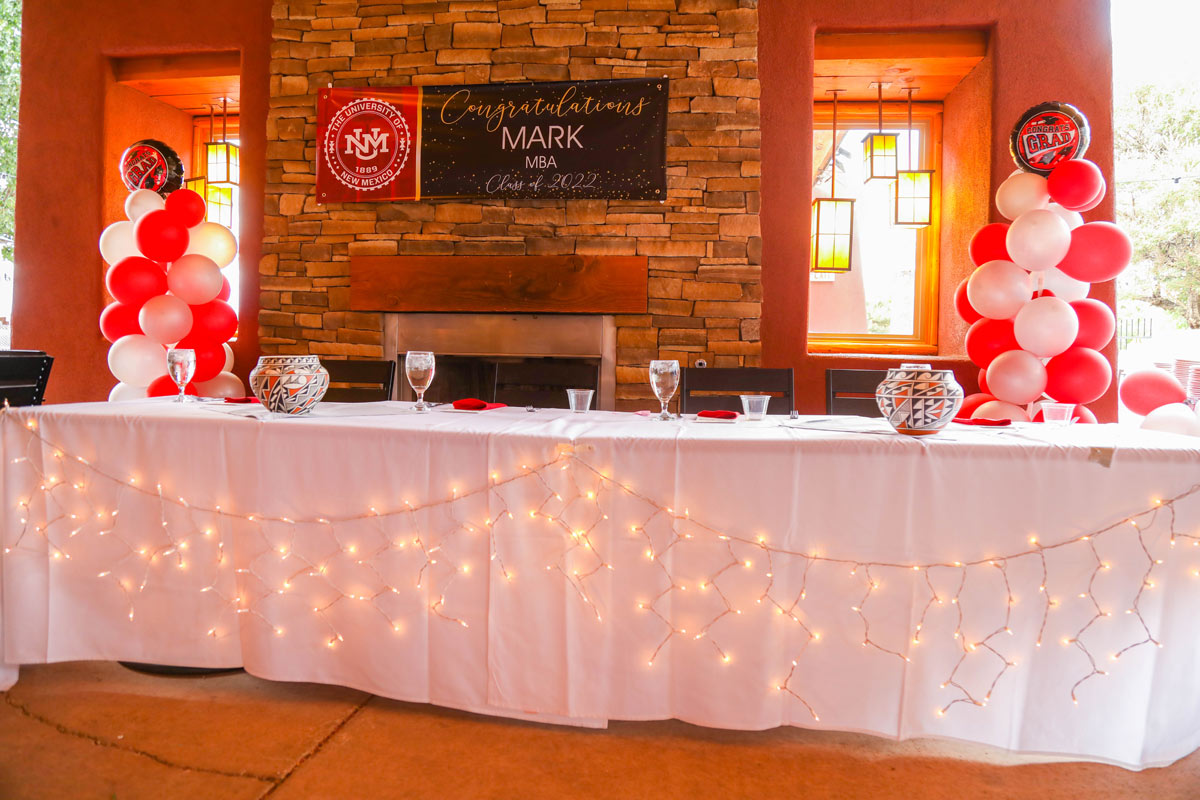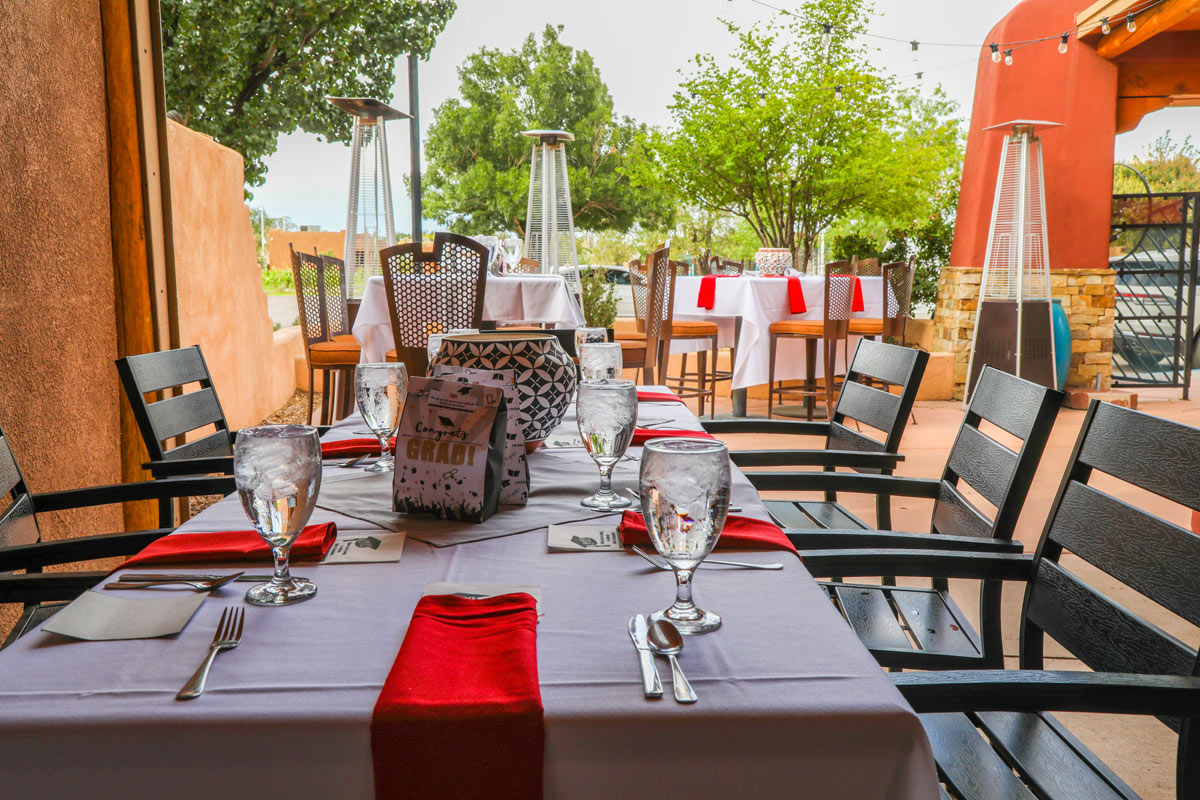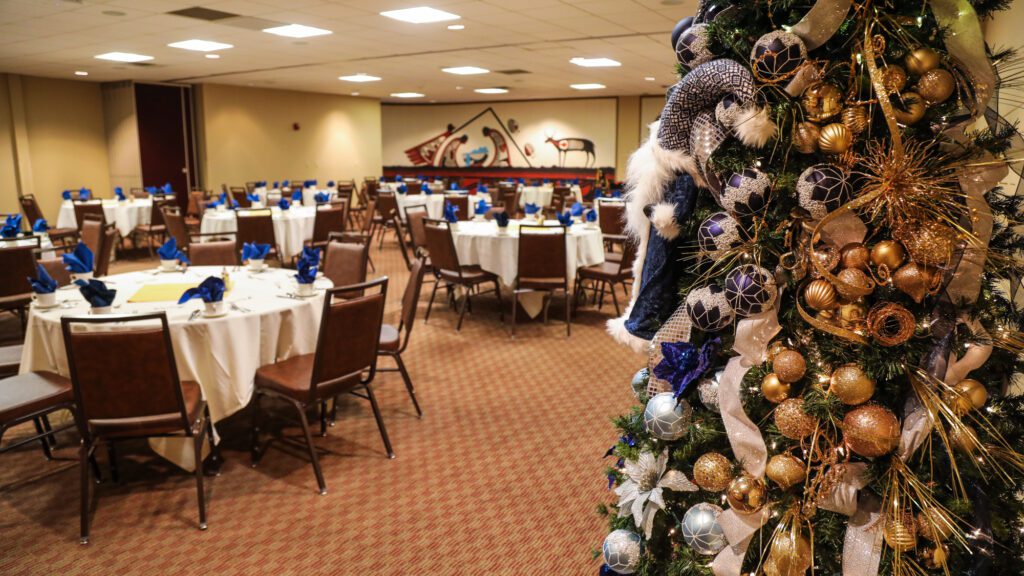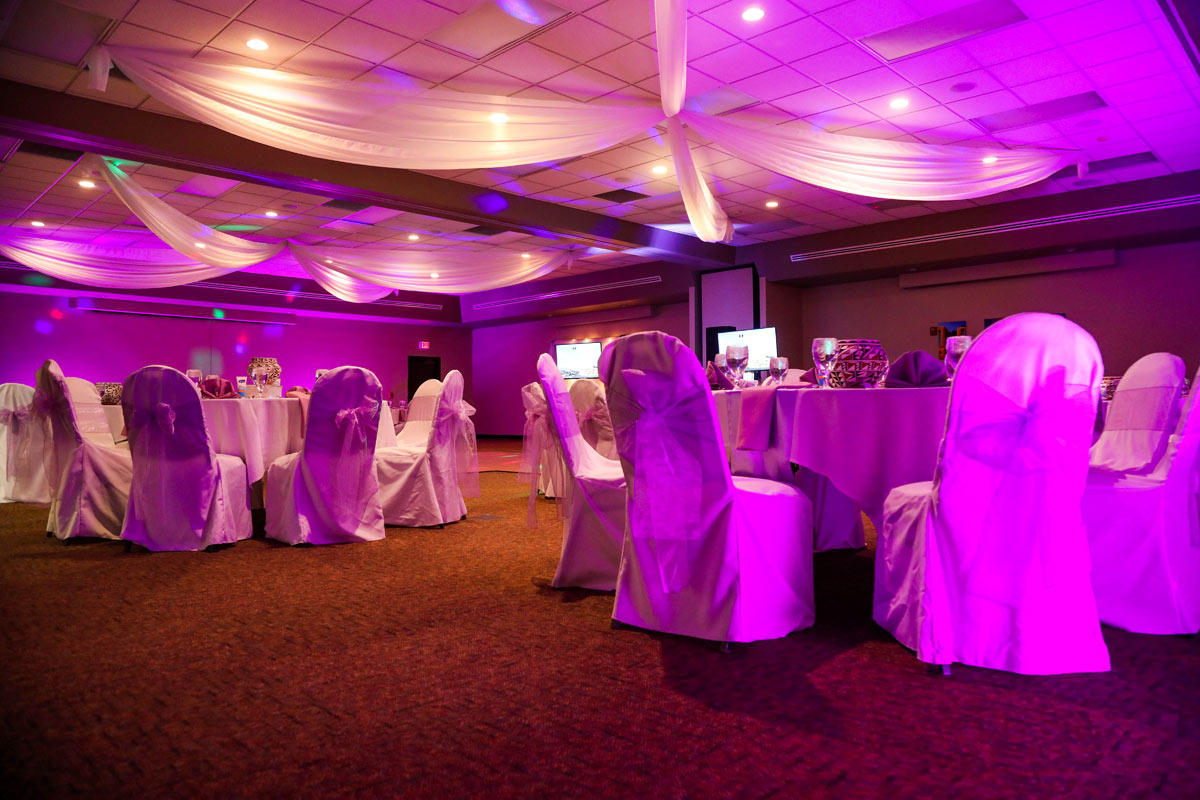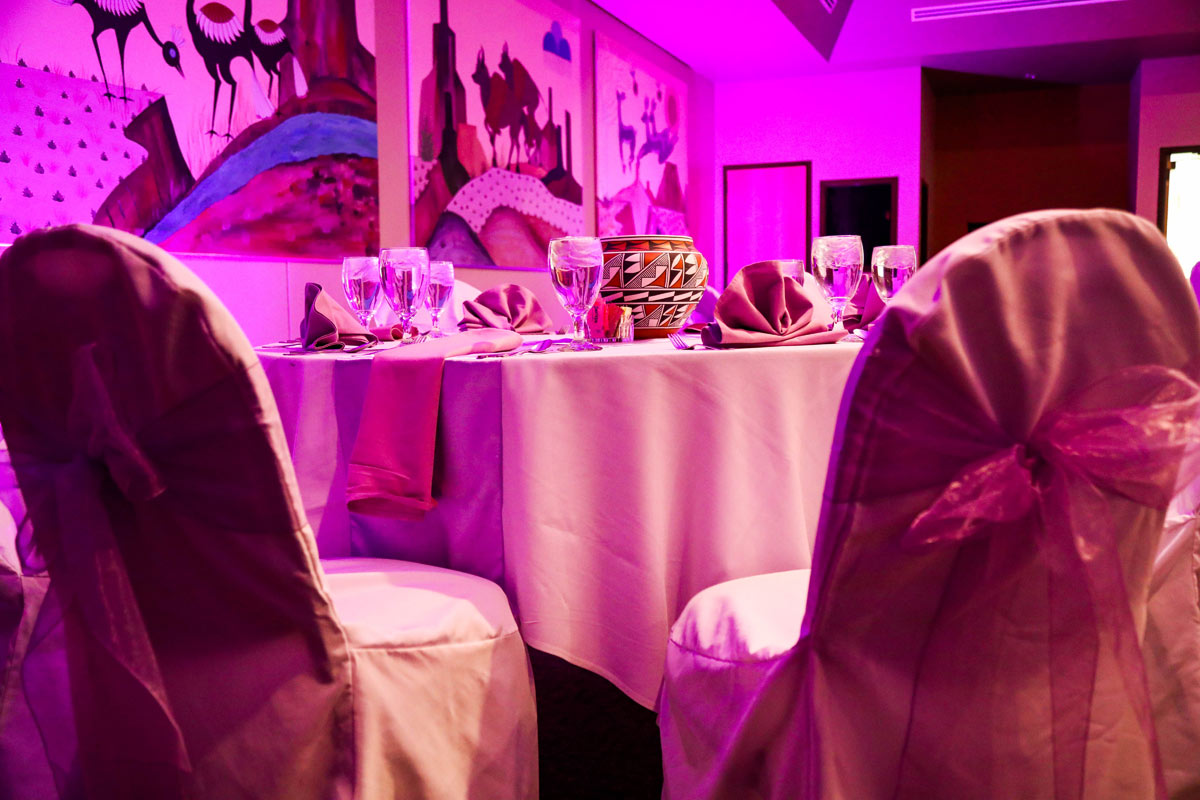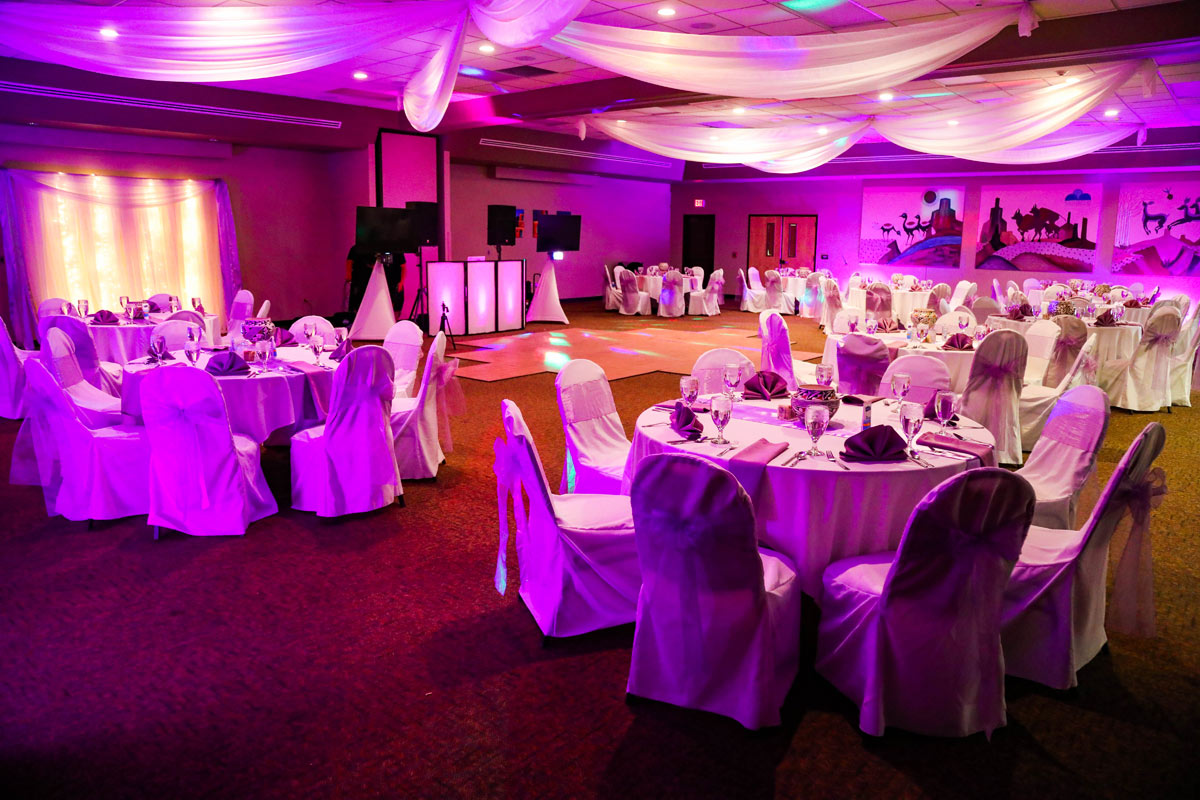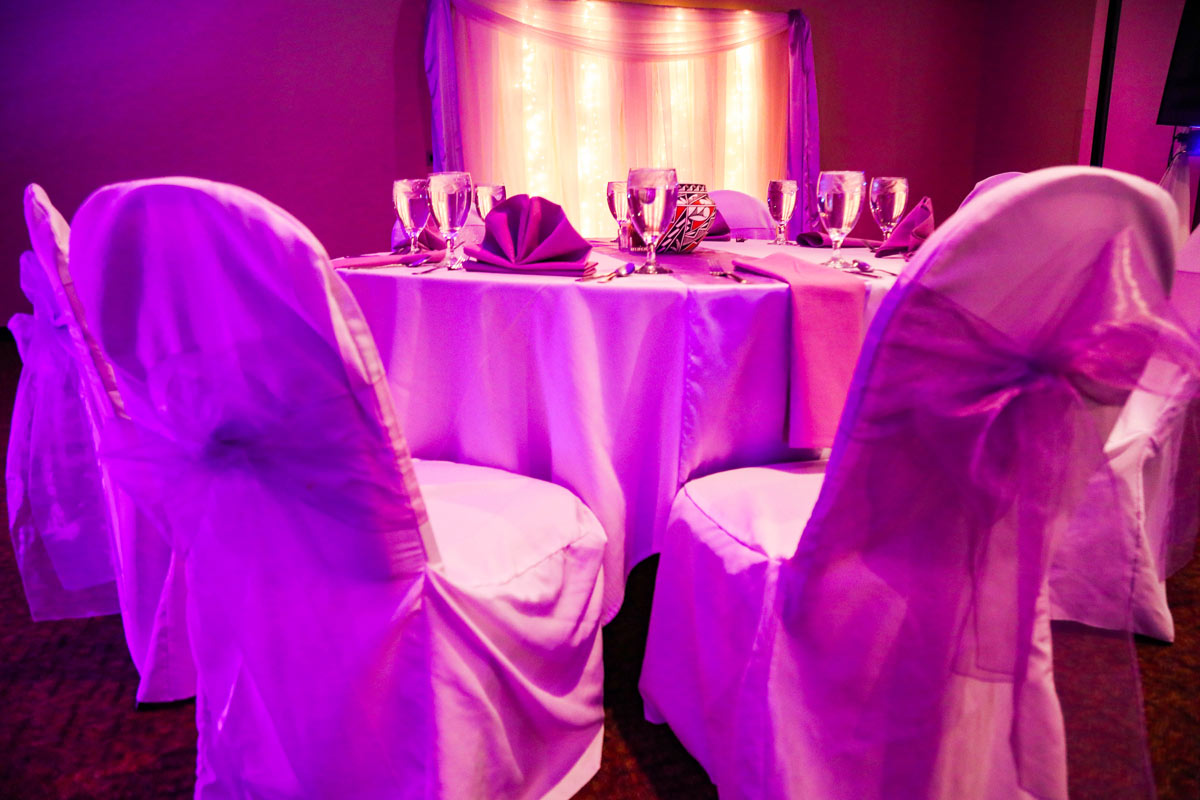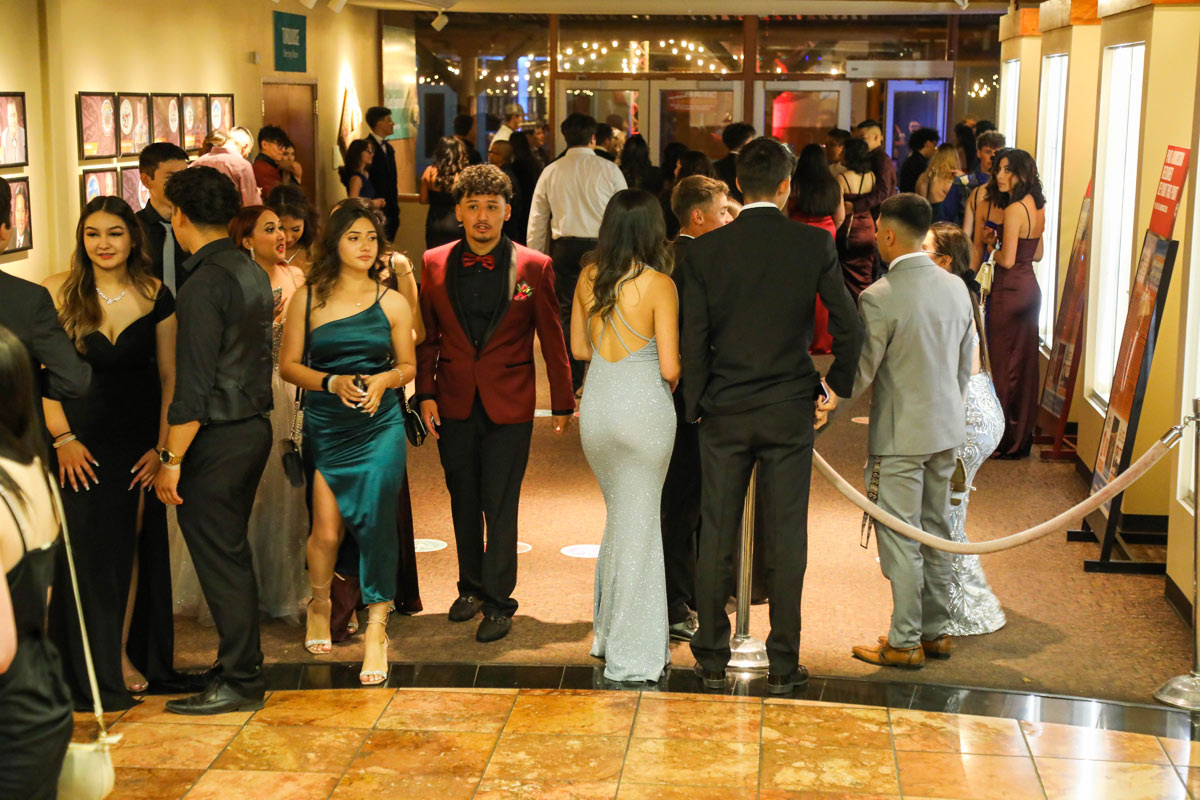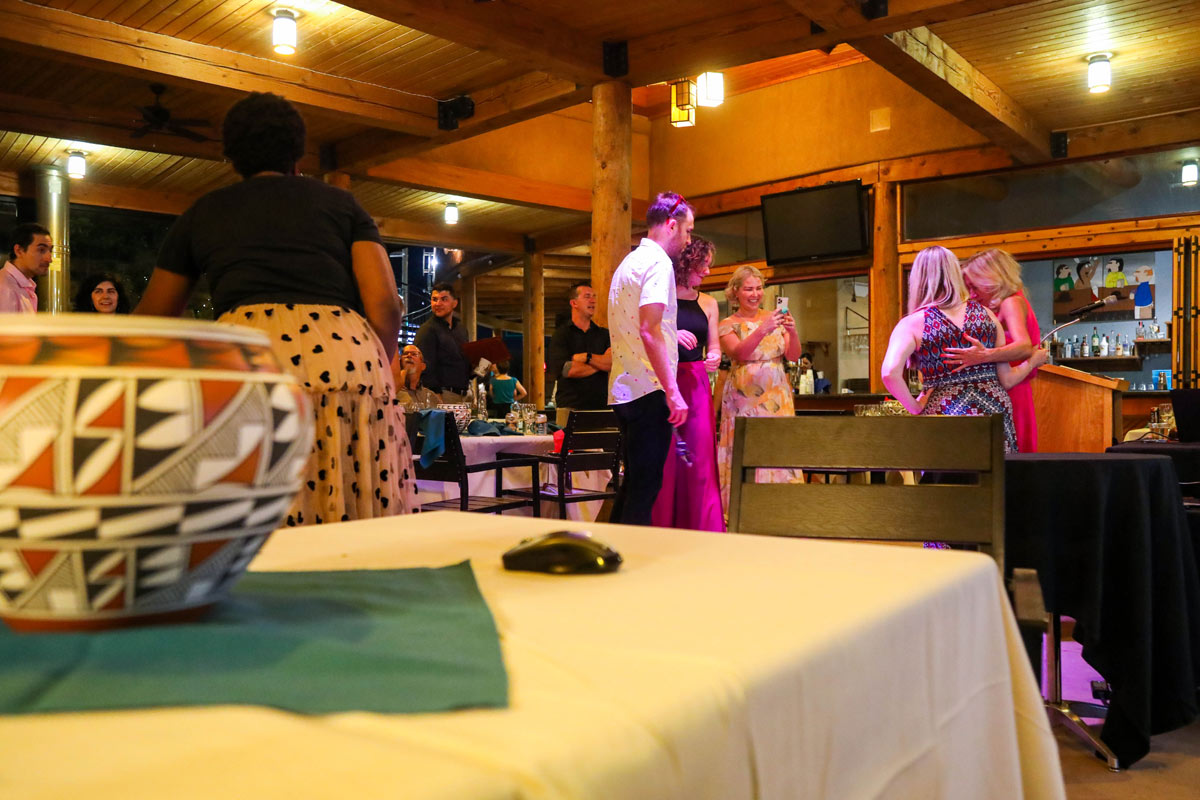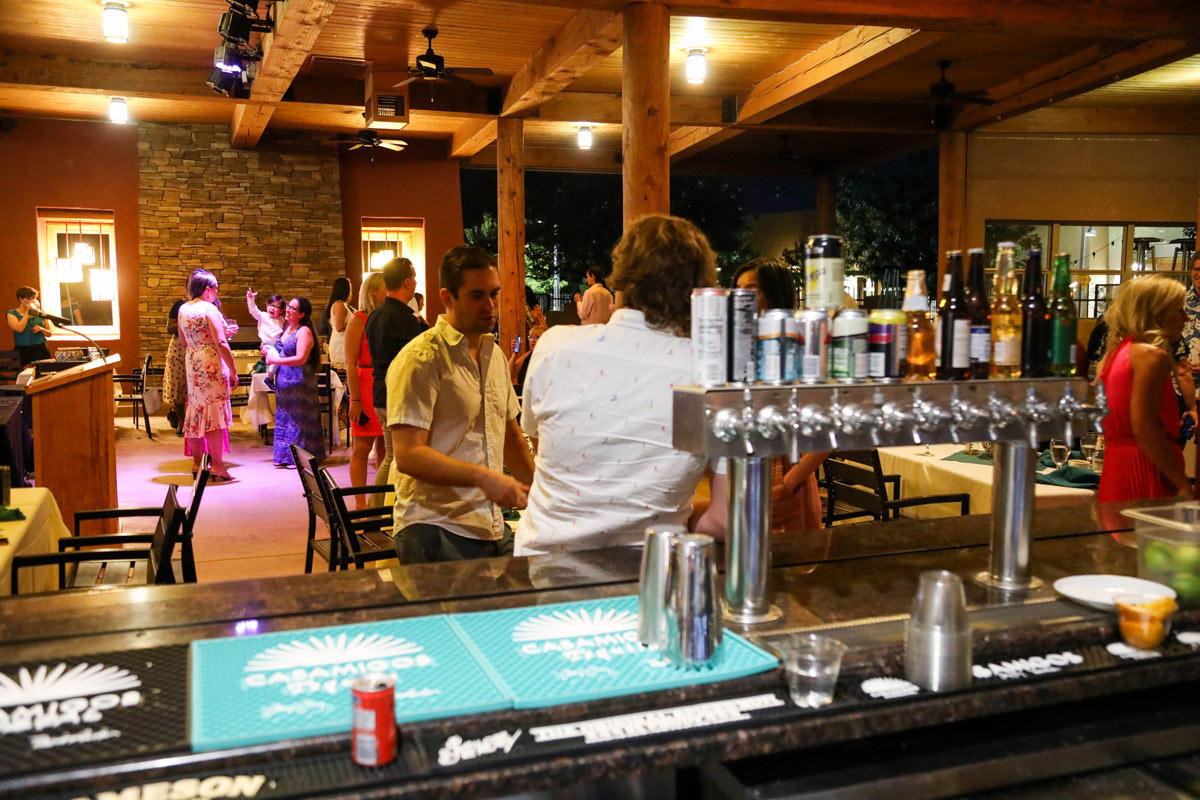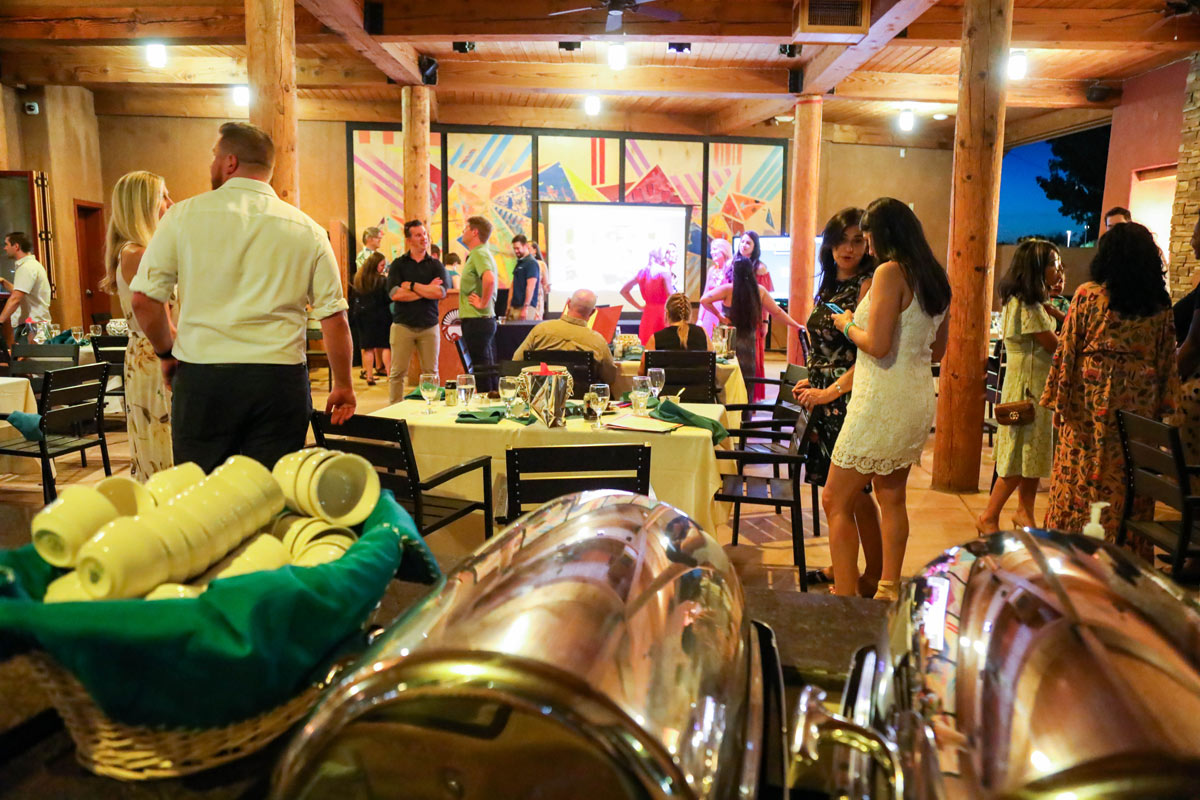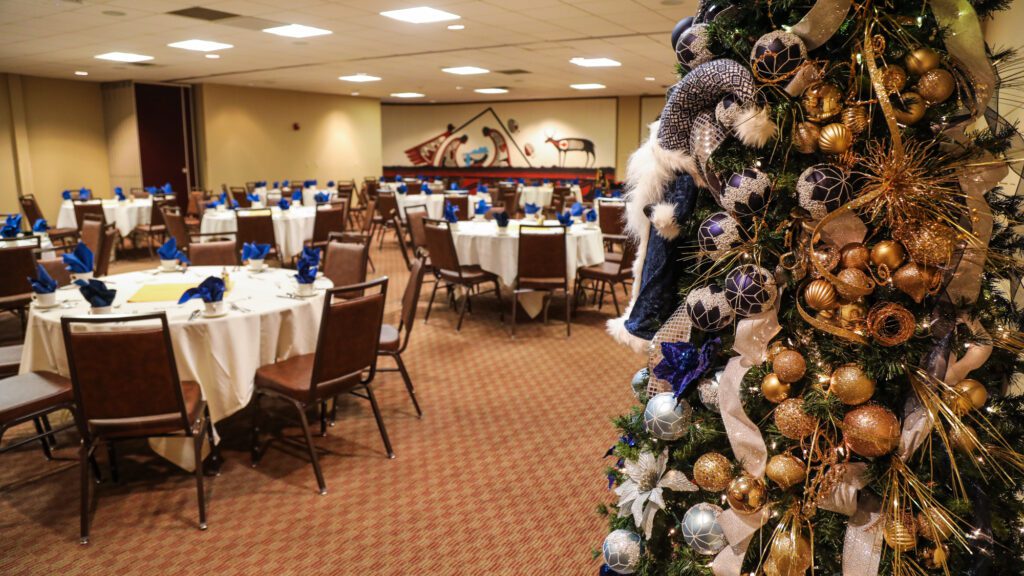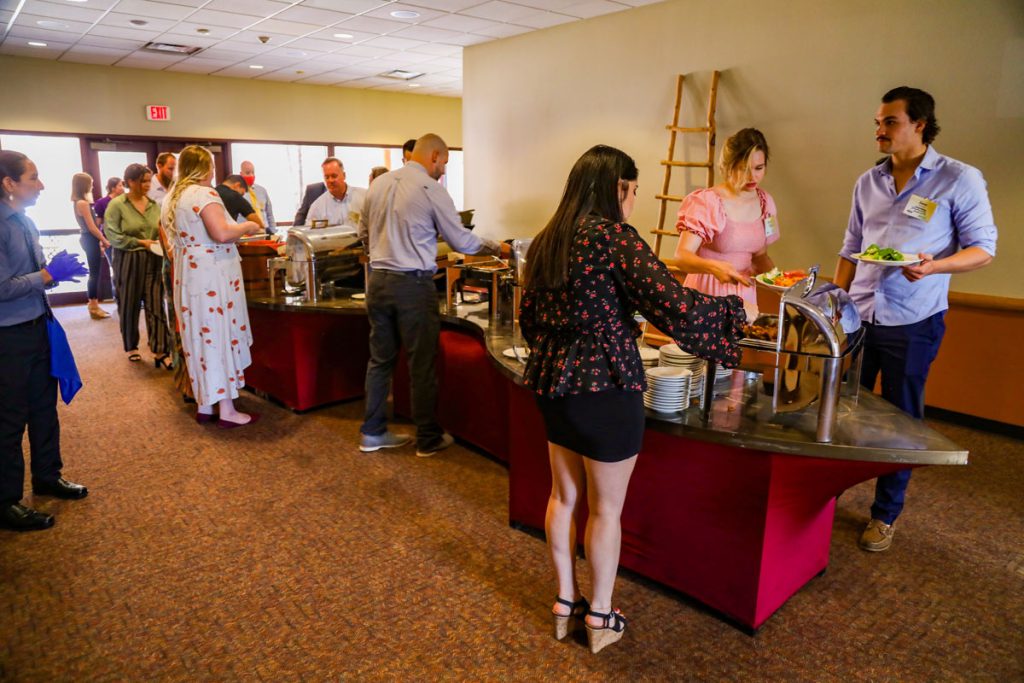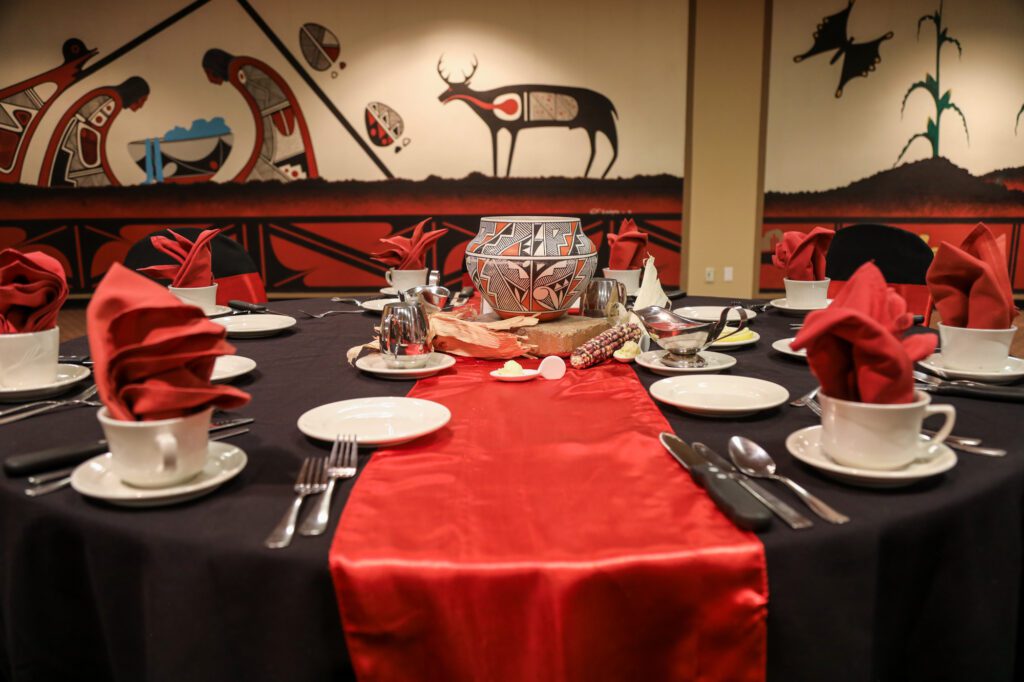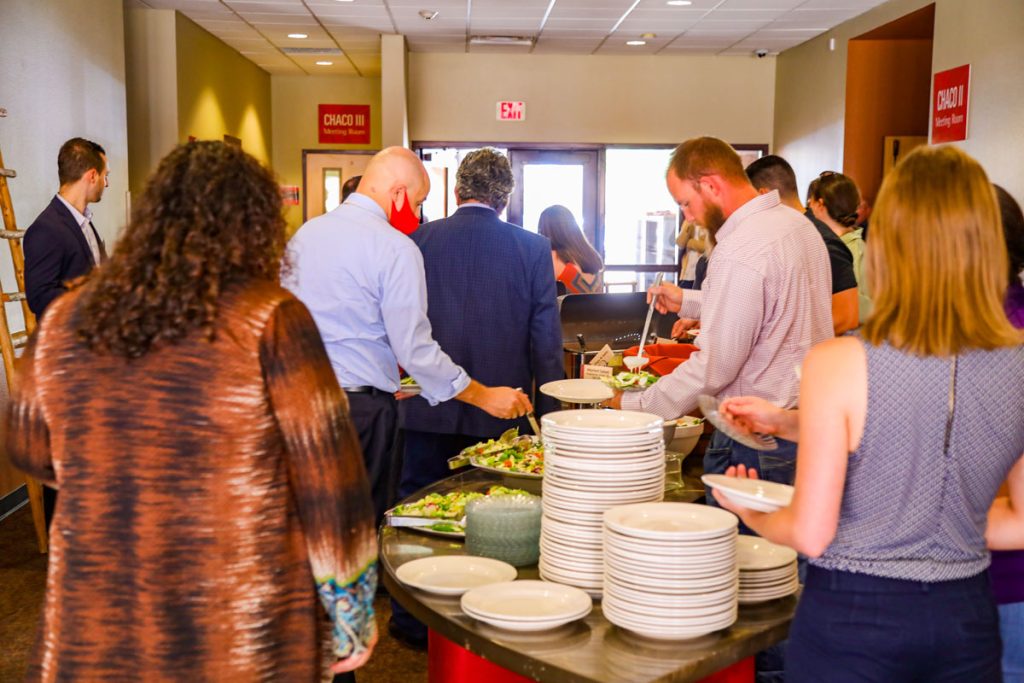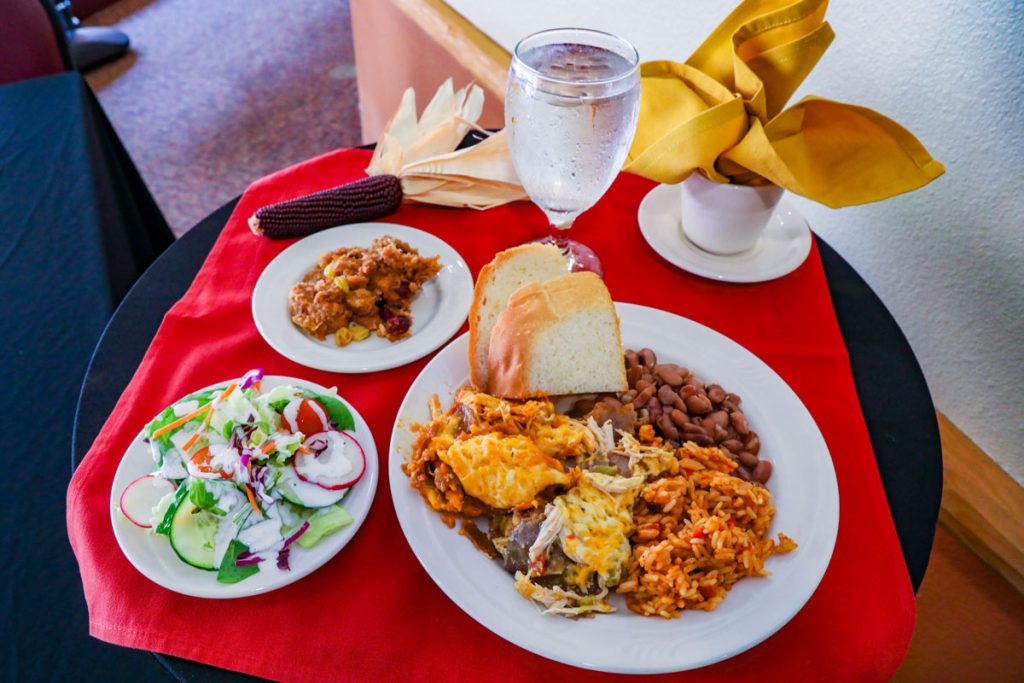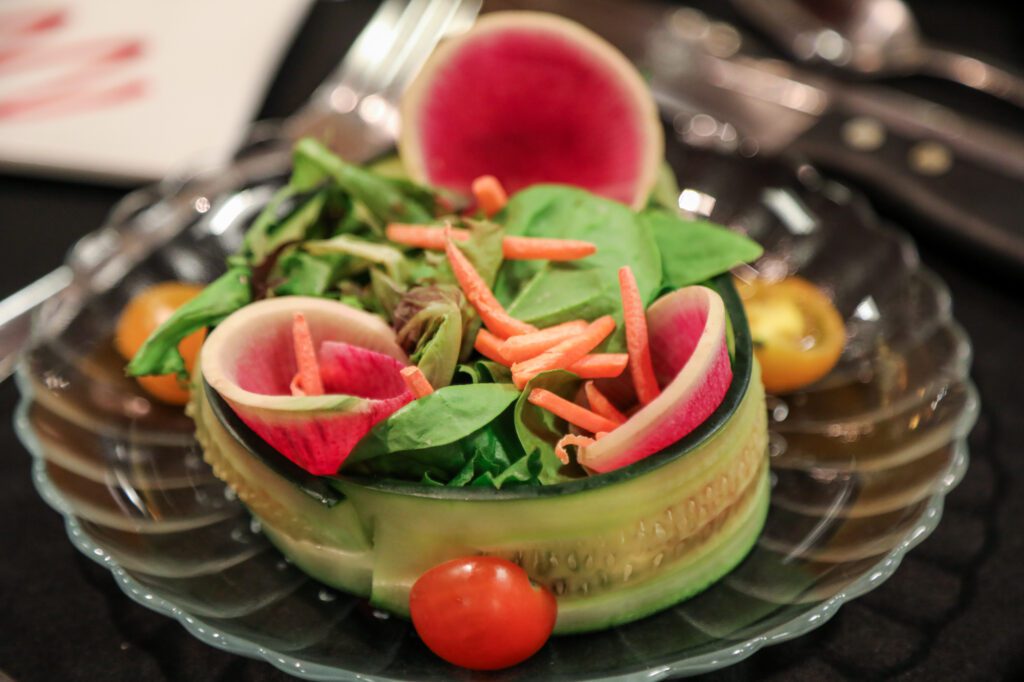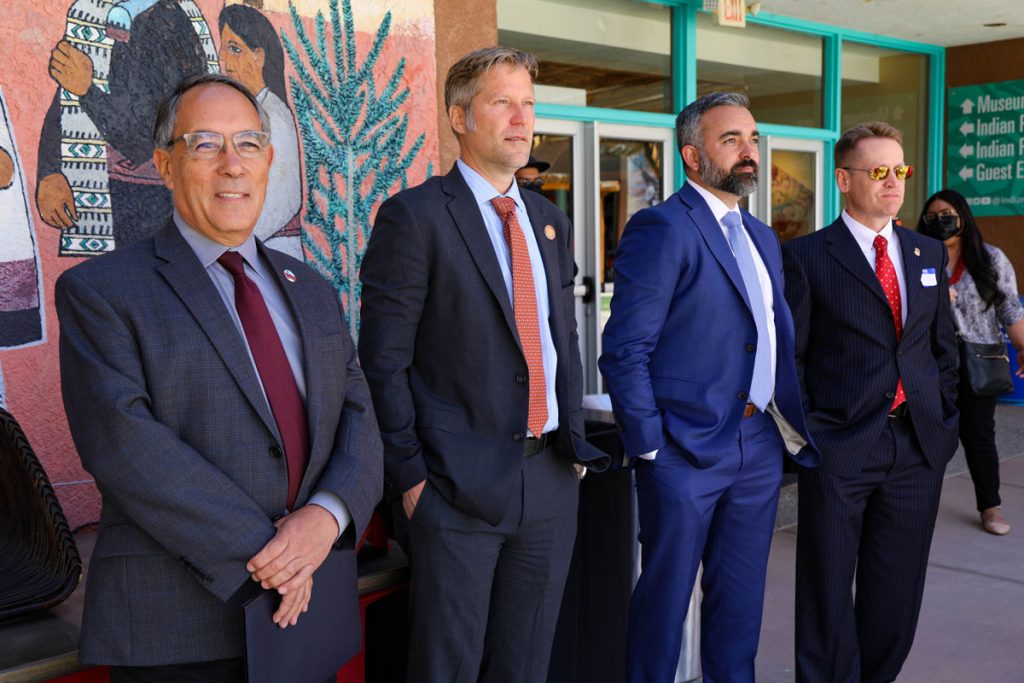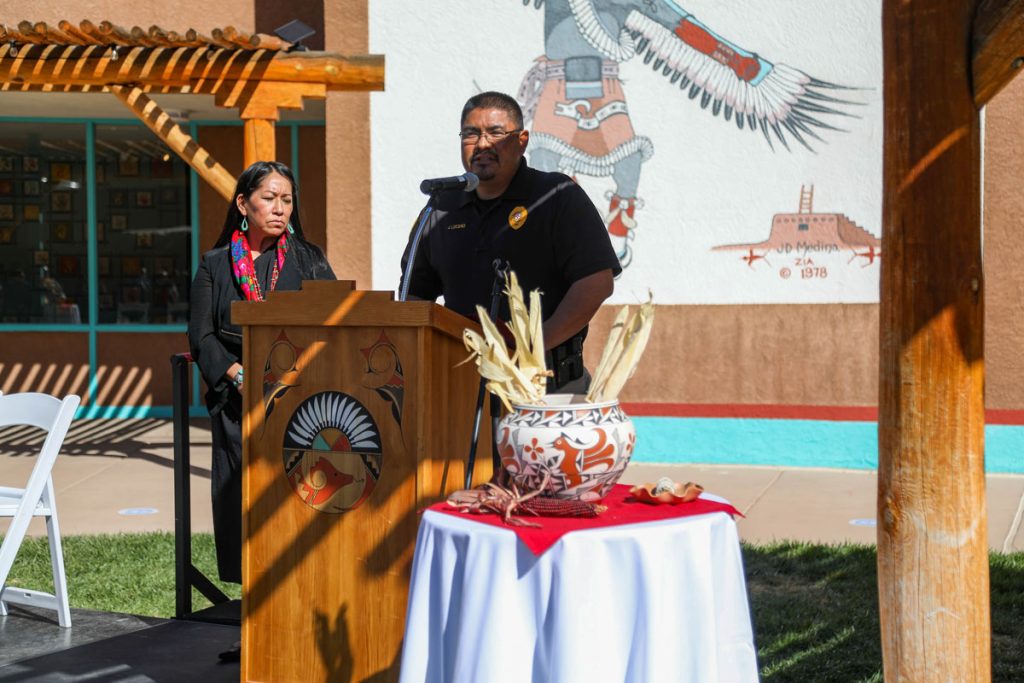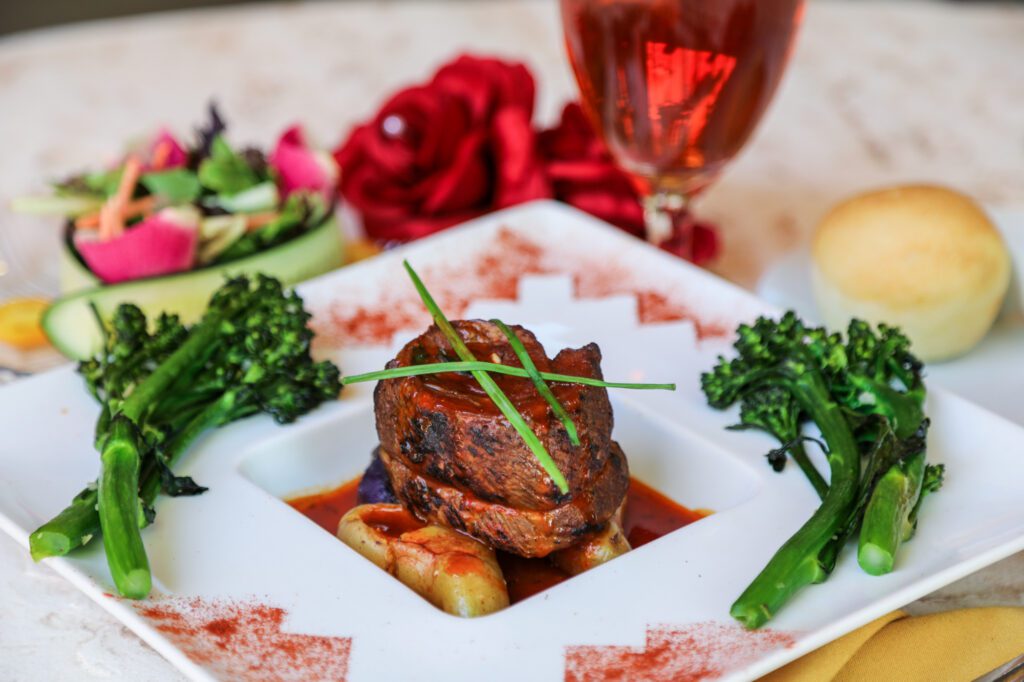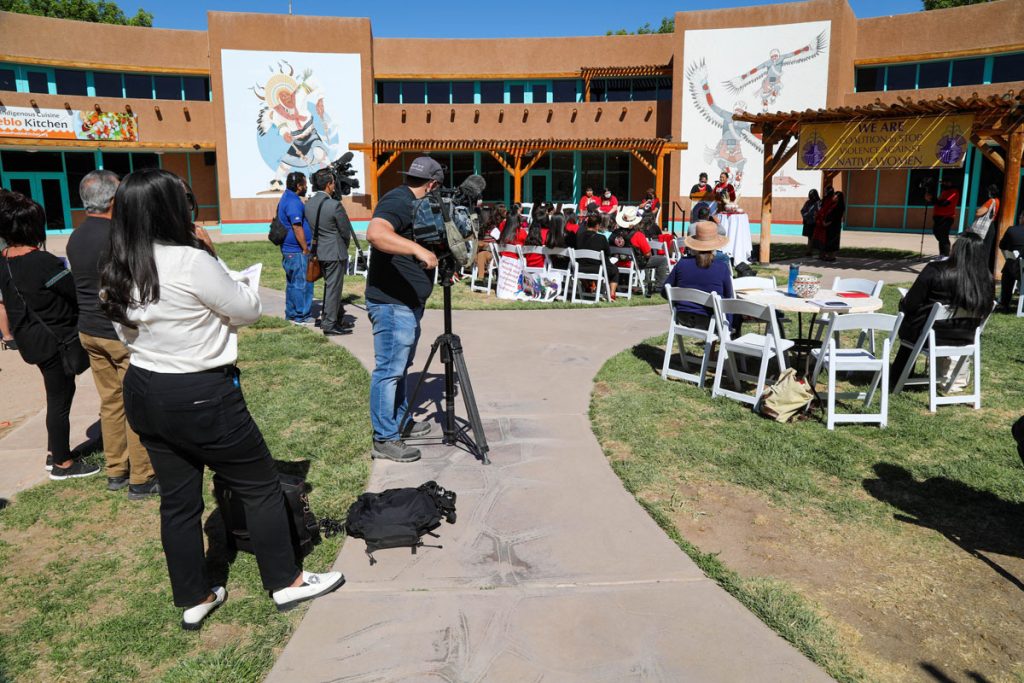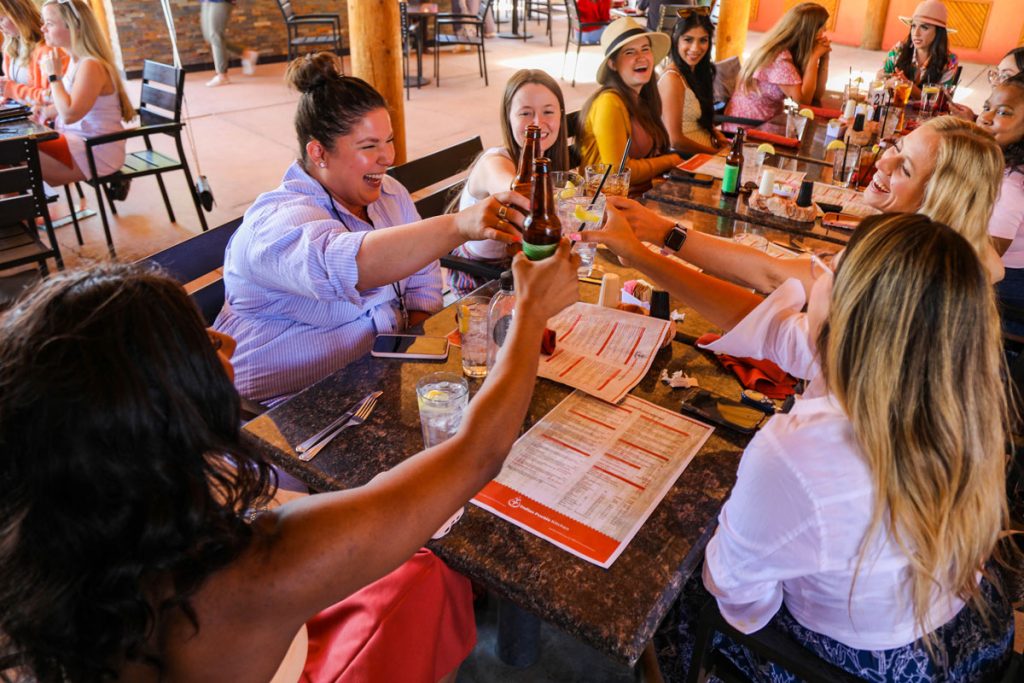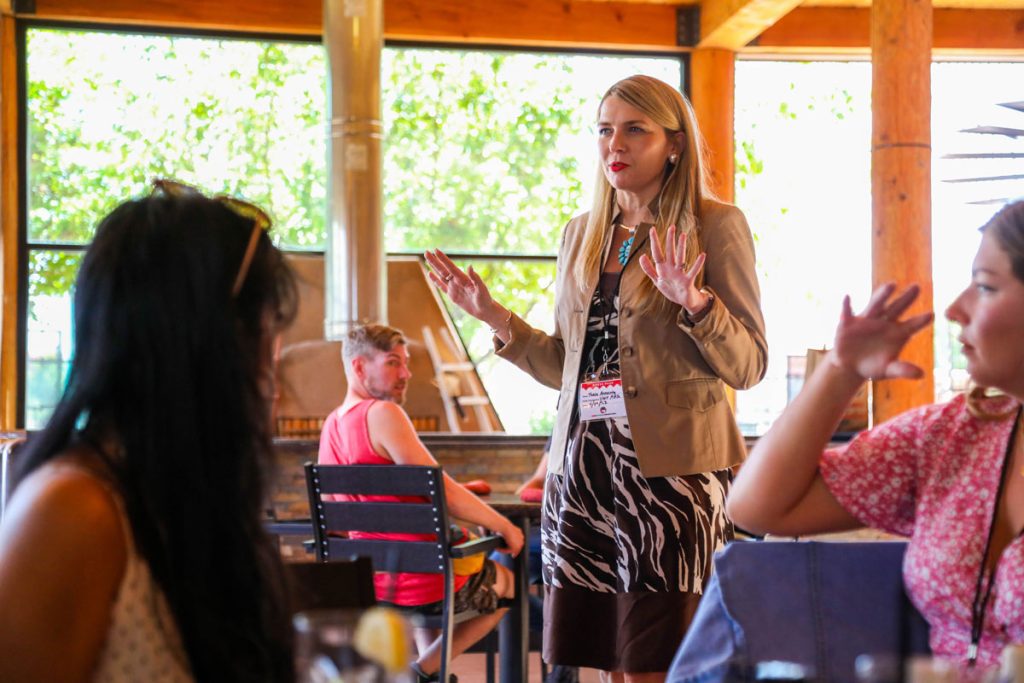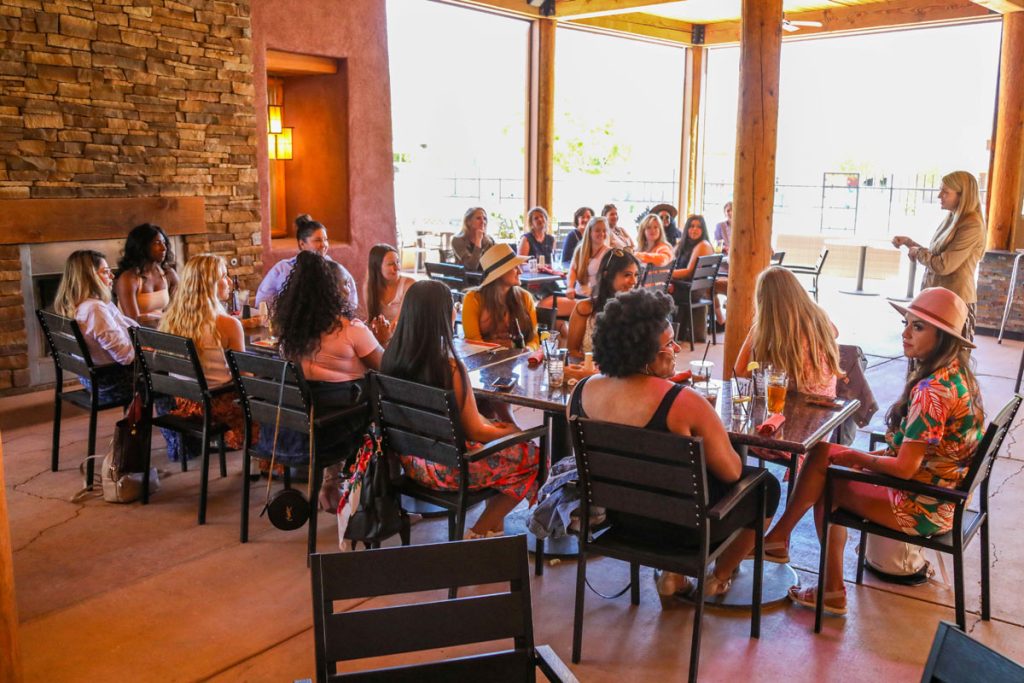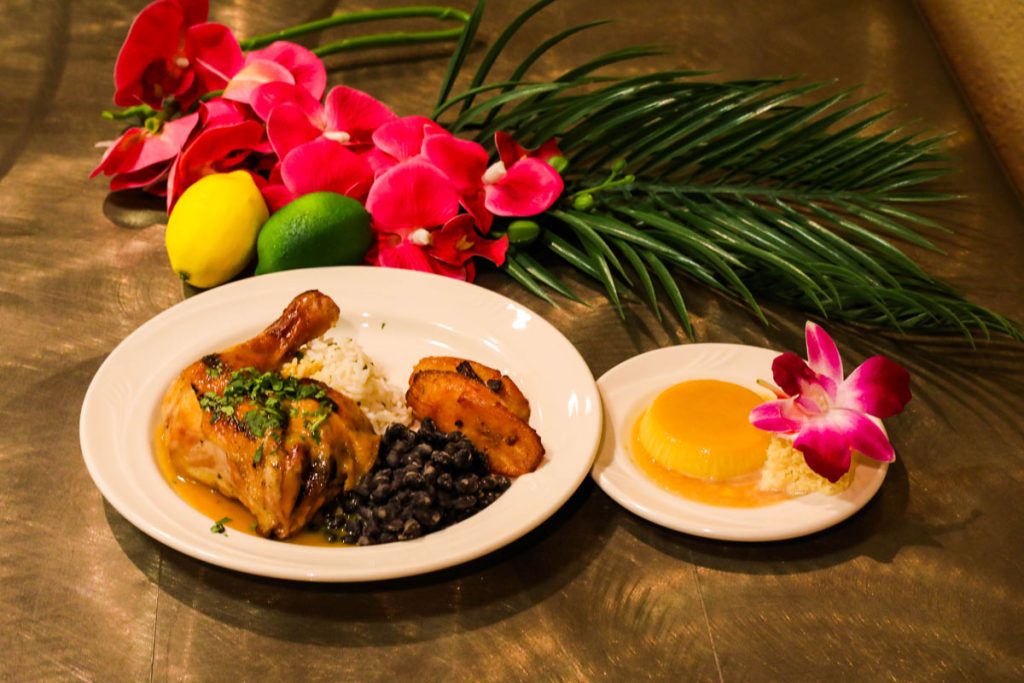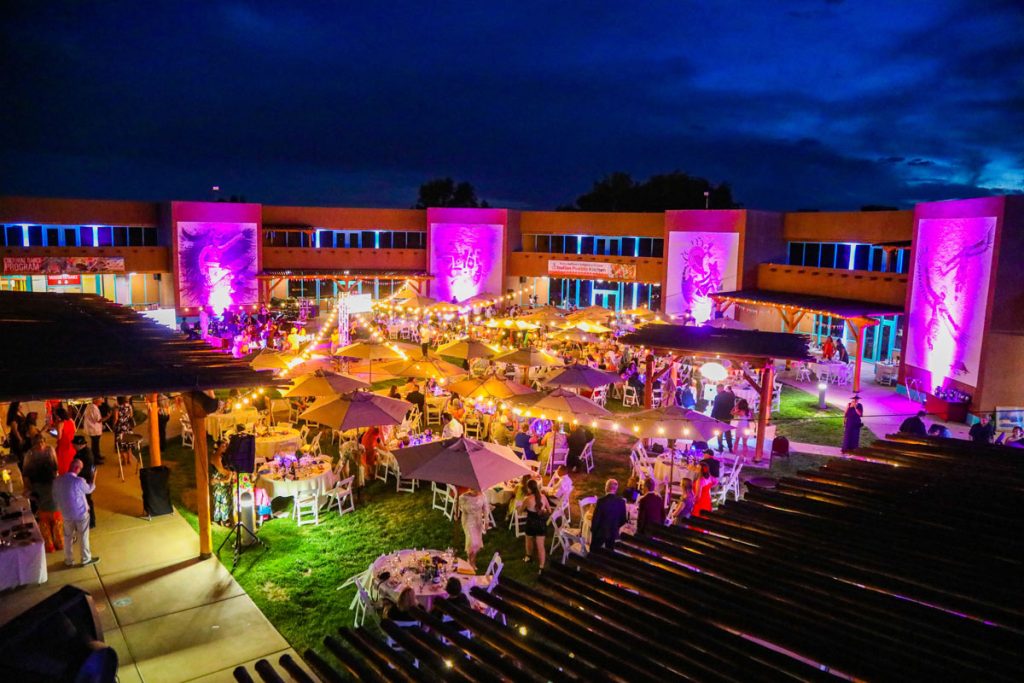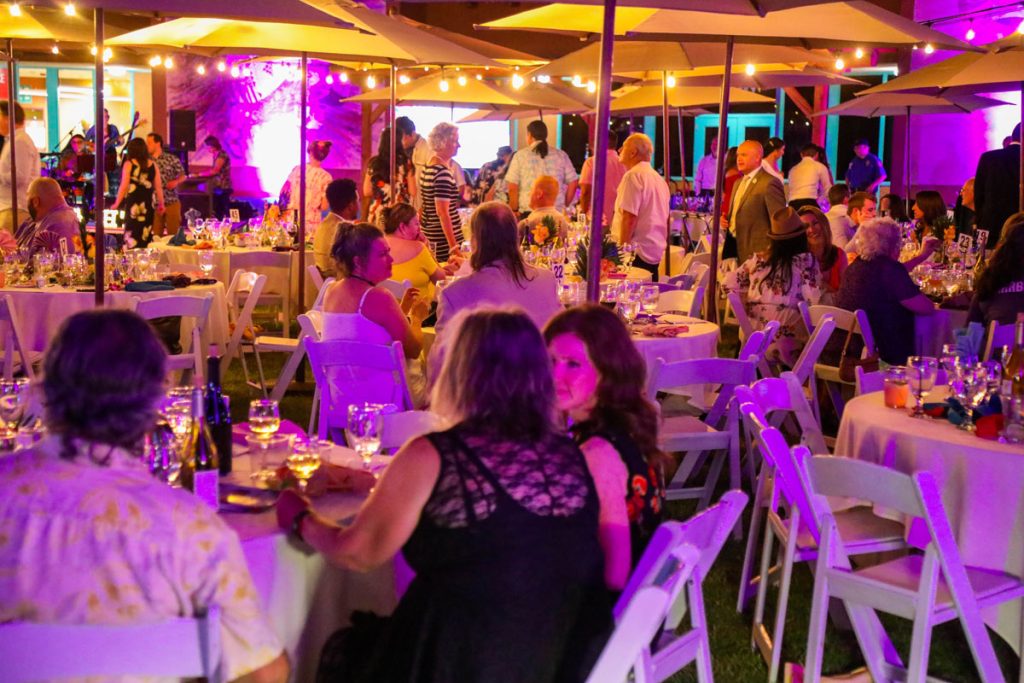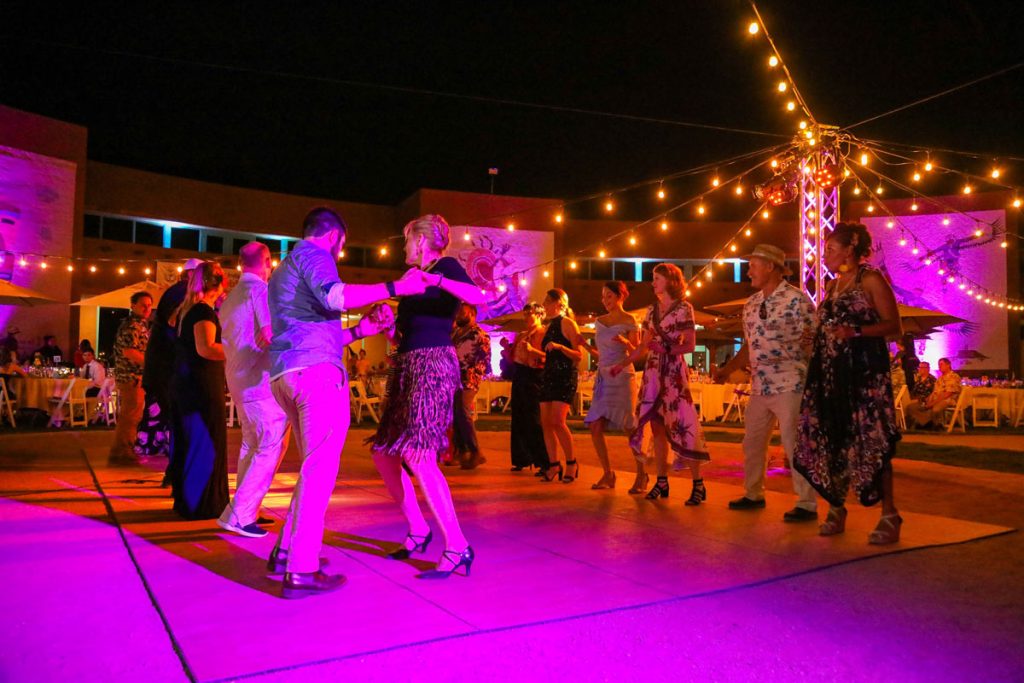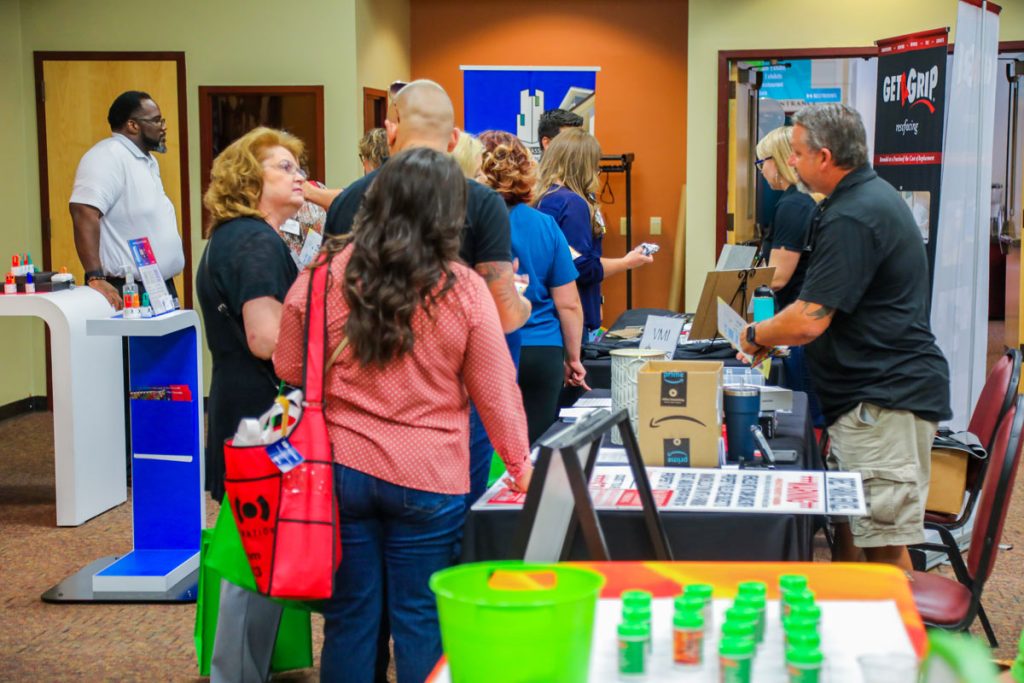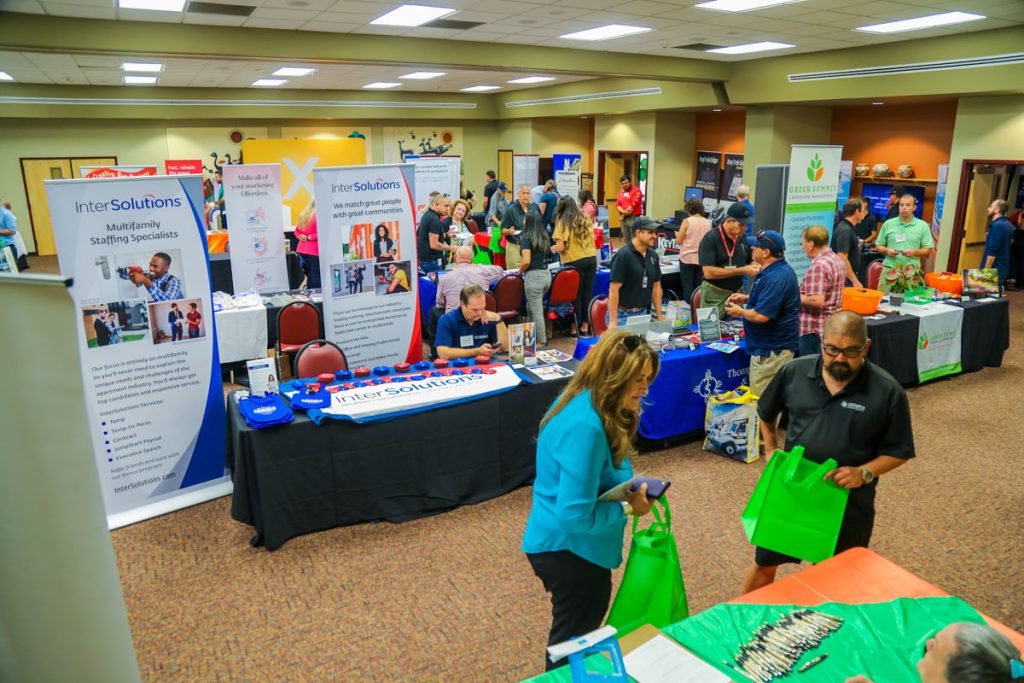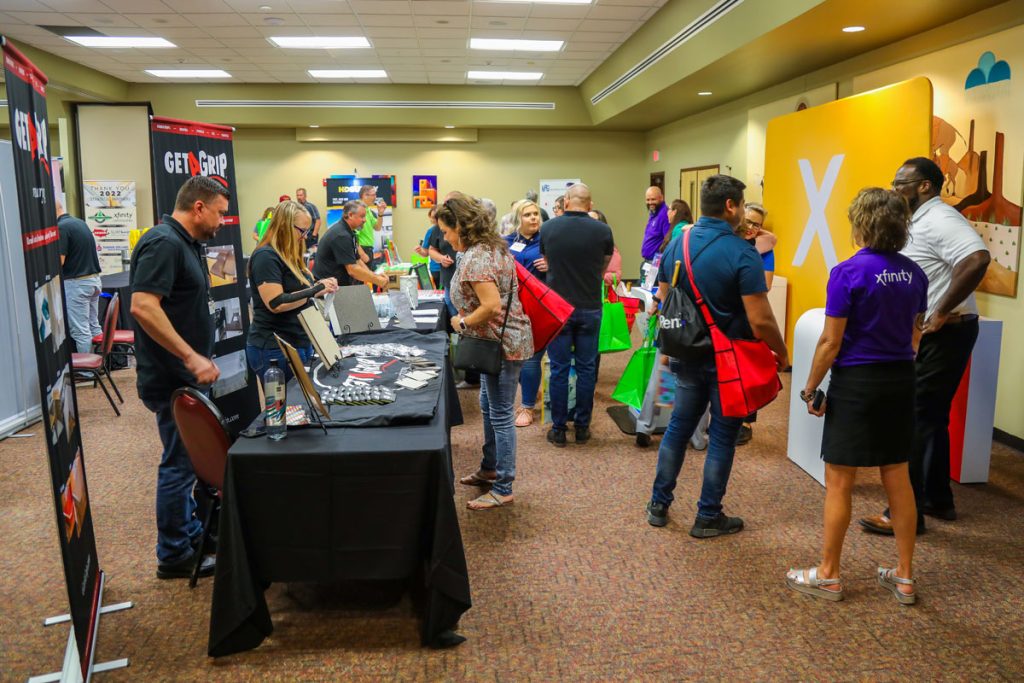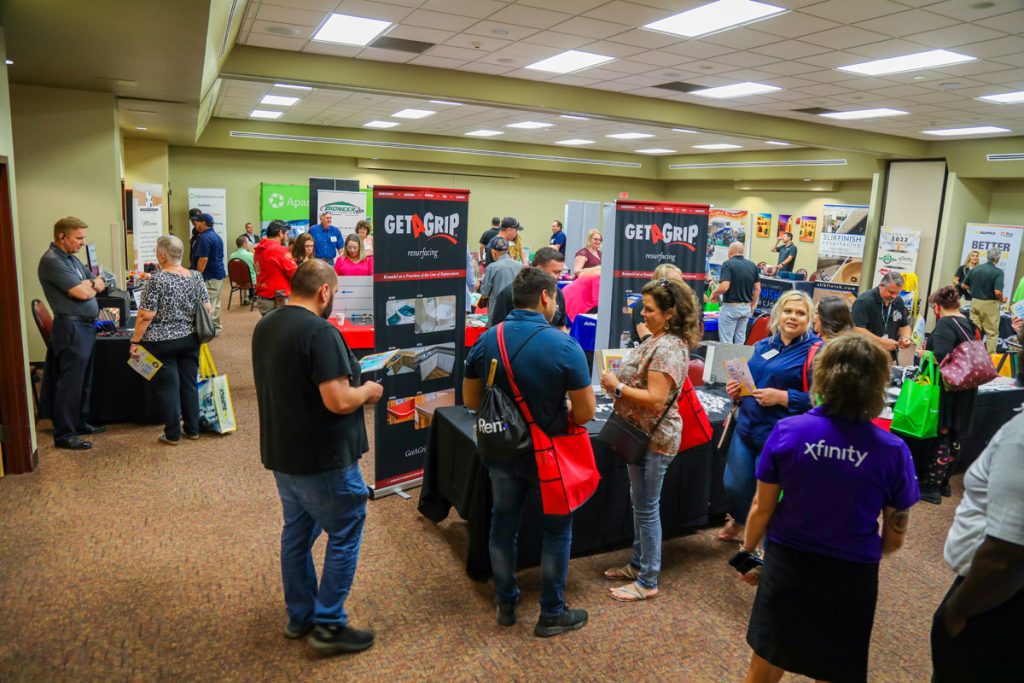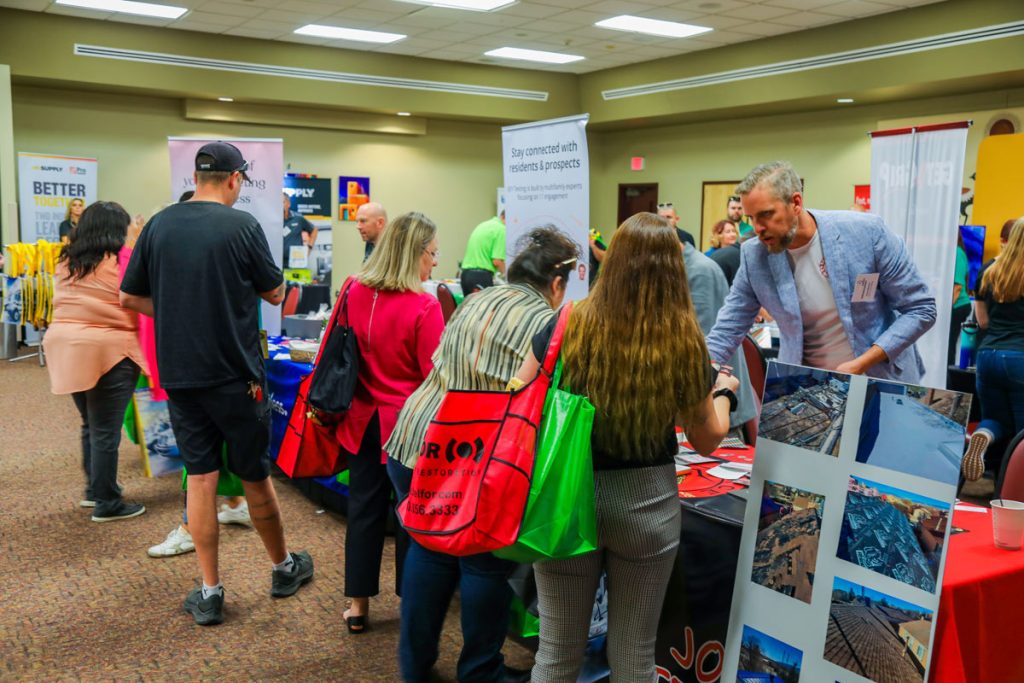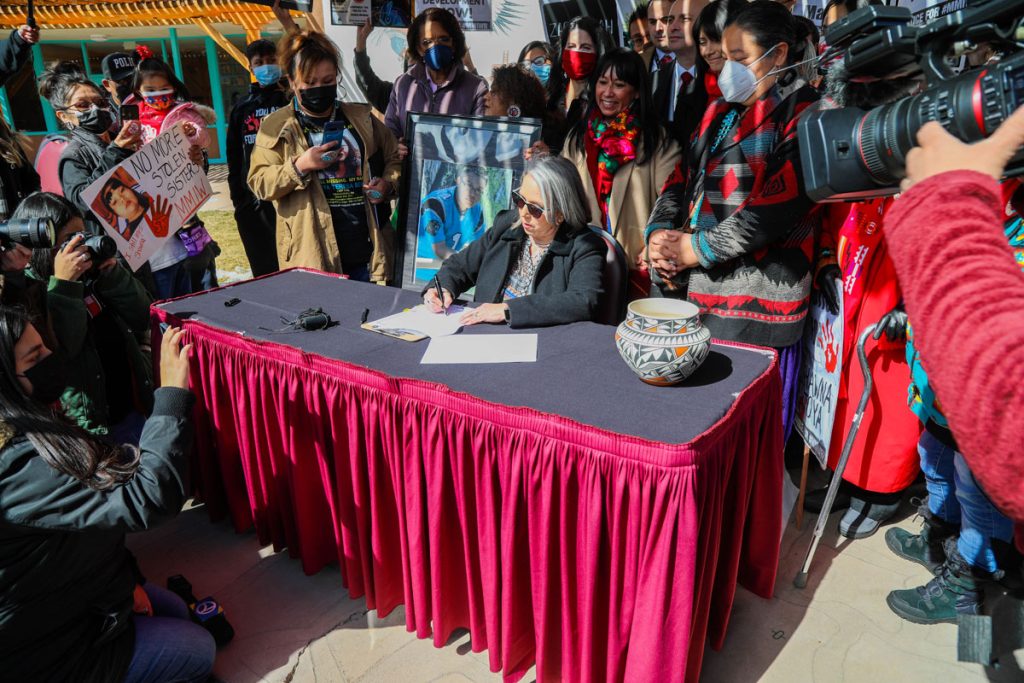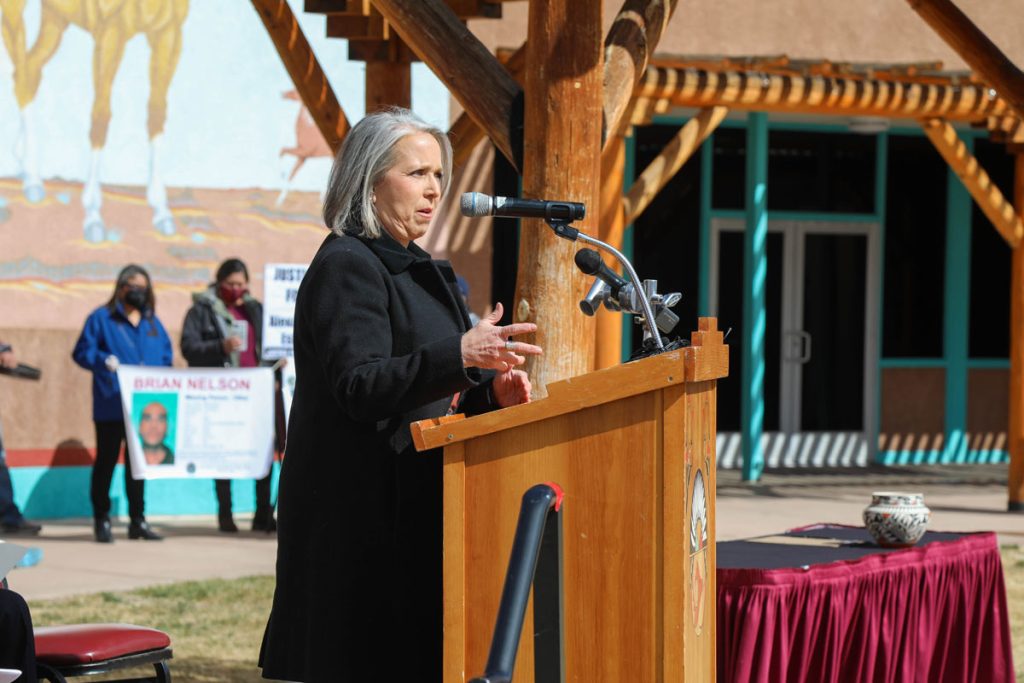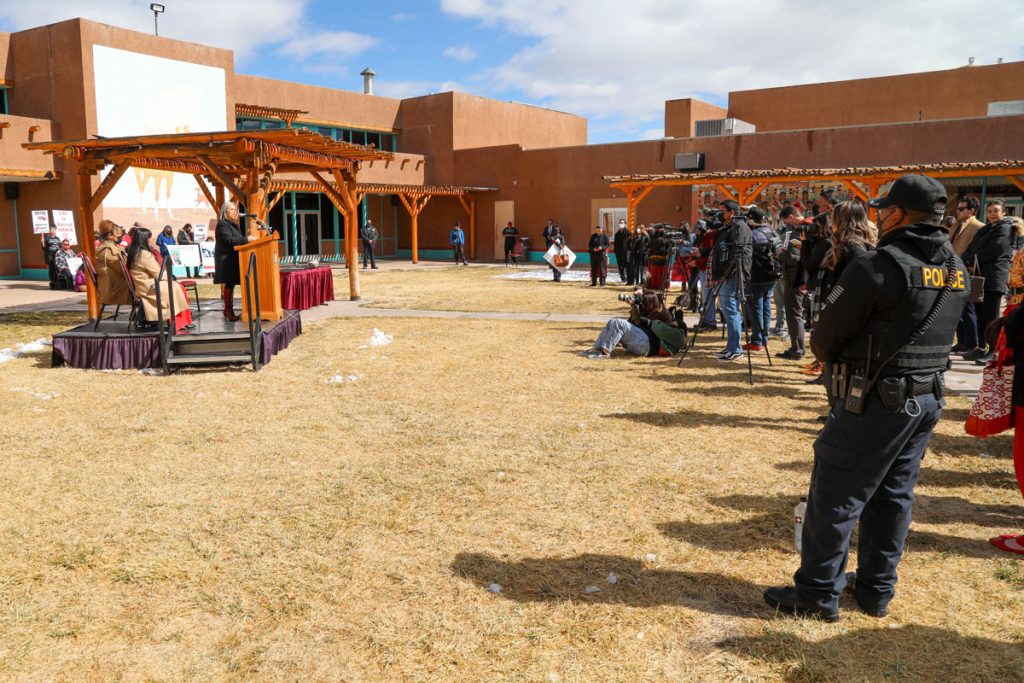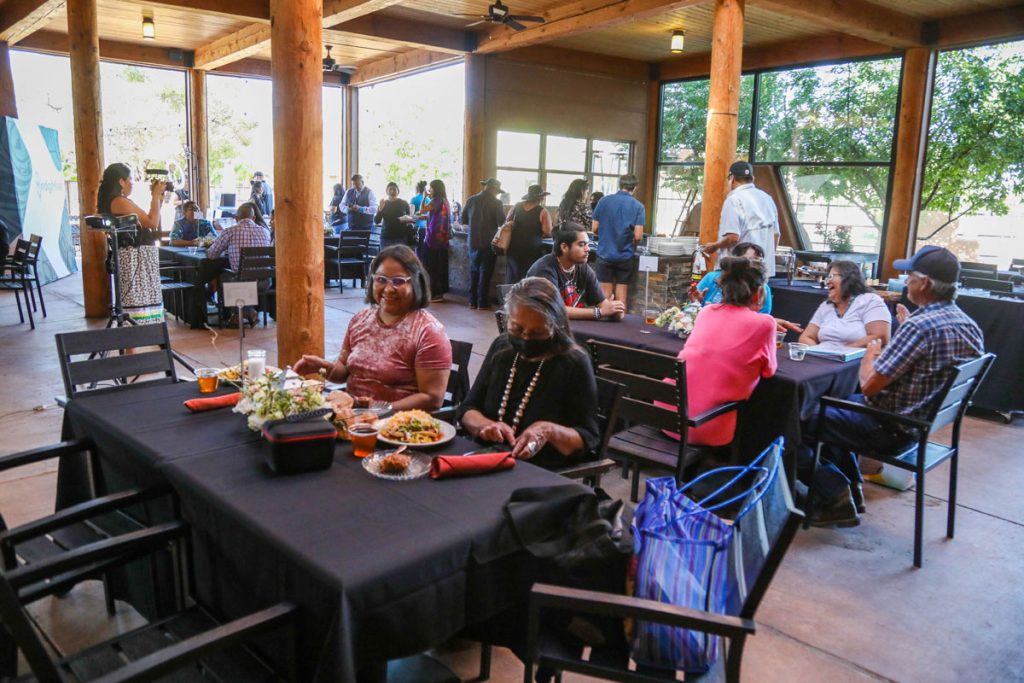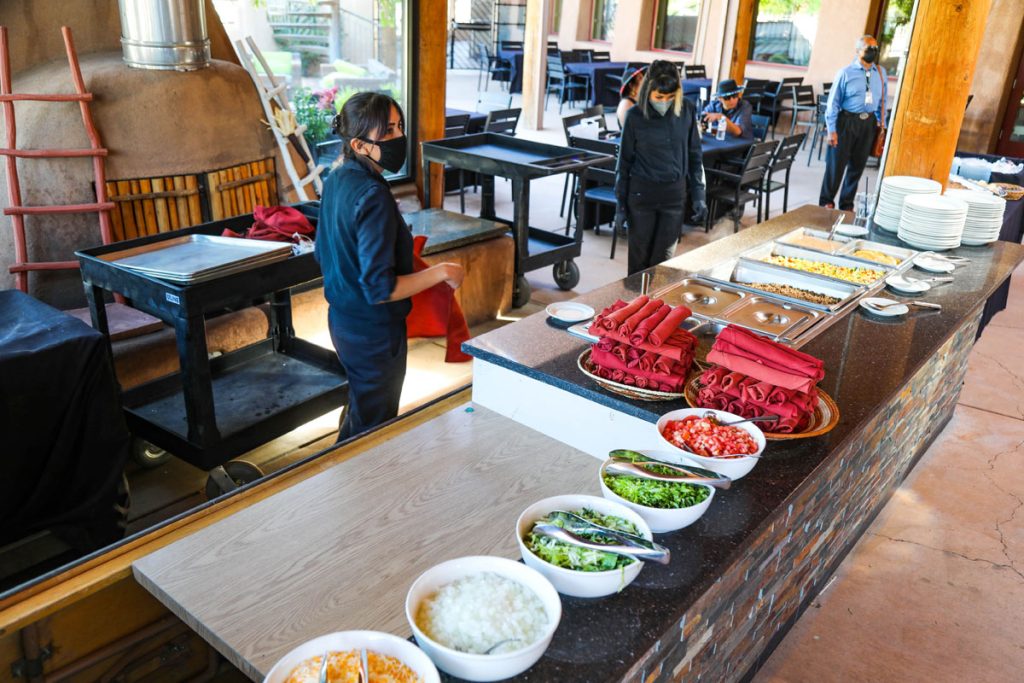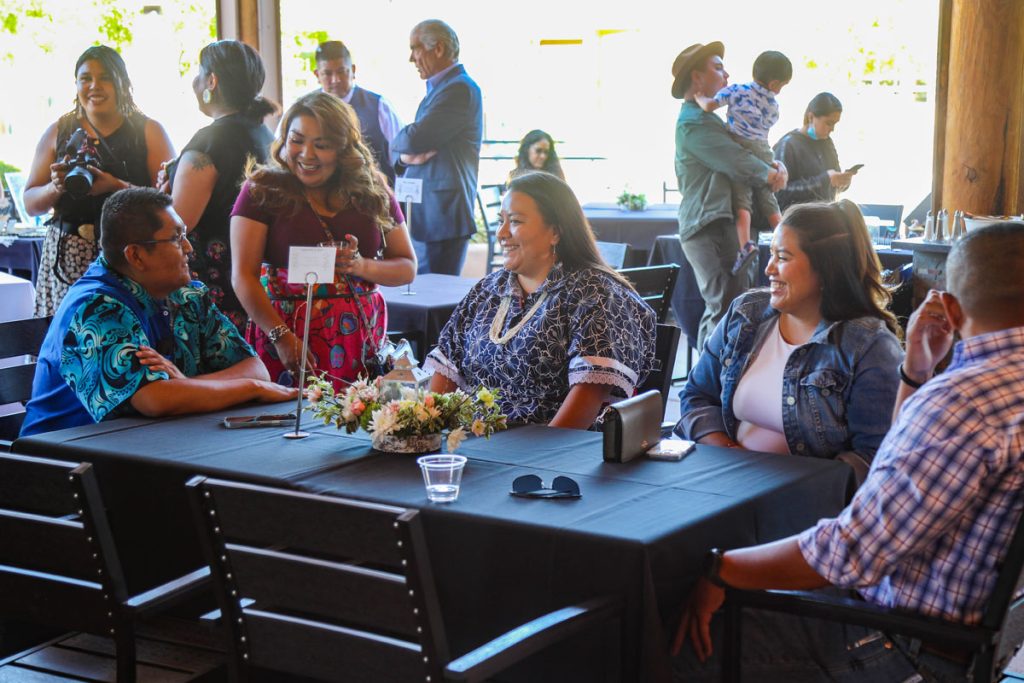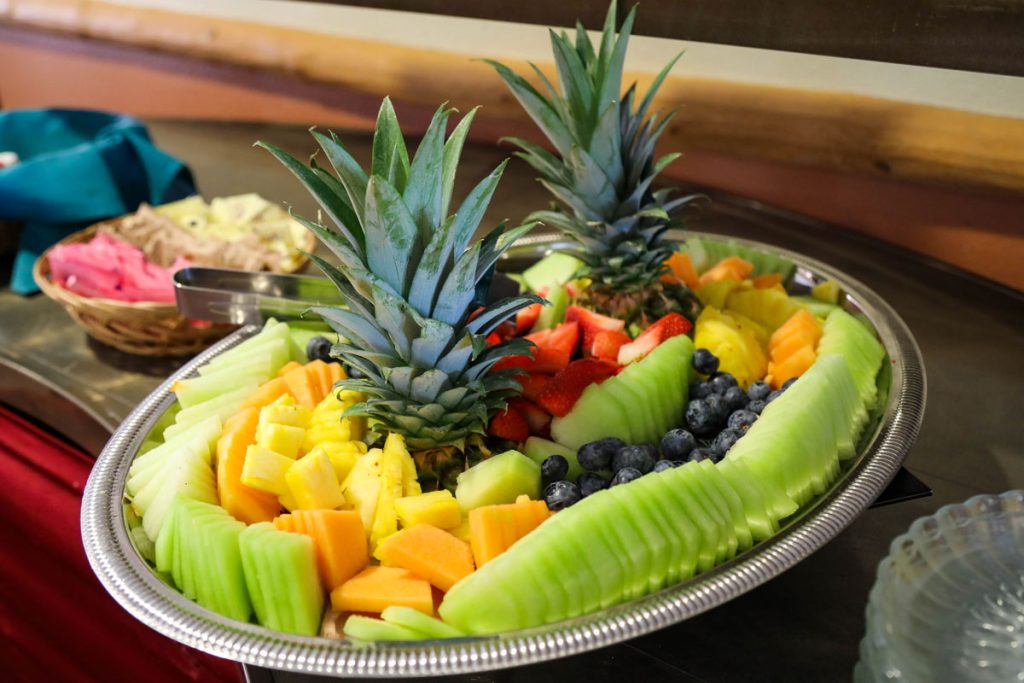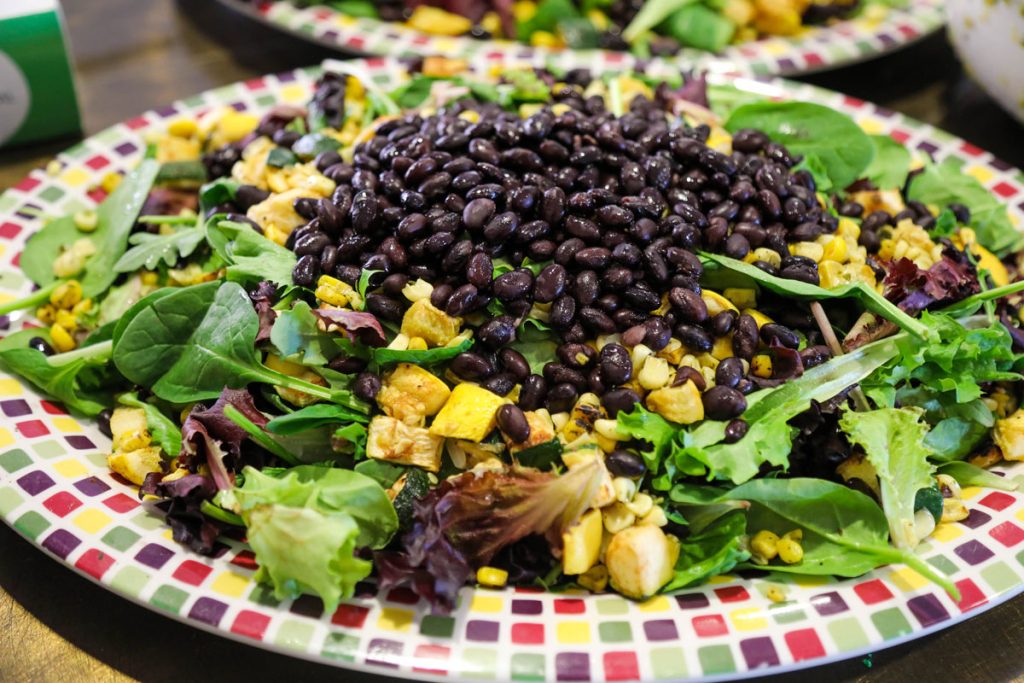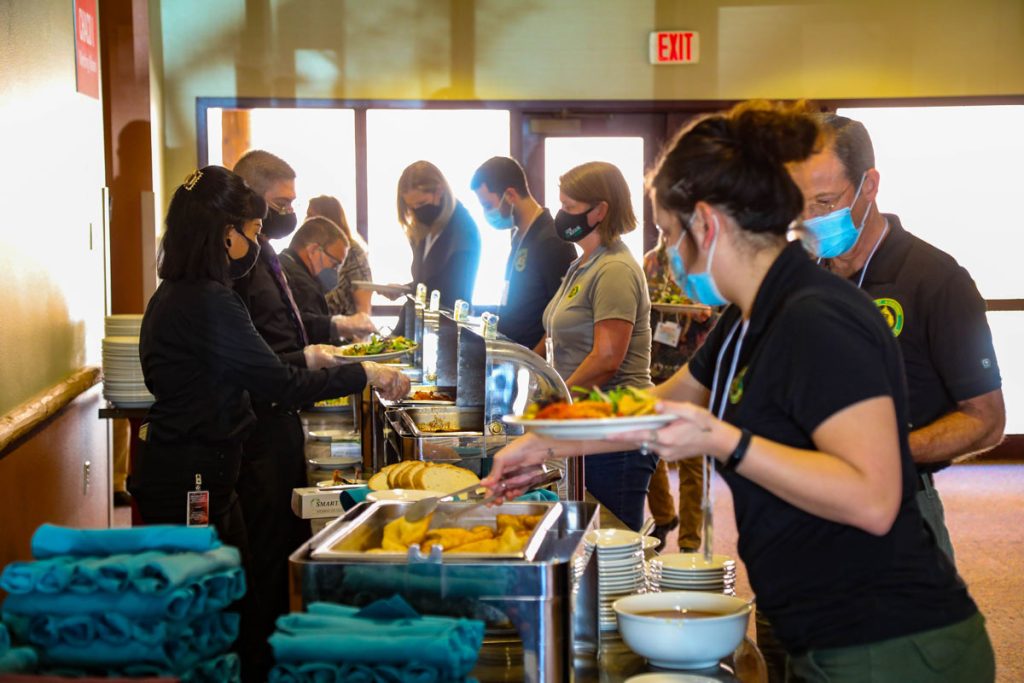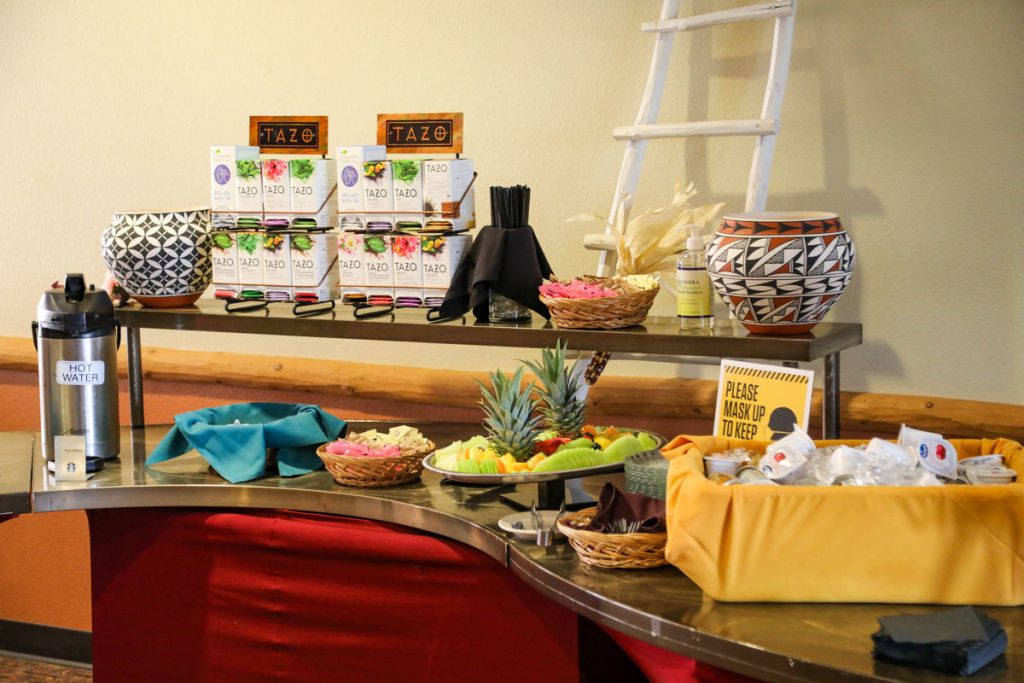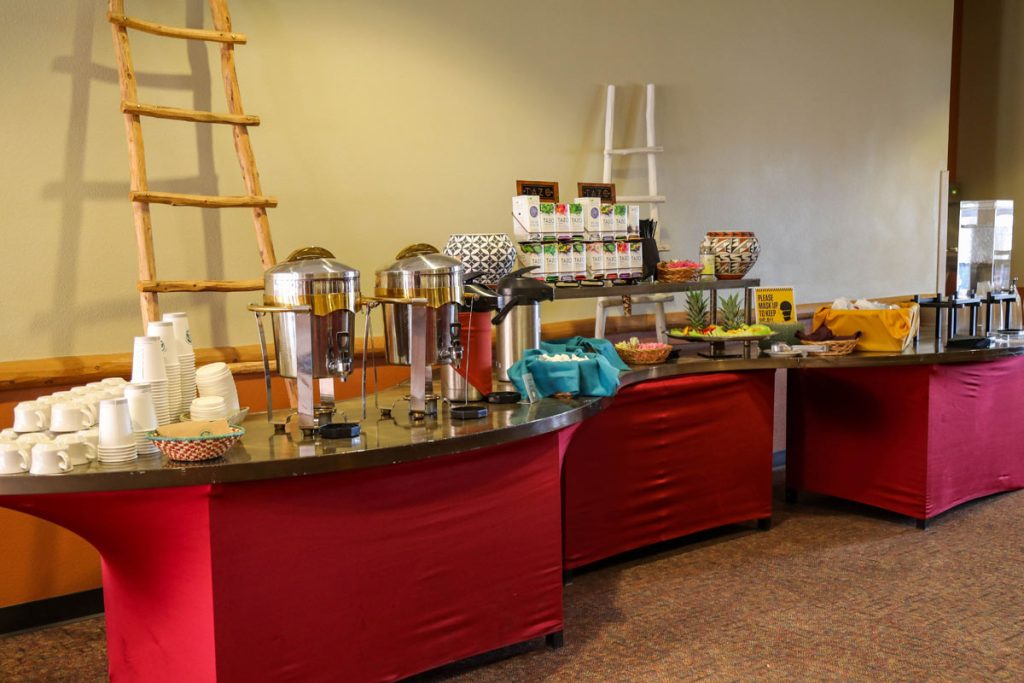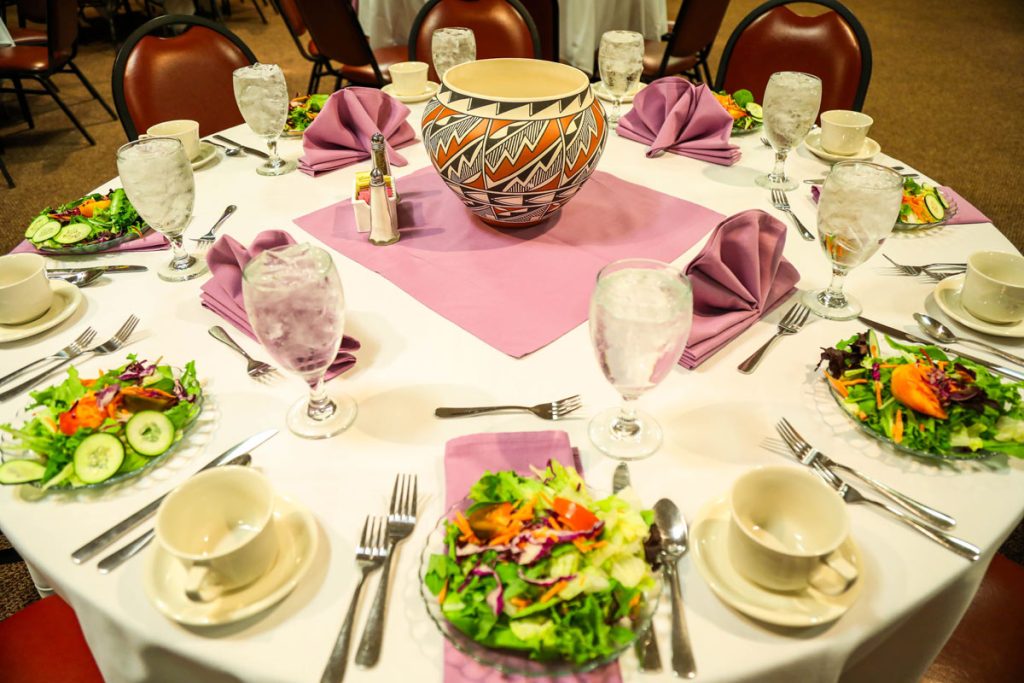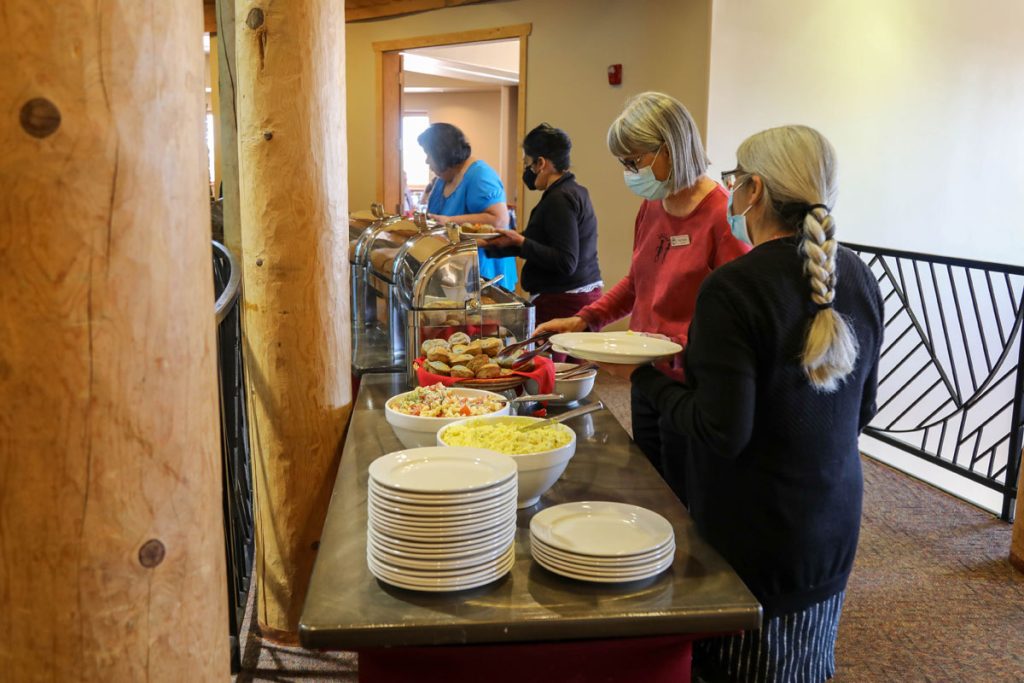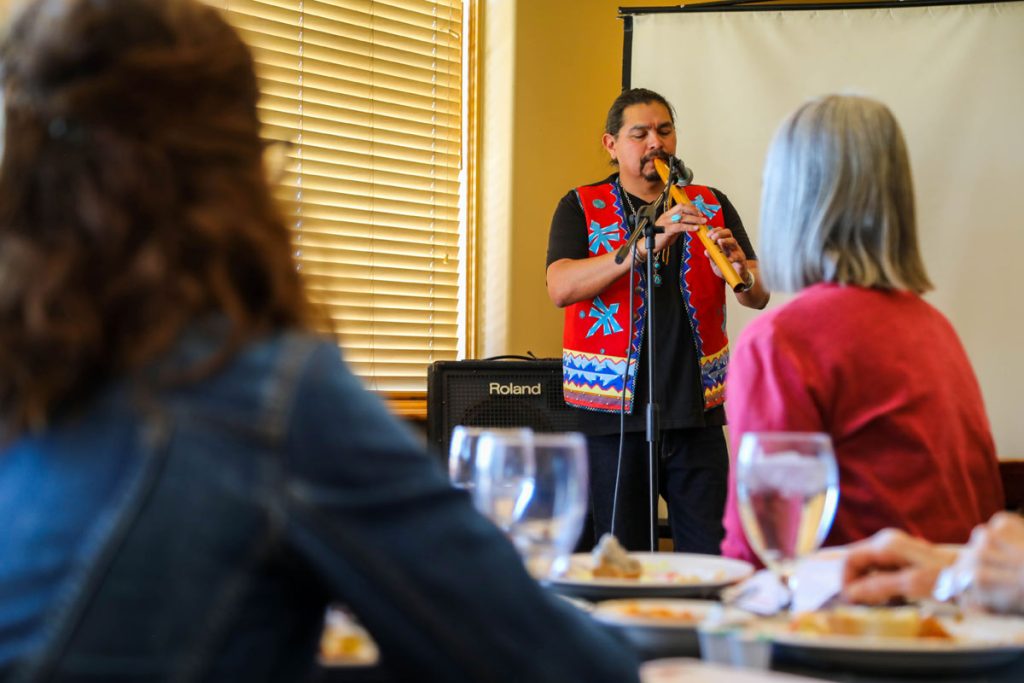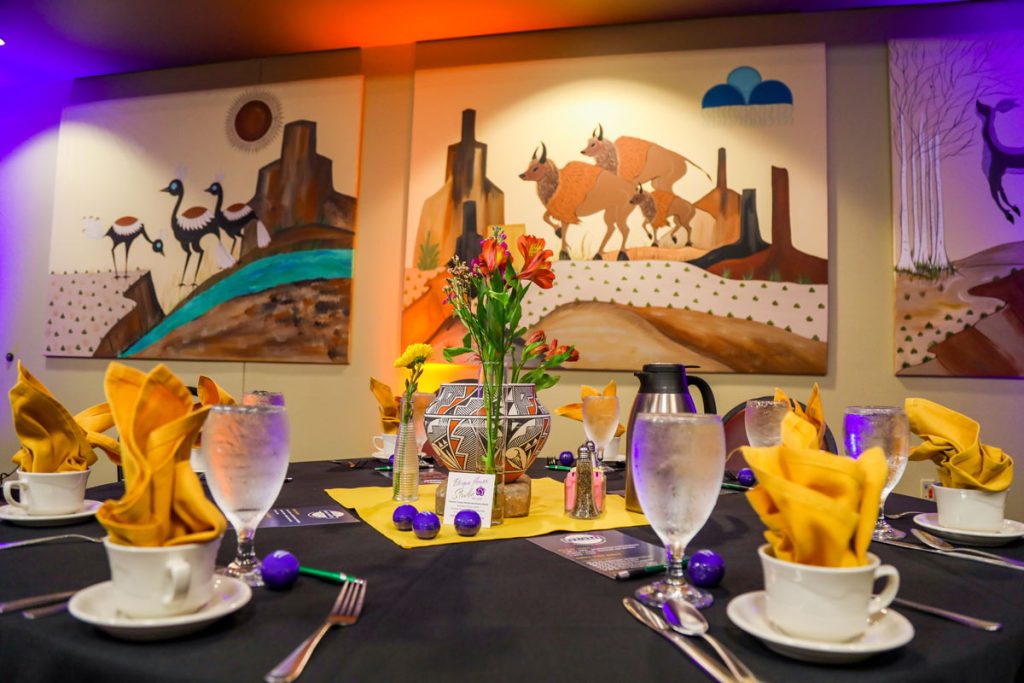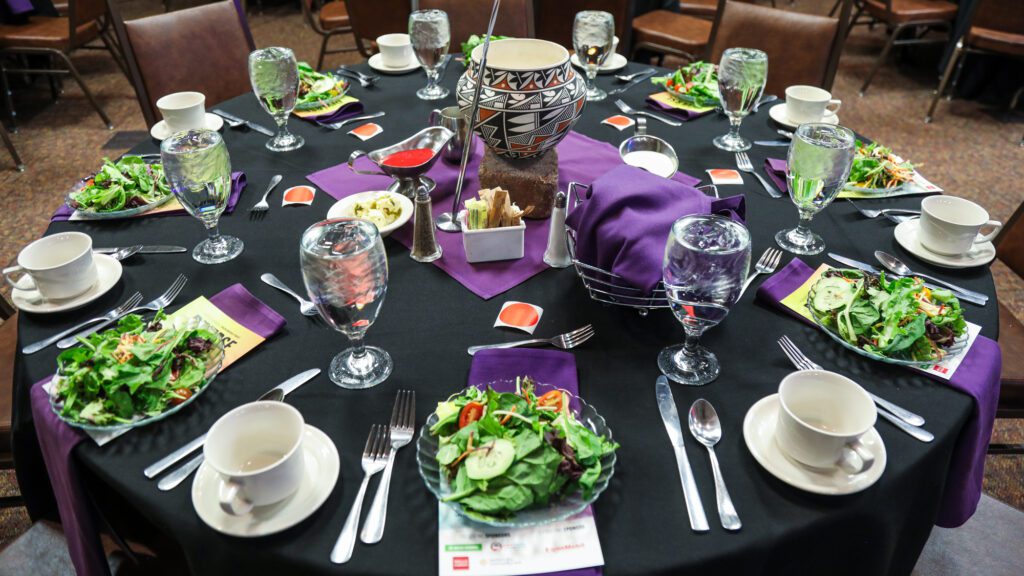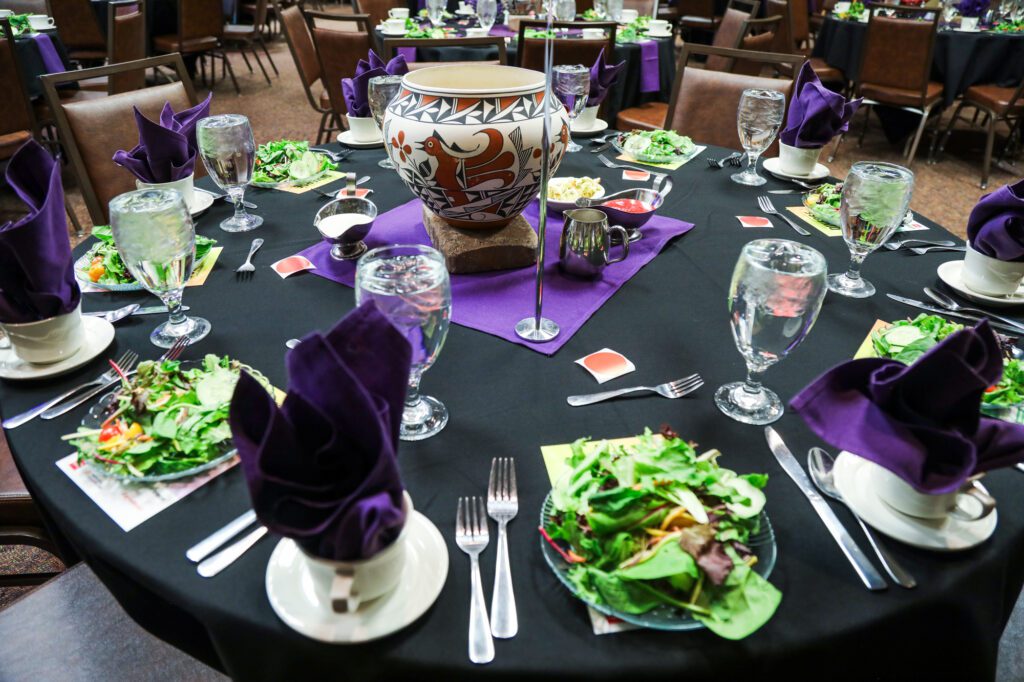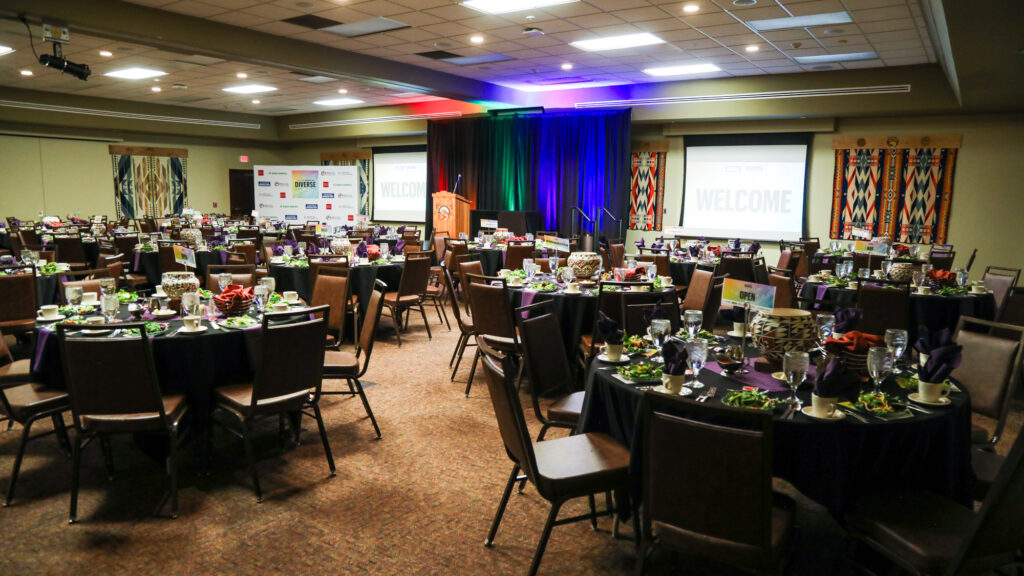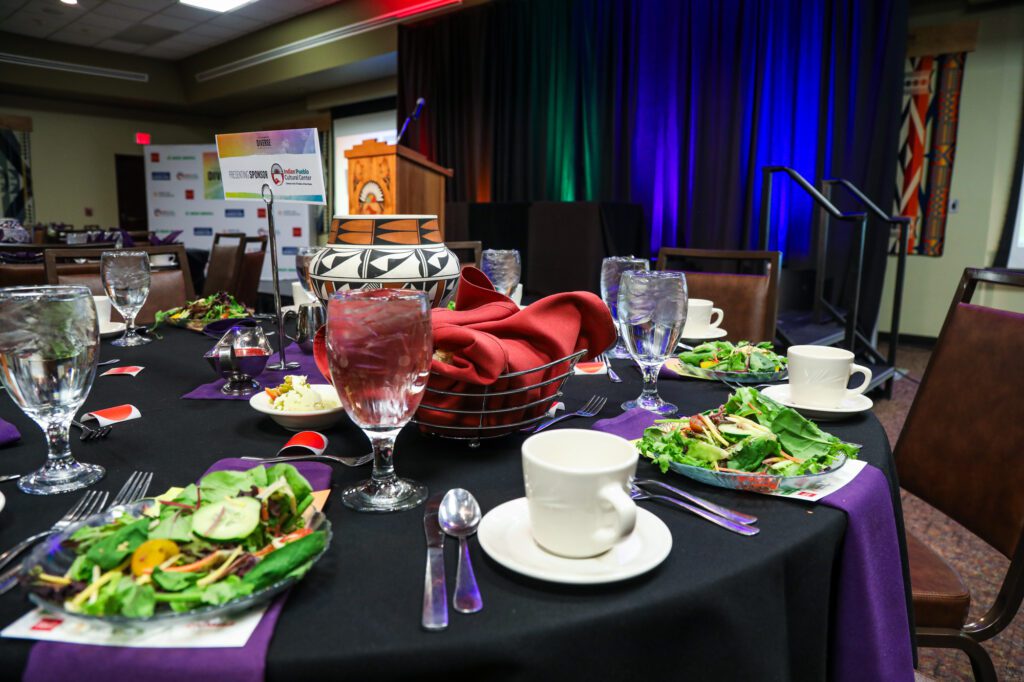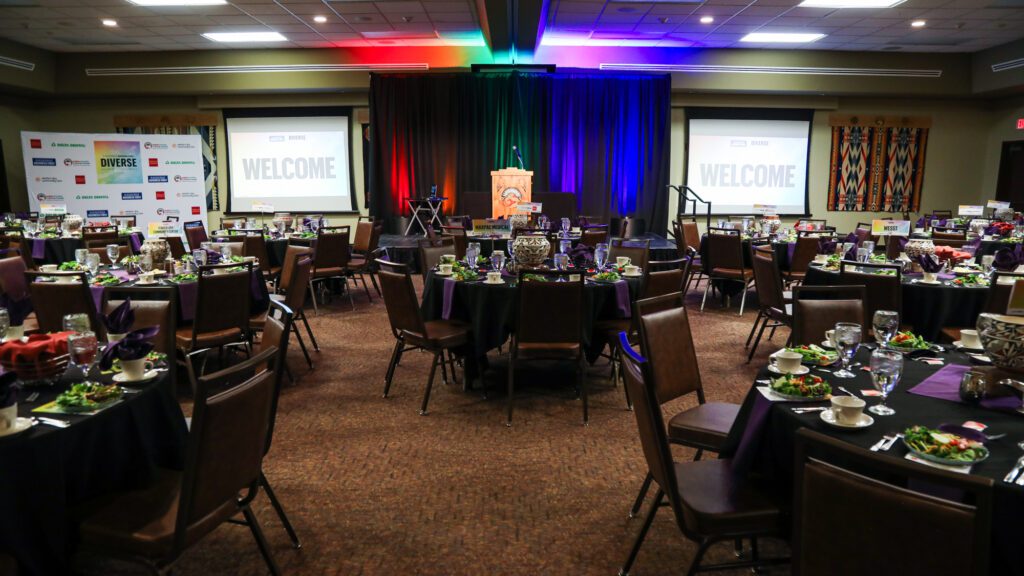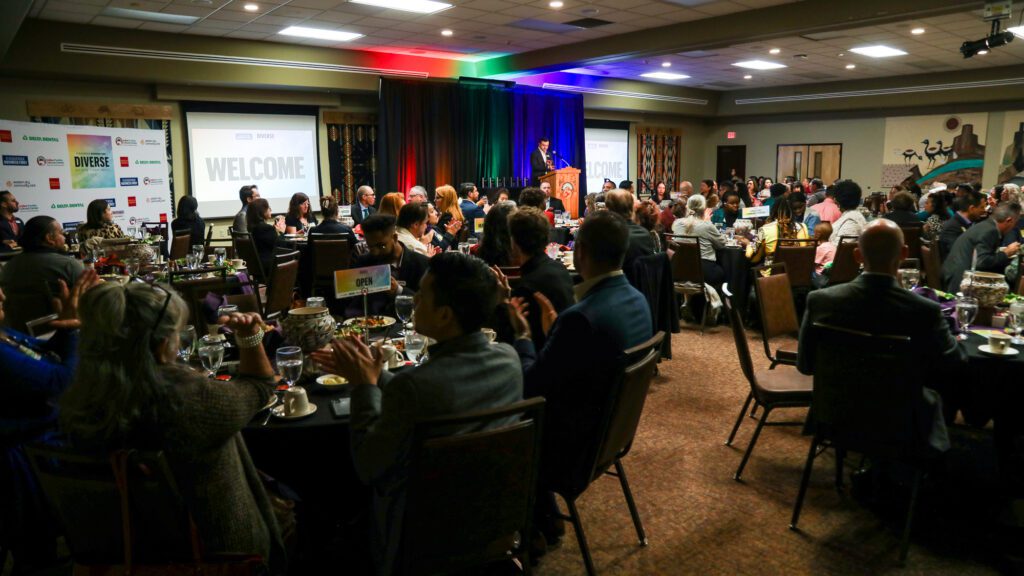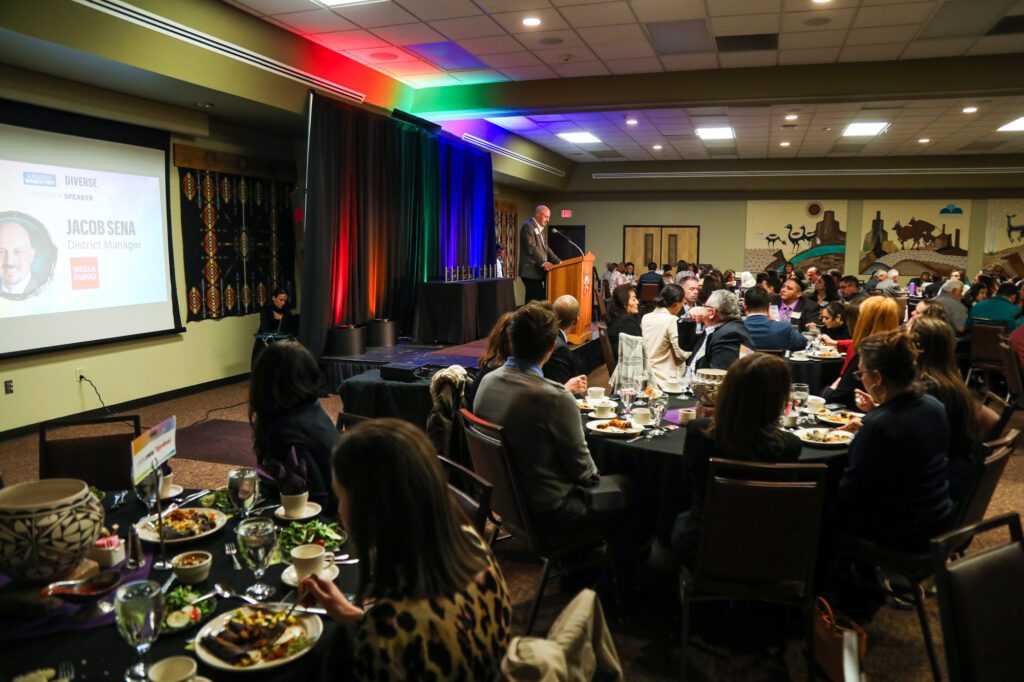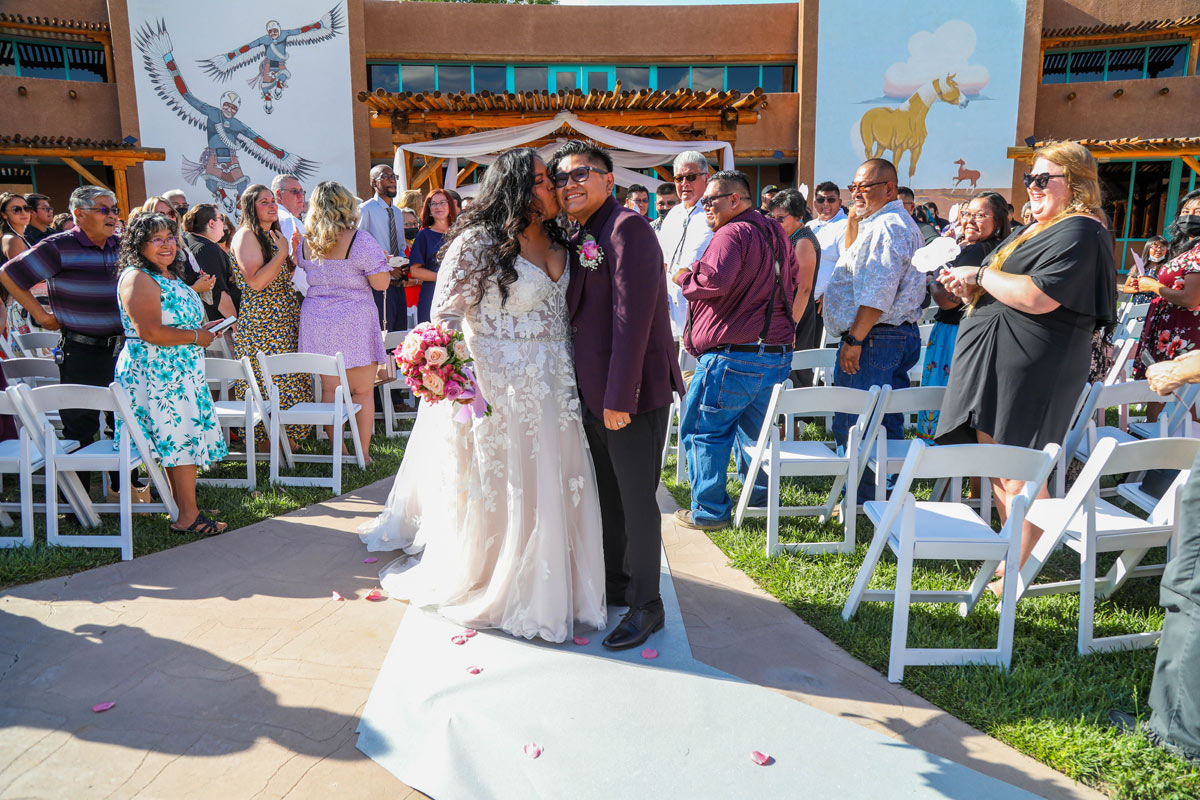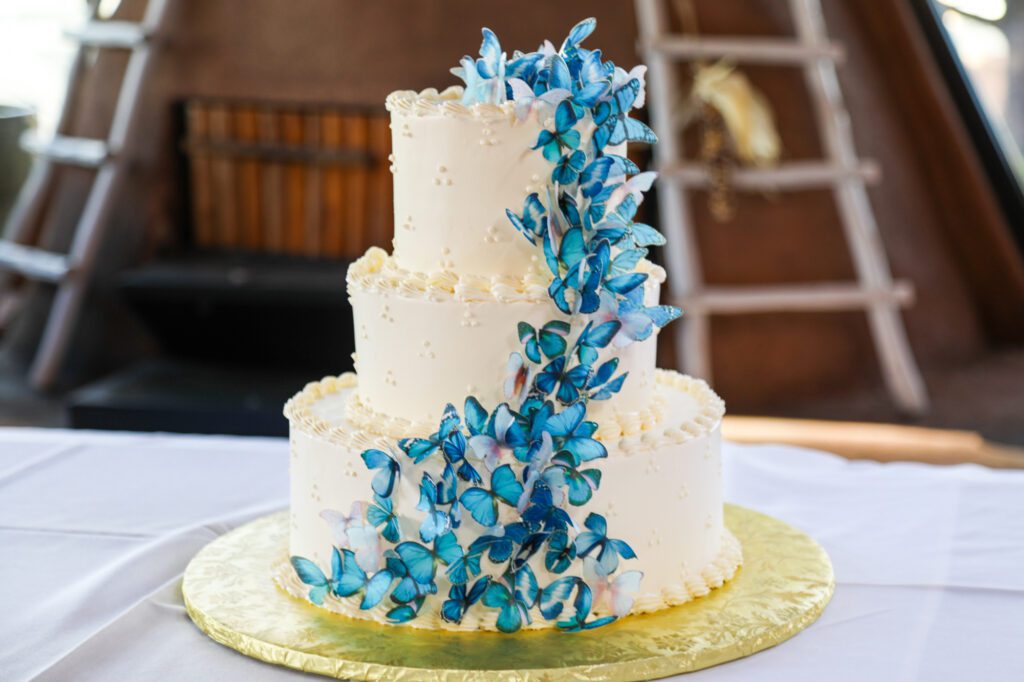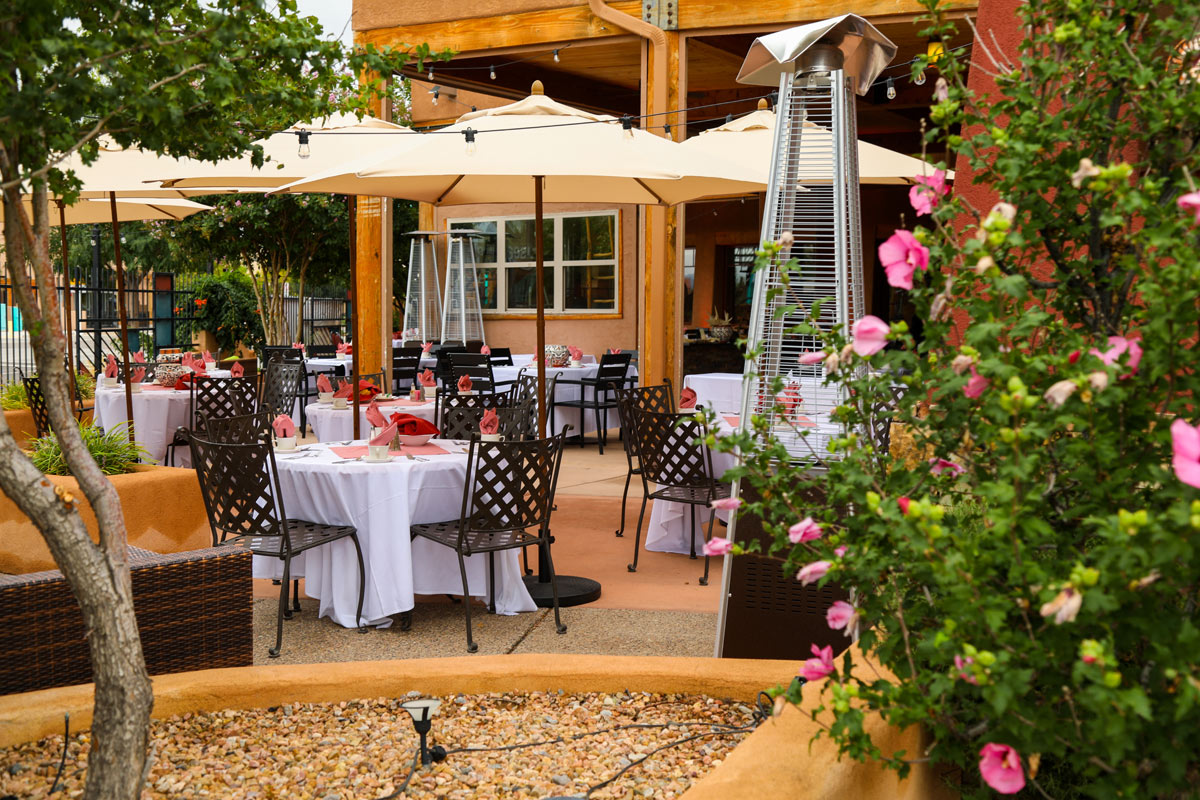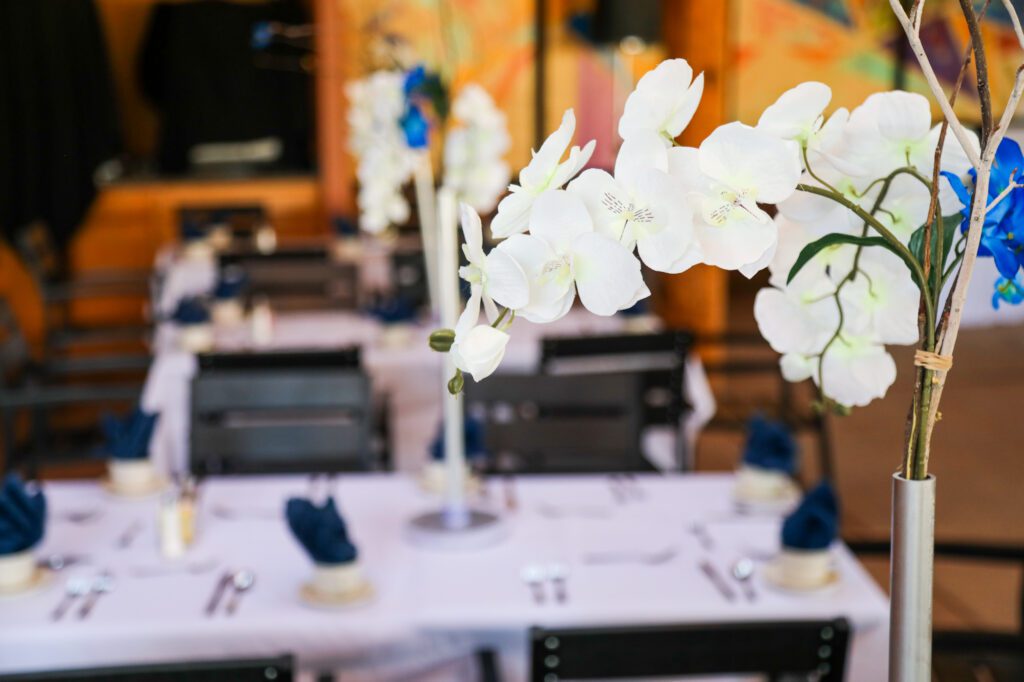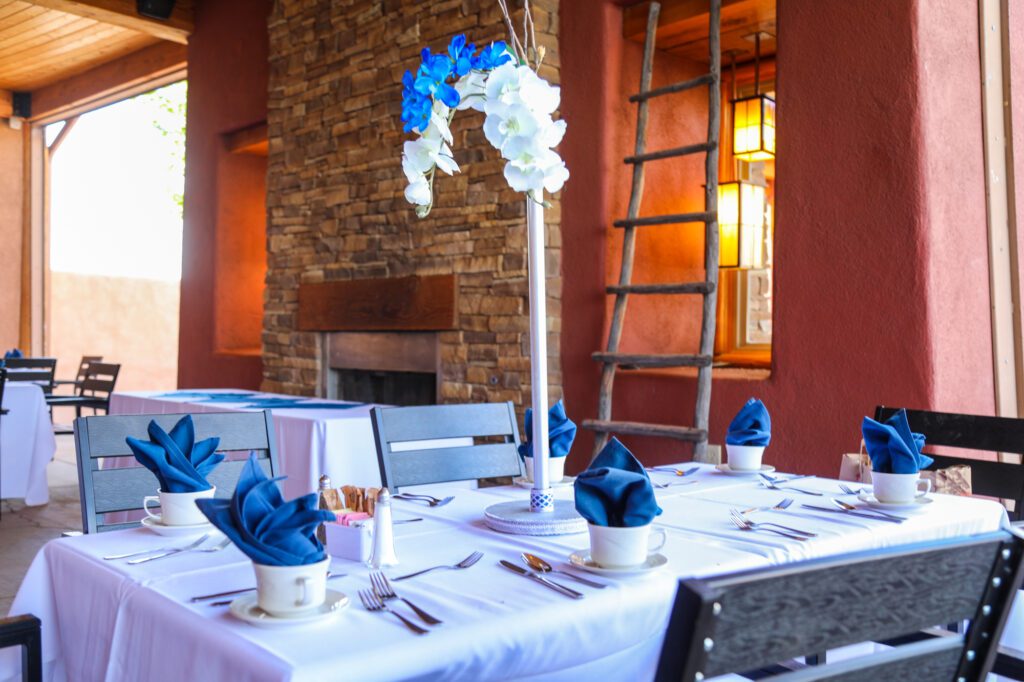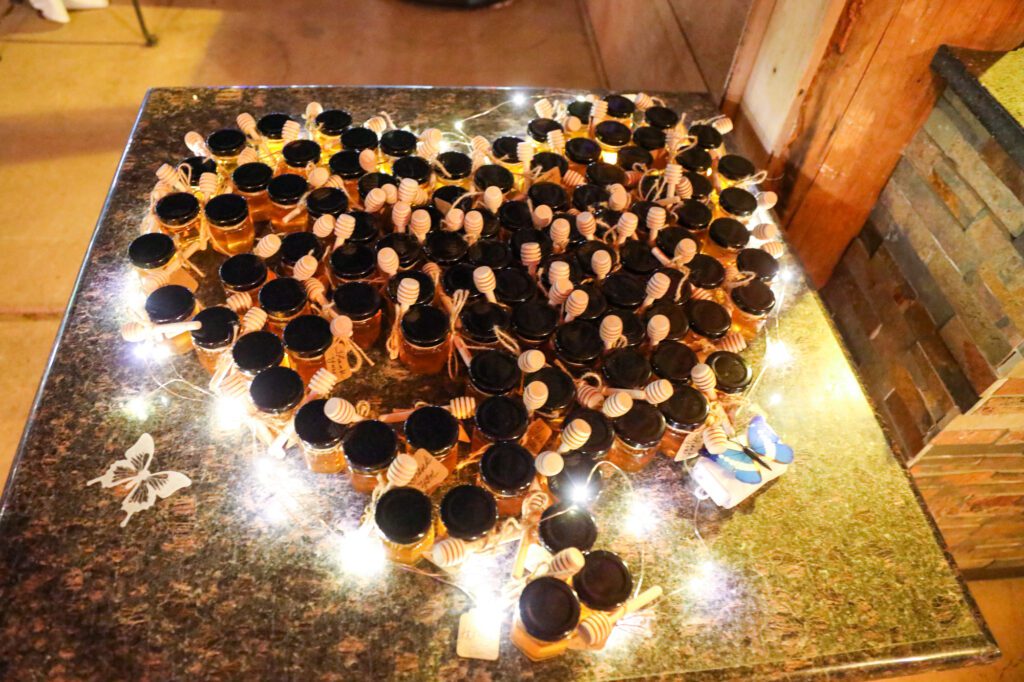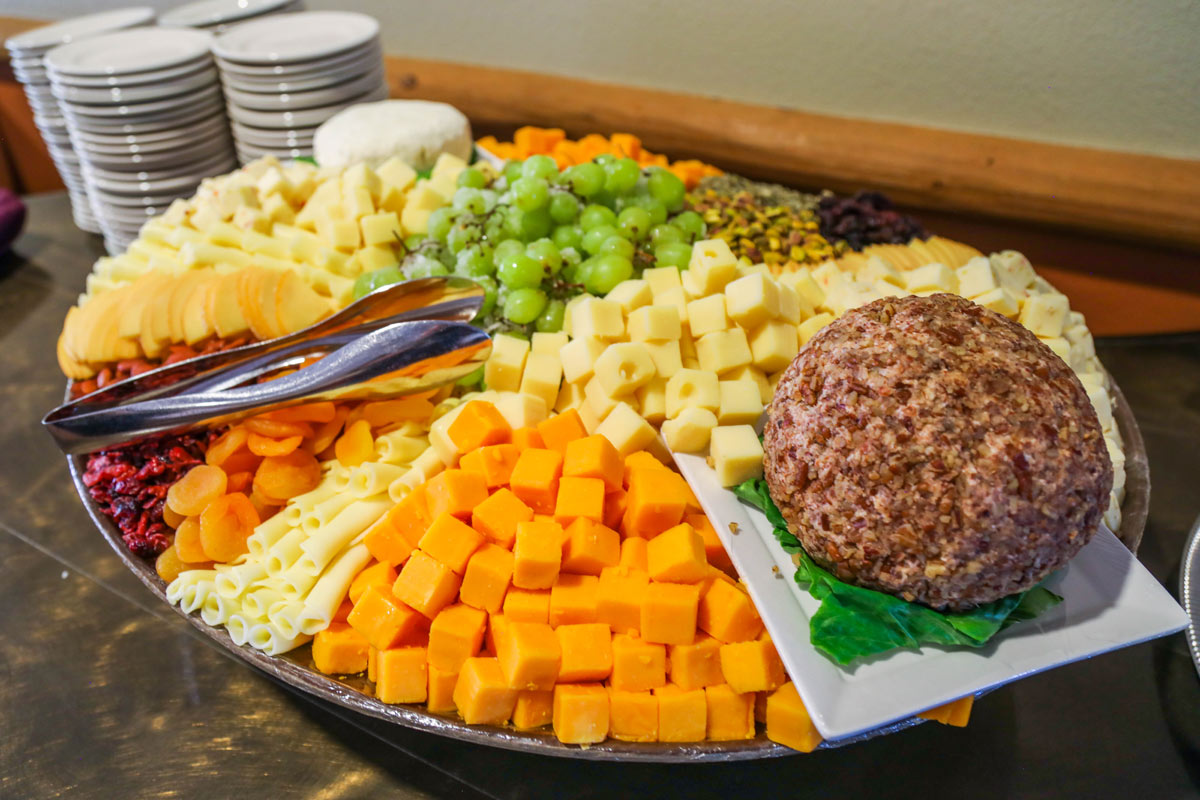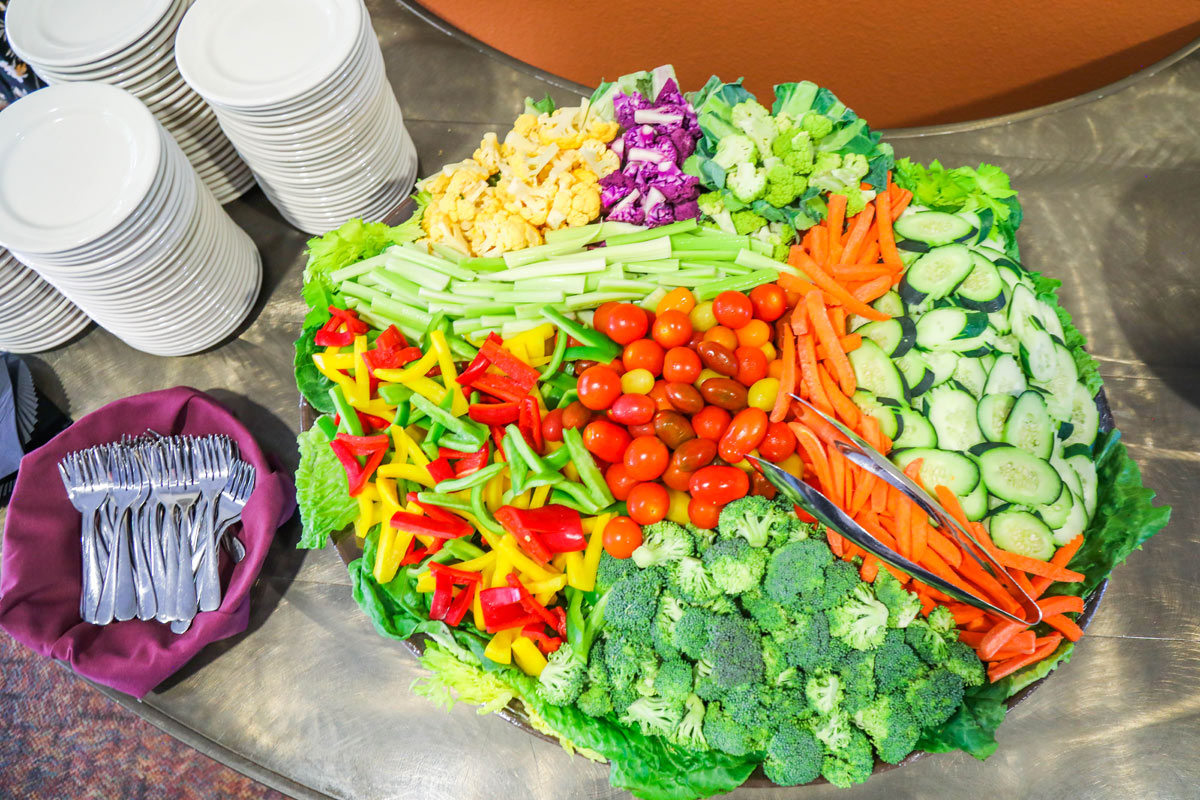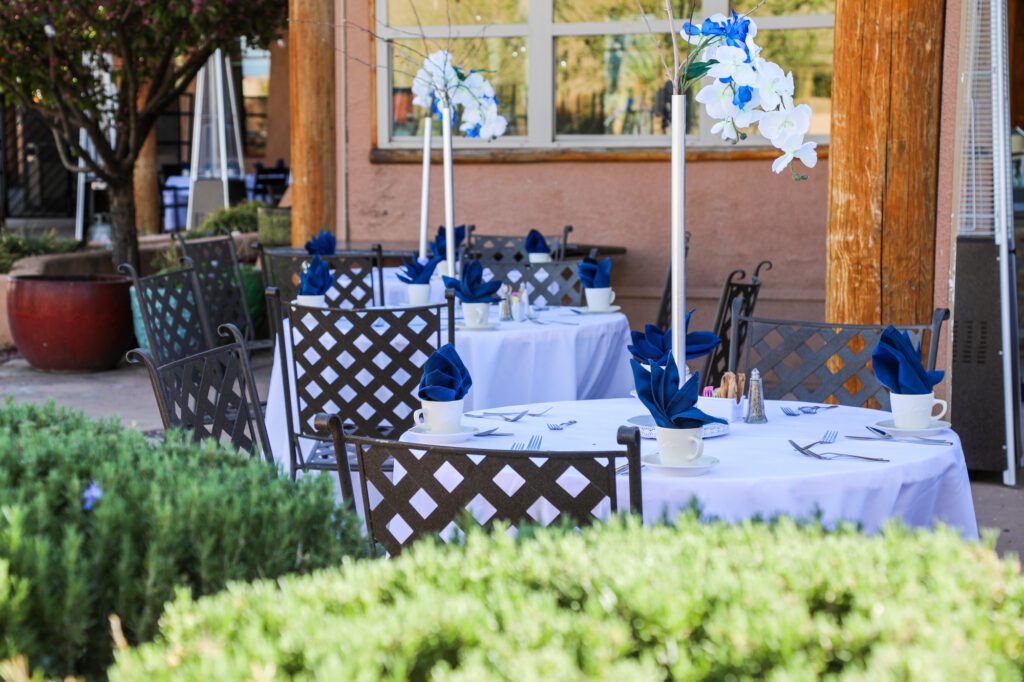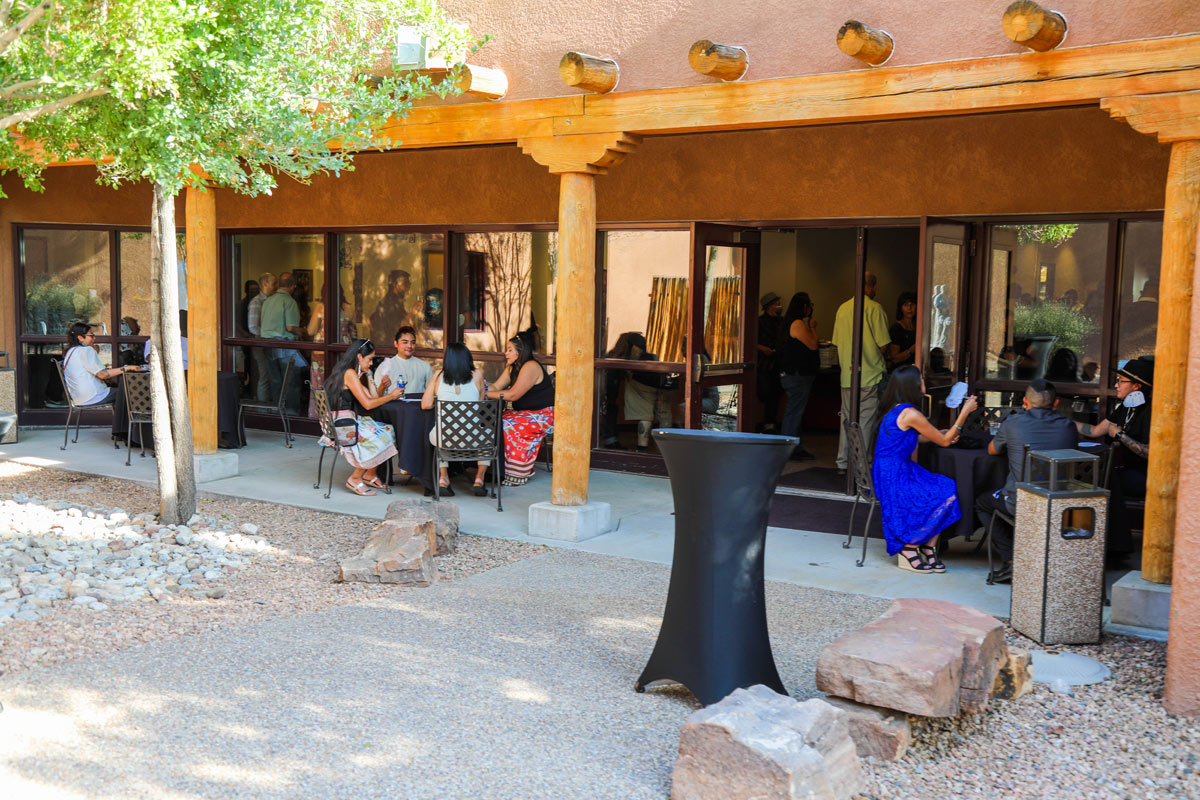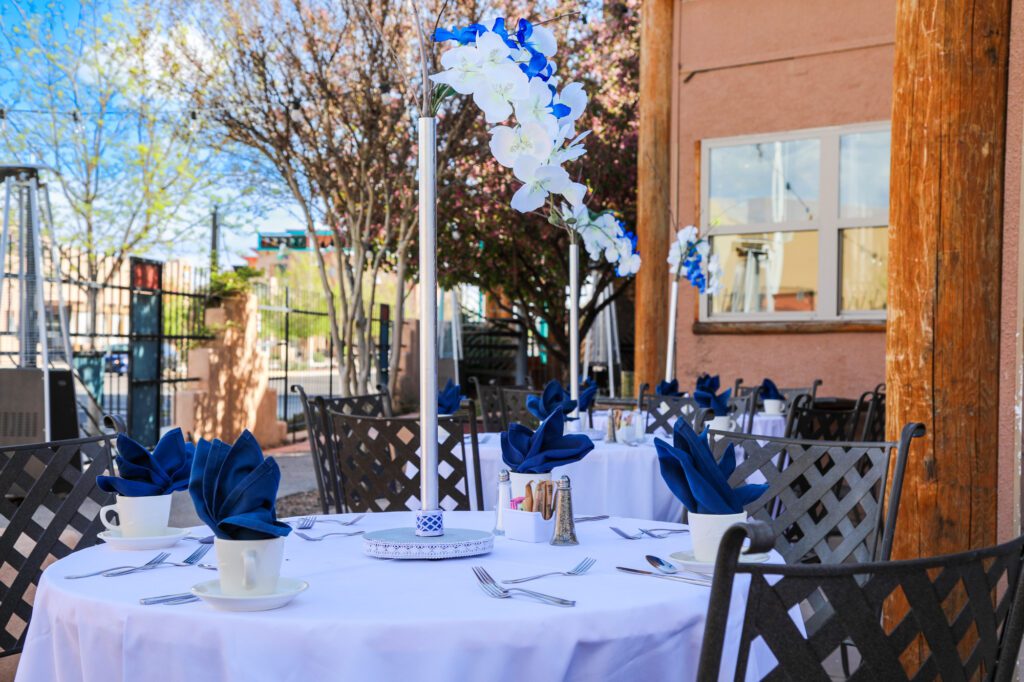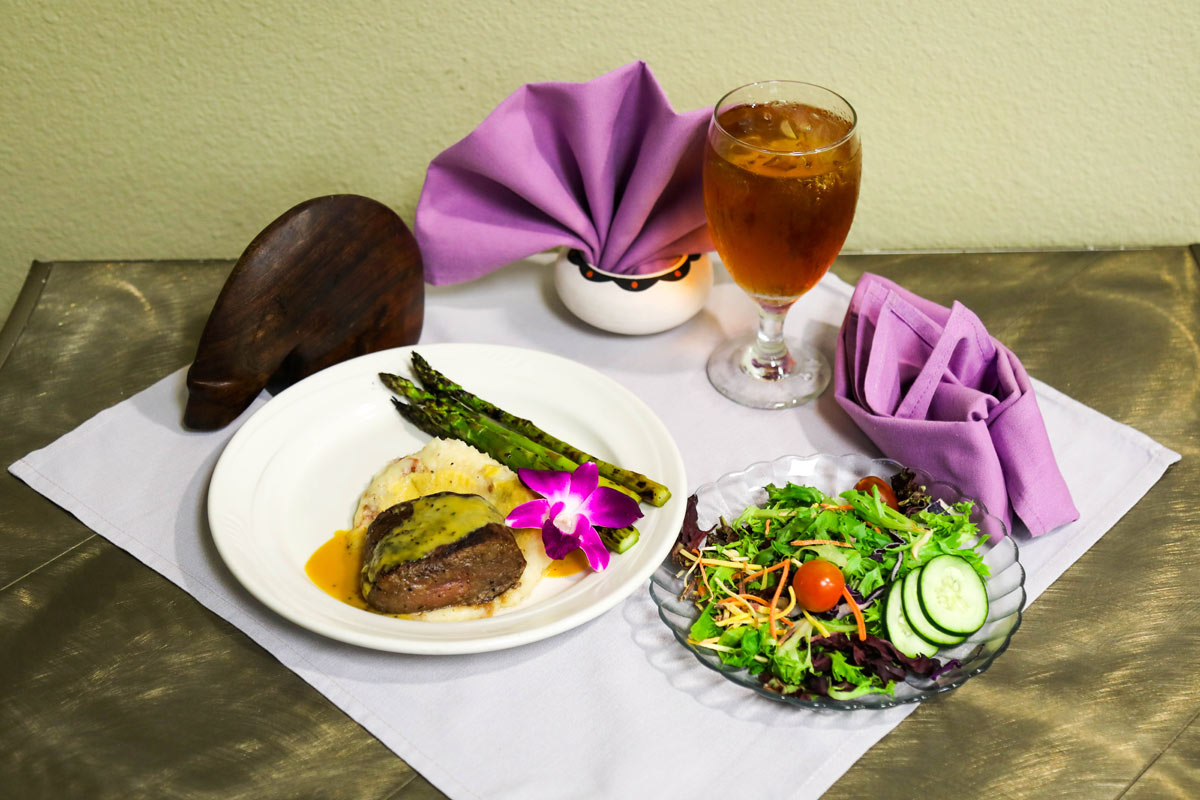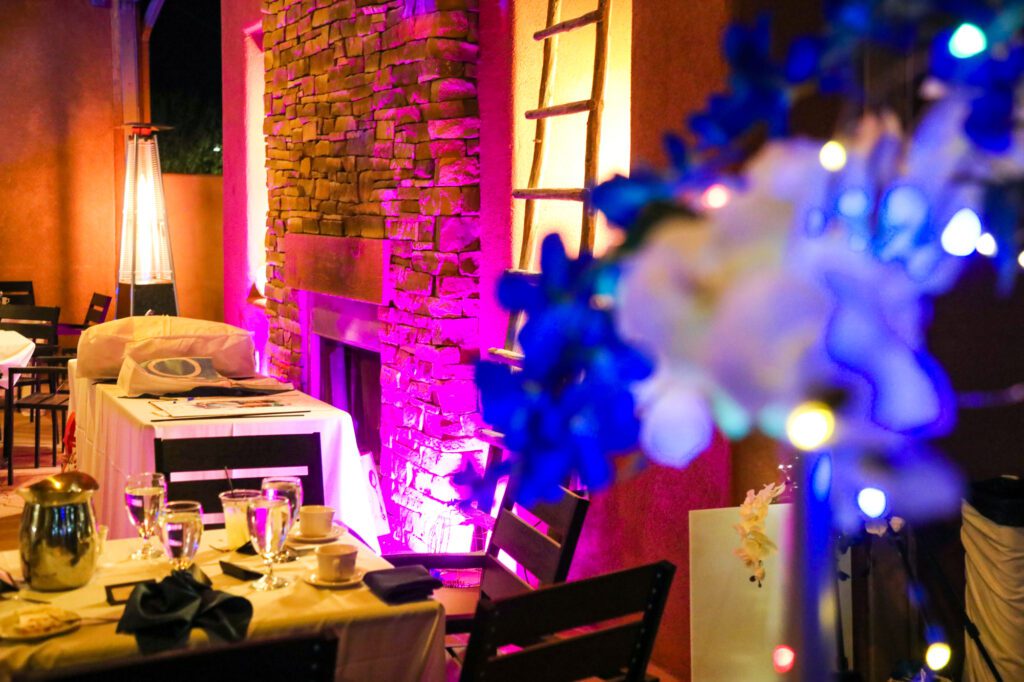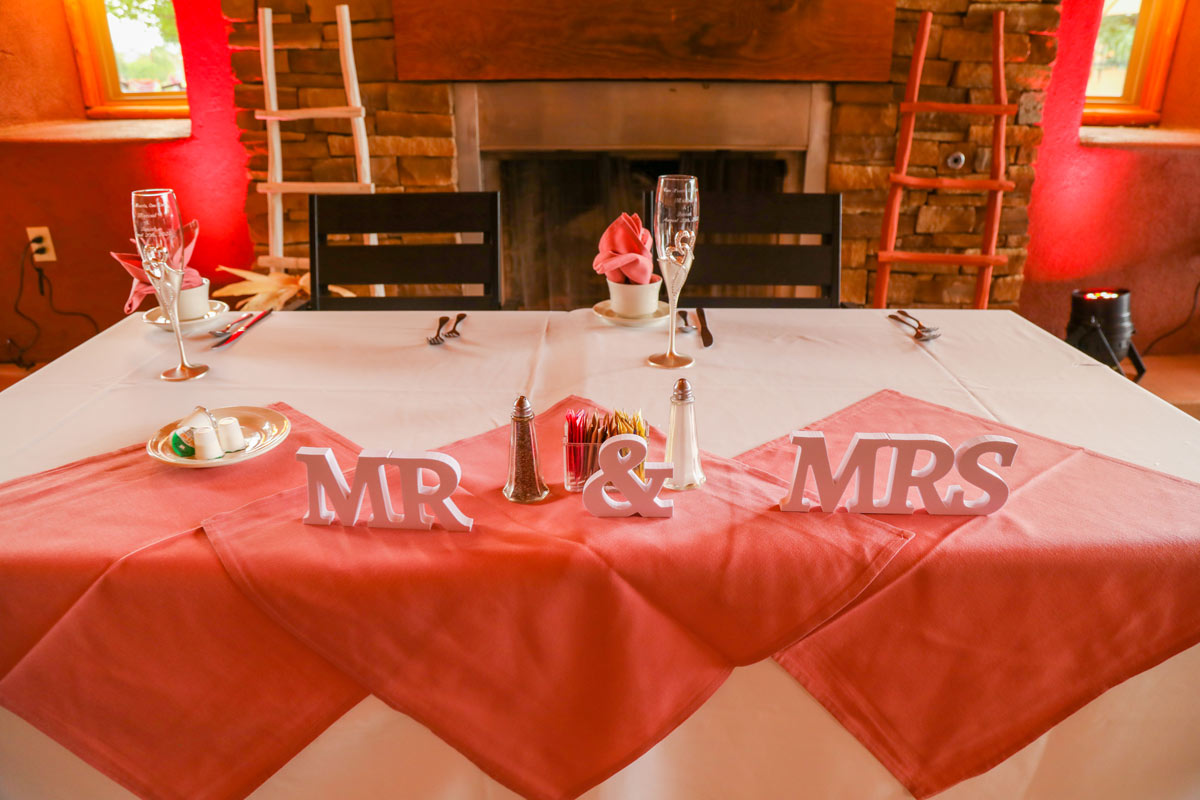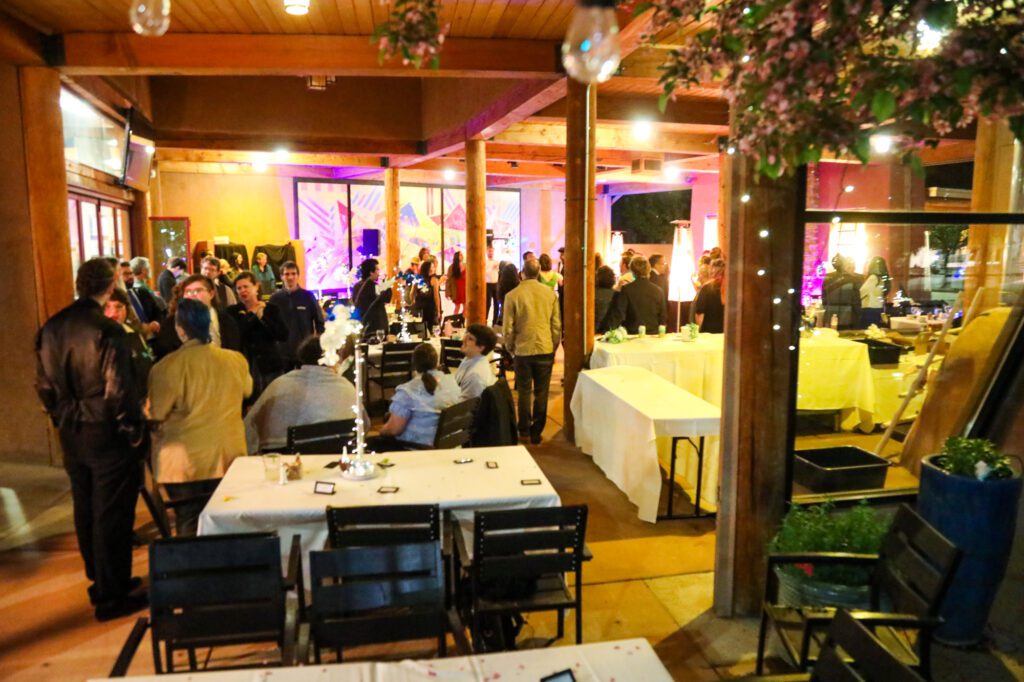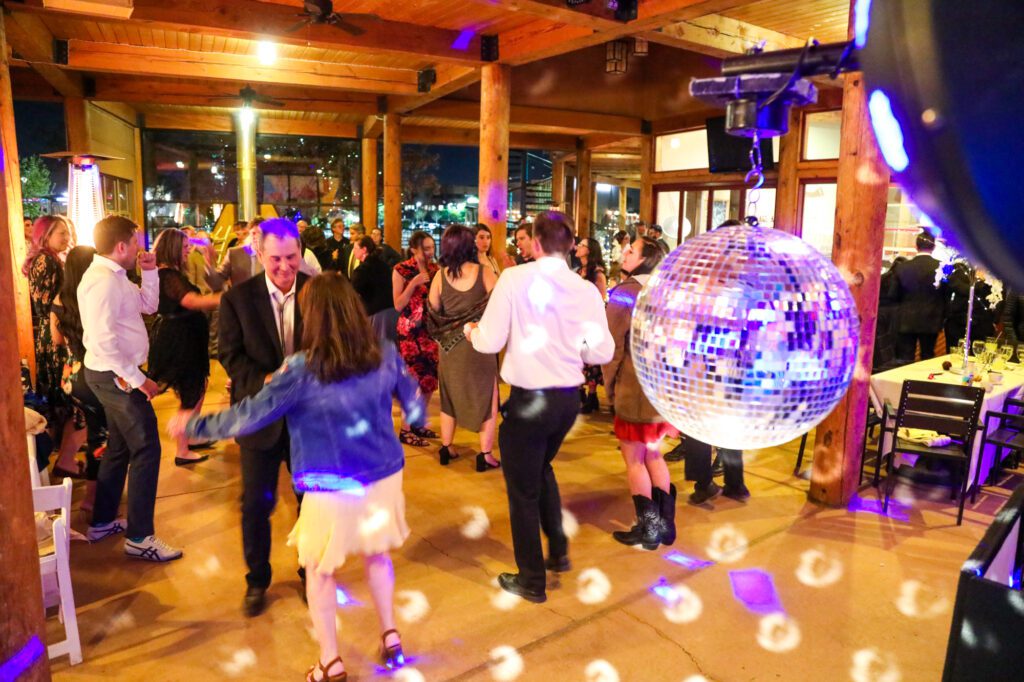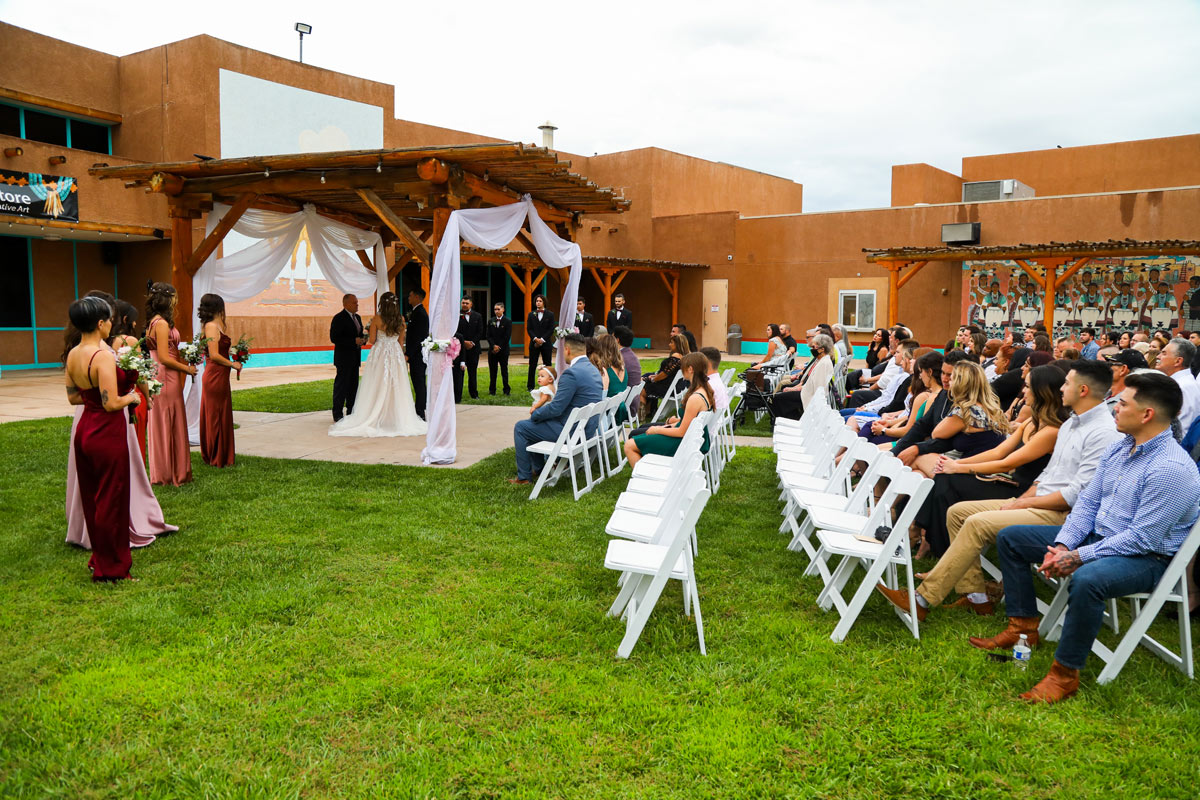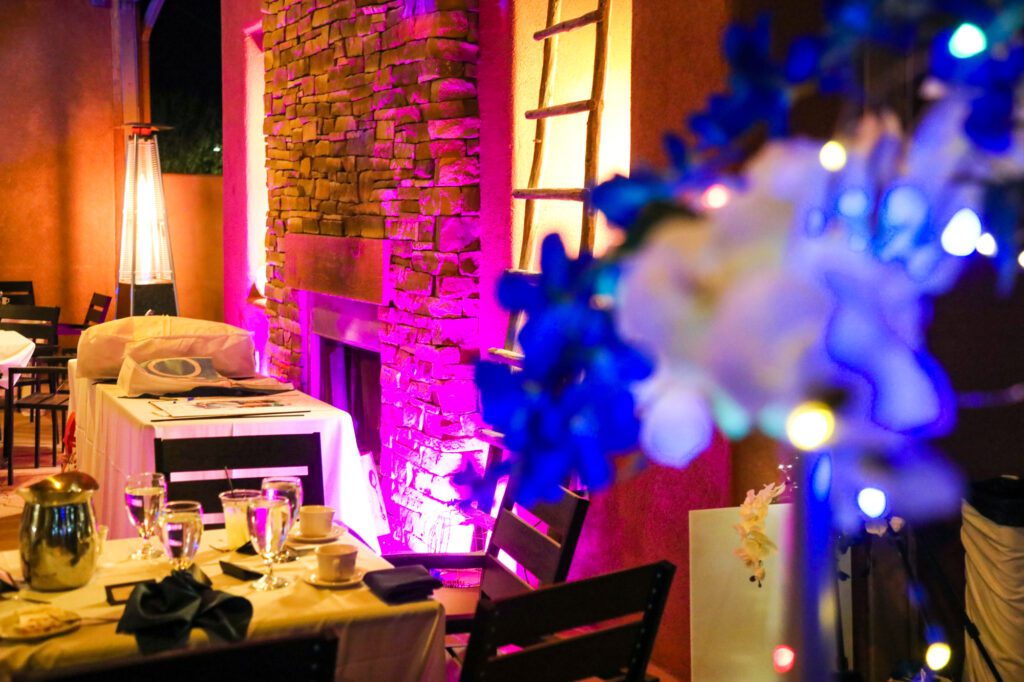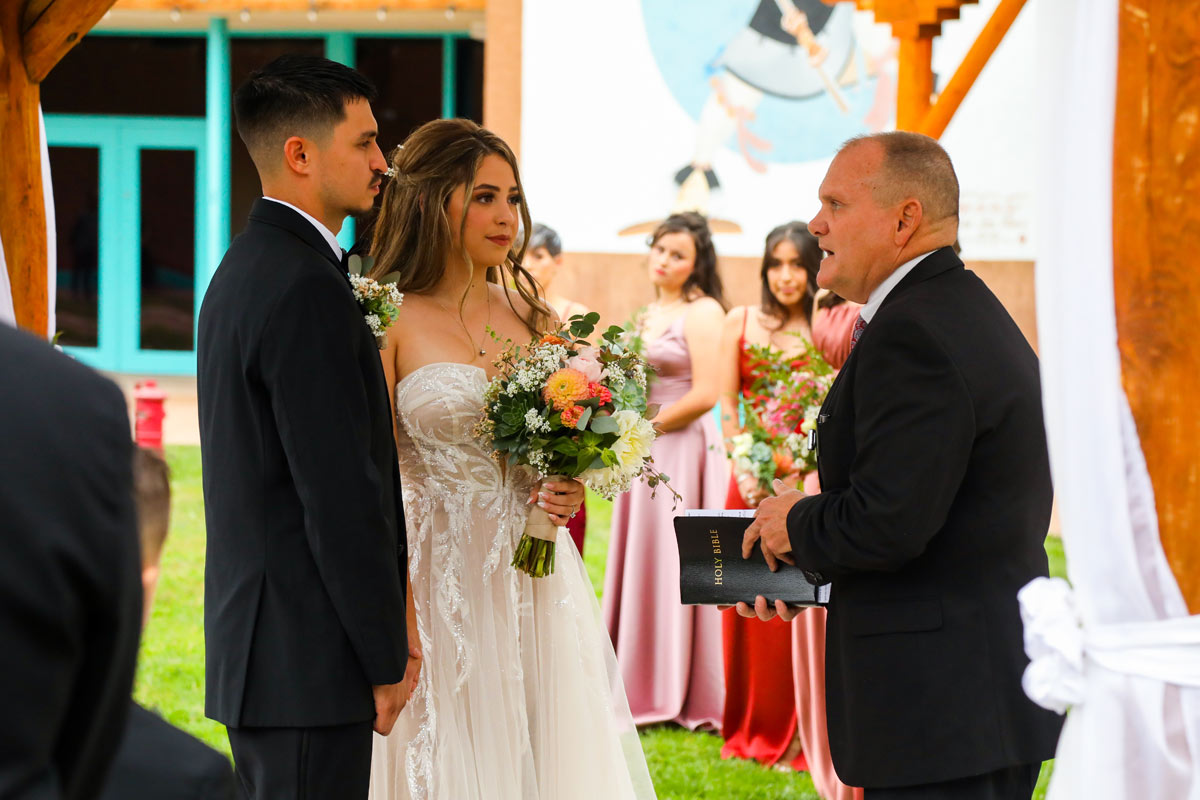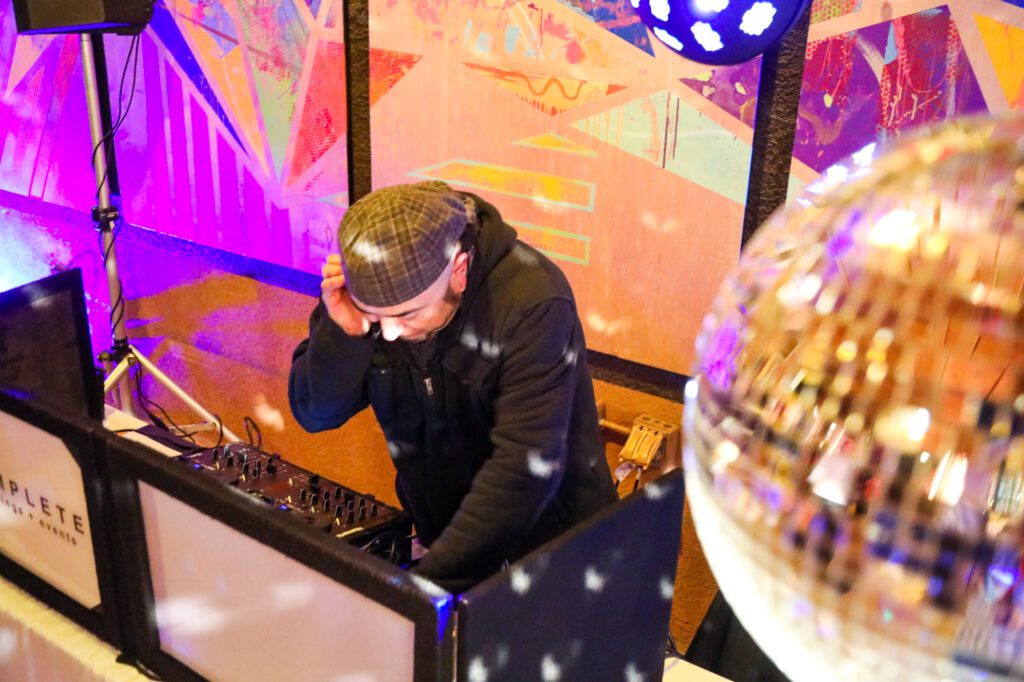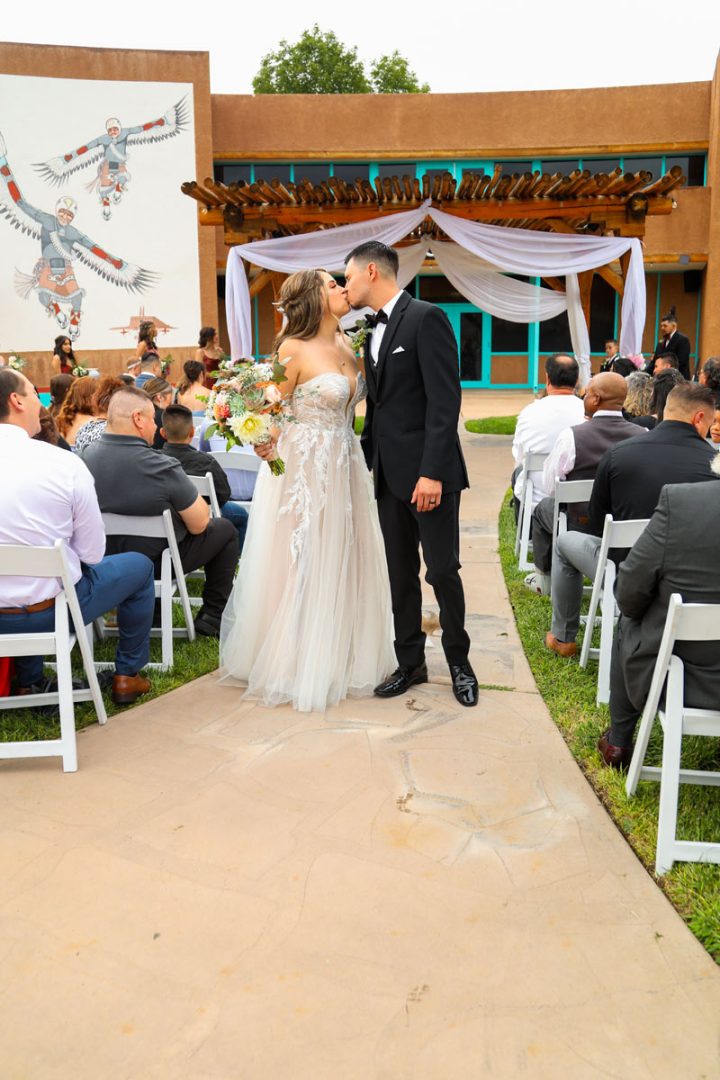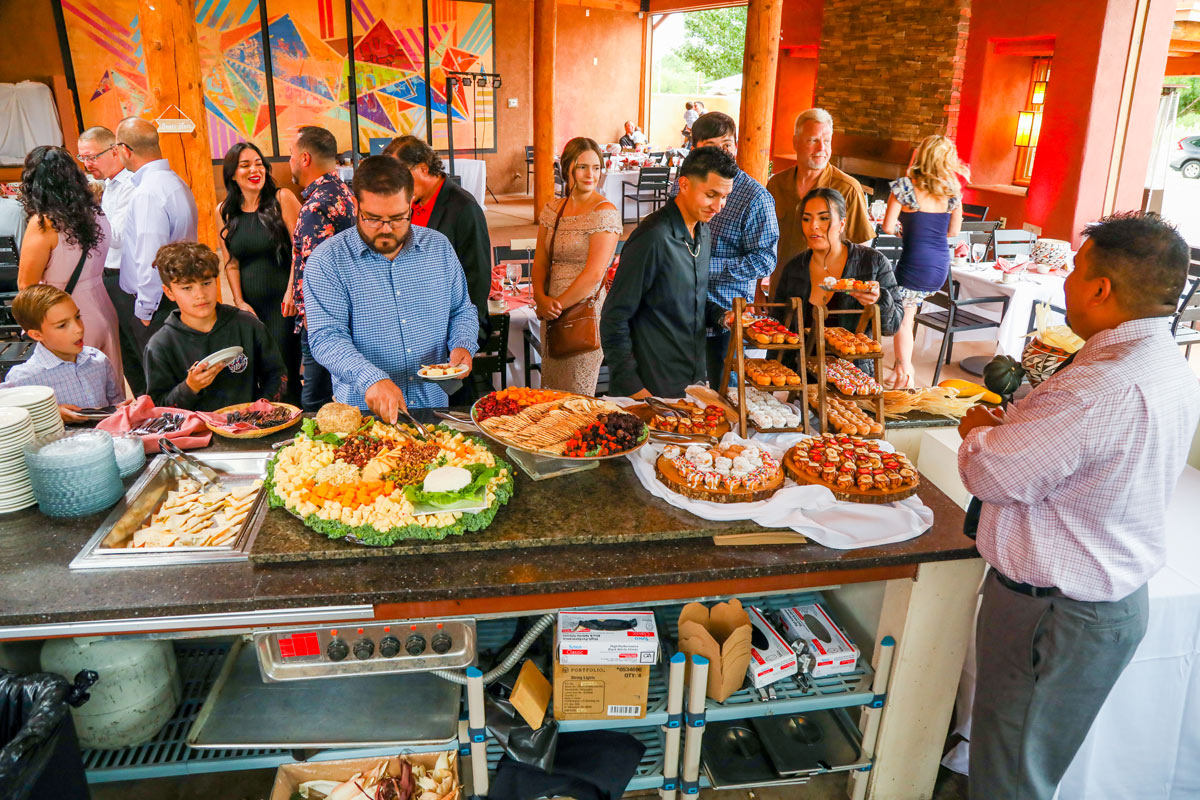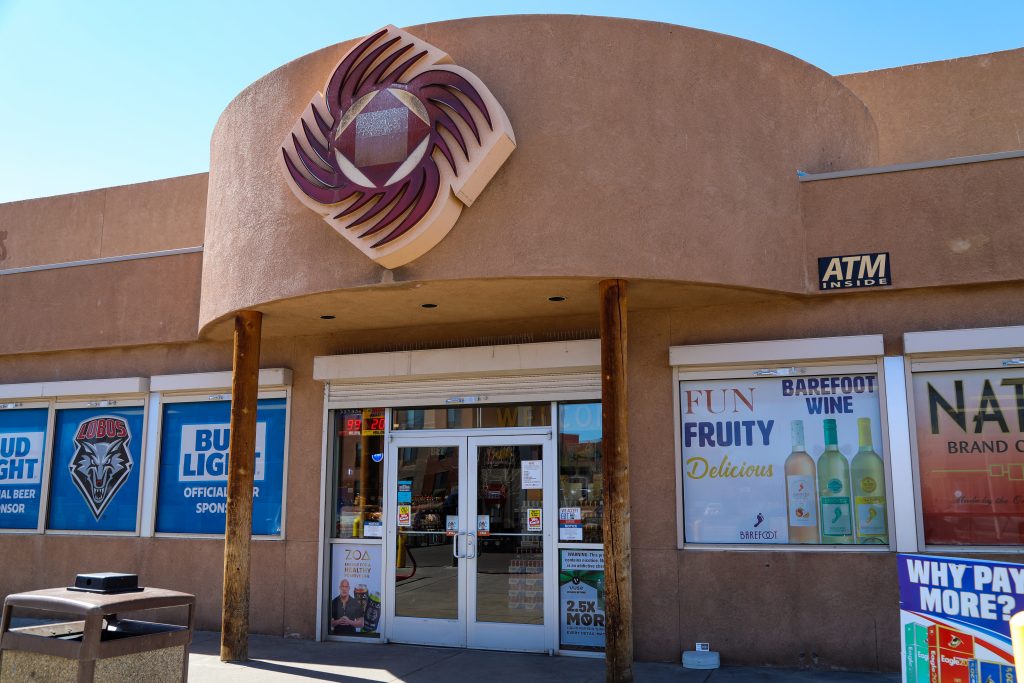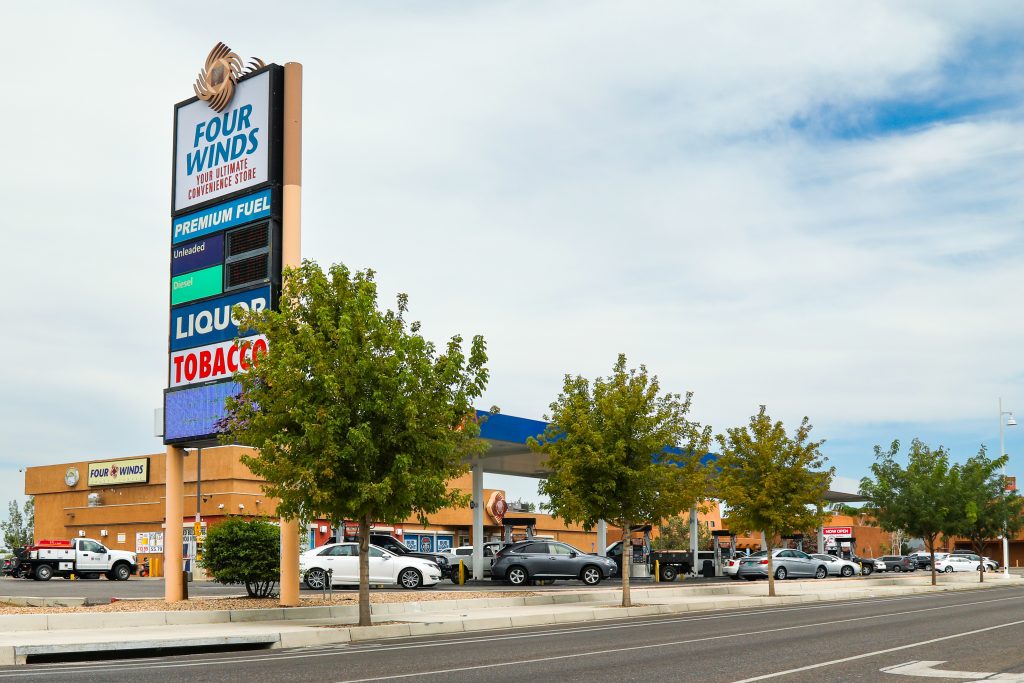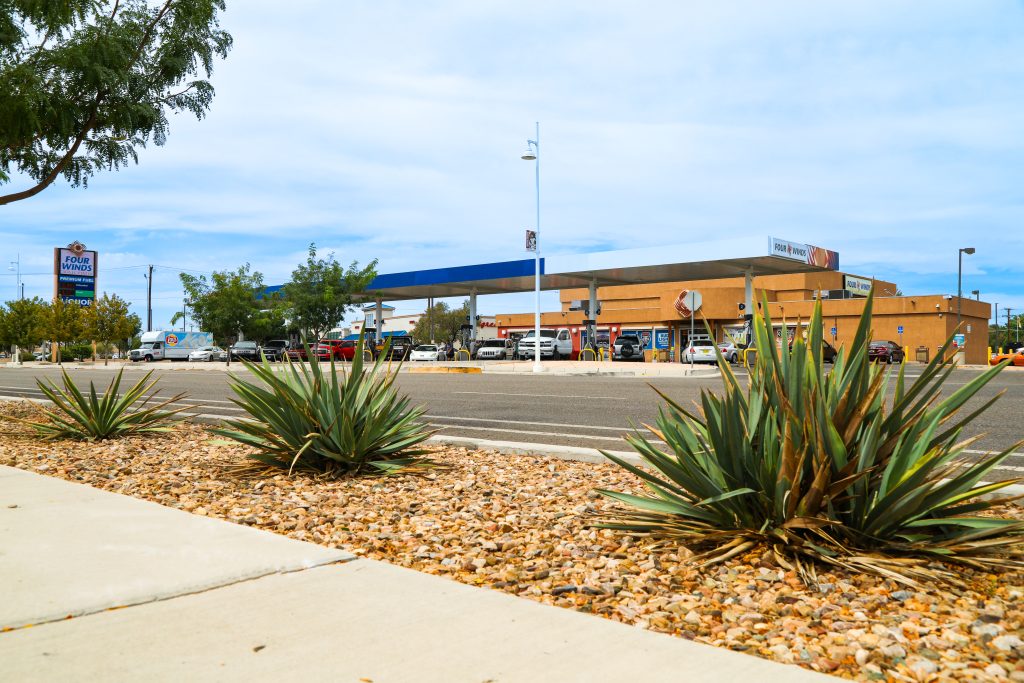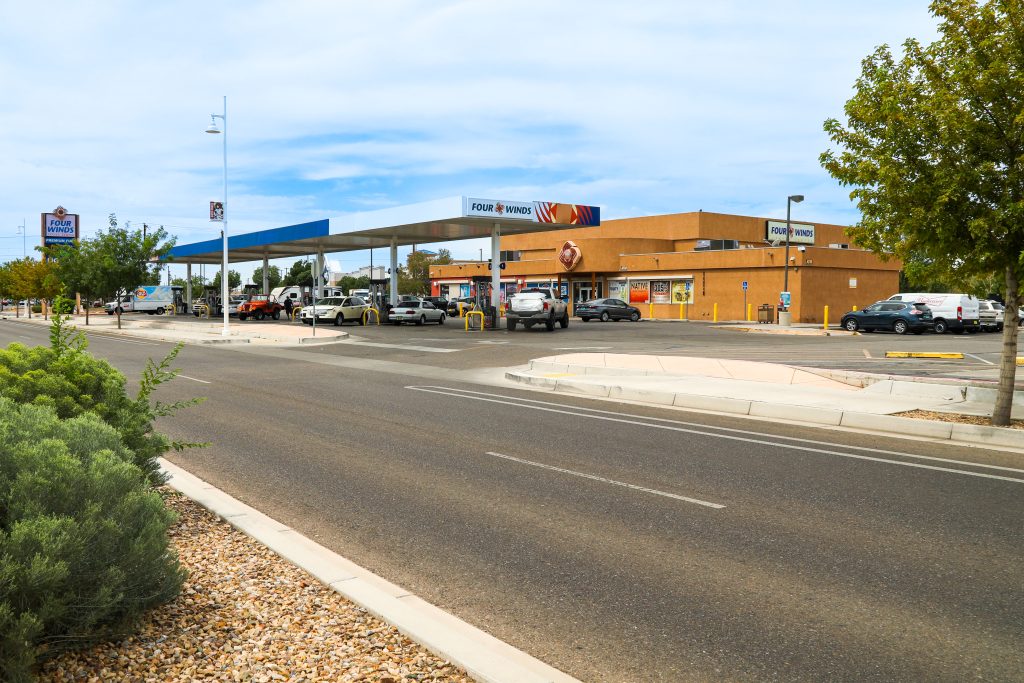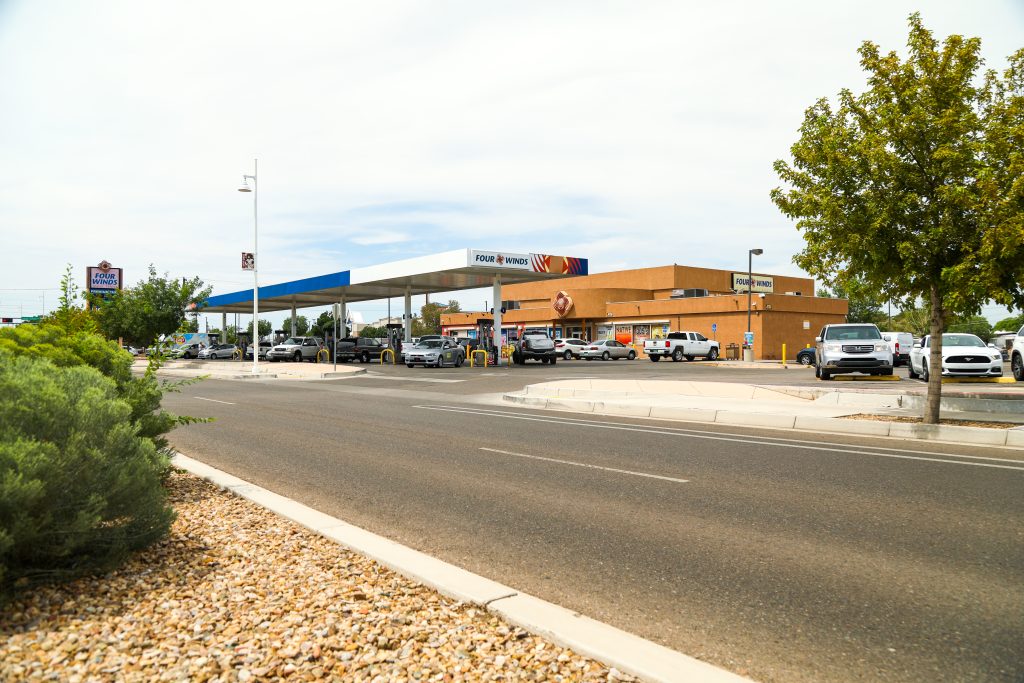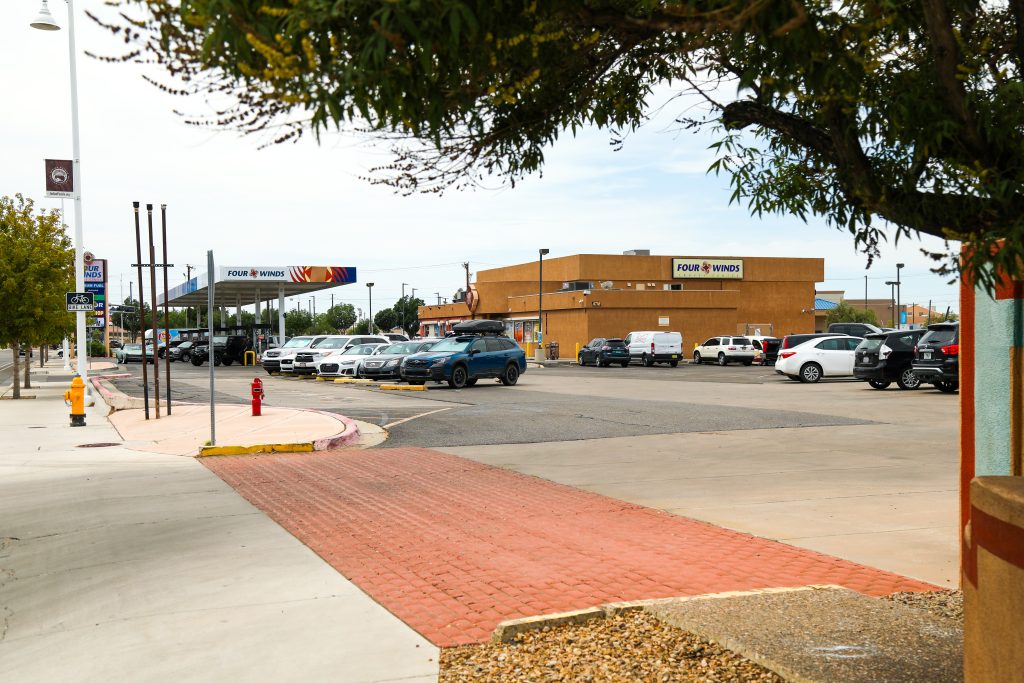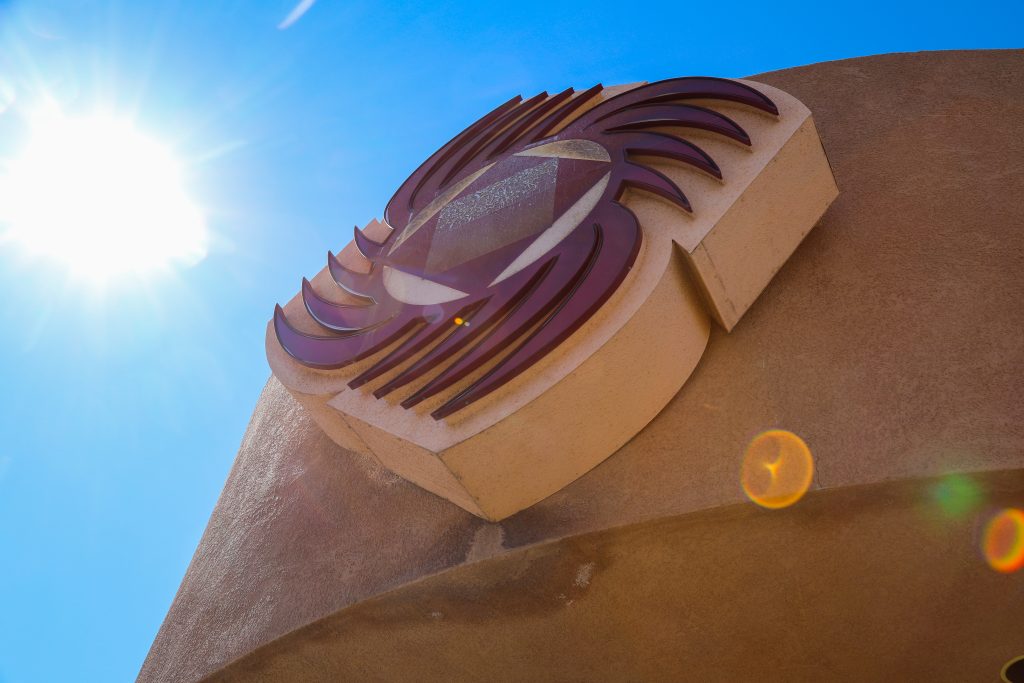Guided by Many Grandmas: The Pottery of Myron Sarracino
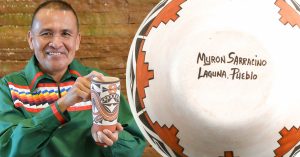
Nestled along the Rio San José between golden-brown mesas and Route 66 lies the Laguna Pueblo village of Seama, where potter Myron Sarracino calls home.
Pottery-making was a family skill, one in which Myron took an early interest. “My grandma used to make a little clay, then use it to make little bowls, ashtrays, and stuff like that,” Myron remembers. “She used to sell at Laguna by the church, and just watching her do that, I wanted to try, so that’s when I got into it more.”
Myron started making tiny bowls and animals around age 12, seeking guidance from any elder willing to share it. “That’s how I learned a lot,” he says, “by questions, and by them showing me, like demonstrating what I need to do, how to prepare the clay, where to get the clays, the paints—how to make the paints—how to do my firings and stuff like that.”
“I was taught by a lot of my grandmothers in Laguna—many grandmas, lots of grandmas,” Myron says, eager to learn more about a skill and art he was seeing less of throughout Laguna. “I asked all their knowledge because they were not creating pottery like they used to, like long ago. Pottery just got me. I like to work with the clay.”

“Long ago” is a recurrent theme for Myron, including finding inspiration in ancestral designs: “I’ve been studying all my life the pottery I’ve seen at ruins, or broken, big pieces of pots I’ve found, and take pictures or jot down the design on a piece of paper.”
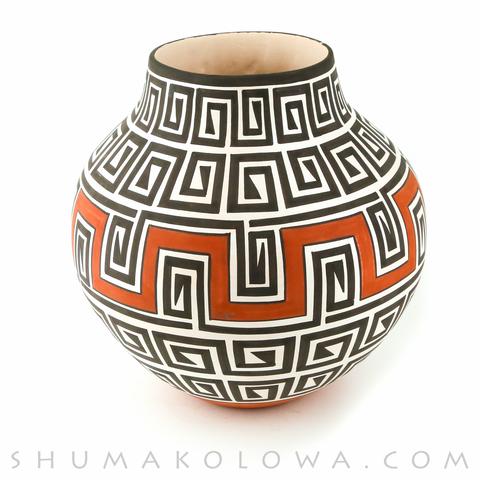
That ancestral element often goes beyond just the design—it frequently has a physical presence, too. Like many traditional potters, Myron incorporates old potsherds into his clay. “I go out where there are old ruins near my house and go pick buckets of sherds, and those are all pounded up and ground real fine on the rock,” he says. “I find that better than on the mill that people use to grind corn and stuff. I like pounding it. My sisters help me, and when they’re not doing it, then my nieces help me grind, and it’s just ground like flour—real fine, and strained.”
Also keeping with tradition, Myron still gathers his clay and pigments by hand. “There are three mines I go to for clay,” he says. “There’s one right there at the village of Laguna, north of the village. The other is the village where I live, Seama. Up the side of the mesa I found a source to get clay. I use those two mainly. The third one I get makes my pots a tan color, and I get it between Albuquerque and Laguna. There’s a source in the river where I get that clay.”
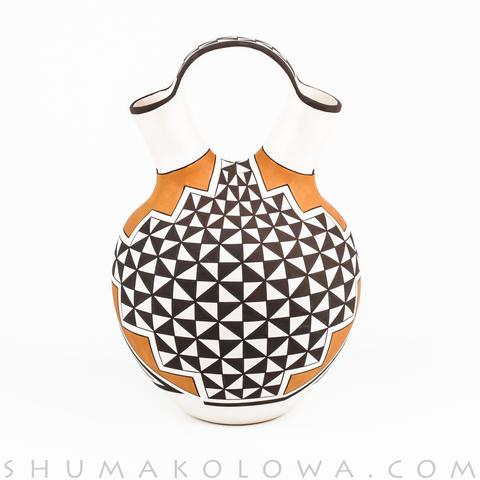
Having seen the decline in potters at Laguna, Myron knows the importance of teaching the traditional craft. “Our village, they asked me to have pottery classes,” he says, “so for a couple of years I had classes, and most of the kids were between the ages of 7 and 15. I showed them all the traditional ways of doing pottery—I taught them.” Myron also demonstrates the various processes of traditional pottery-making at trading posts and other locations.
Myron was enthusiastic about participating in the celebrated Pueblo Pottery Mug project. “I saw the other mugs out in different shops all over the place,” he says, “and then when I was asked, I just felt like ‘All right! I’m gonna try this!’ I was just excited about trying something new.”
“Getting it so perfect into the size, the dimensions that they wanted, that was a little challenging,” Myron admits, “‘cause usually cups I make are round with a handle.” Despite the challenging nature of the task, he got it perfect on only the second try—a detail he partially credits to using volcanic ash as a tempering material for the mug instead of his usual ground potsherds. The clay experiences less shrinkage with the ash, making the final size more predictable.

Myron says the design for his mug came easily. “Although most of my work is prehistoric recreations of potsherds I see, I wanted to show Laguna designs on the mug, a traditional pattern from Laguna. It just came to me to use a rainbow. Something just comes to me when I see a pot—I know what goes on there and I’ll paint that on. I’ve done rainbow pots similar to that with bold designs on it.”
Pueblo Pottery Mugs are available across the globe, in many more places than one usually finds Pueblo pottery represented, which very much appeals to Myron. “It’s happy for me, because a piece of Laguna is being out there, and people can see it and show interest in pottery from Laguna,” he says. “I want to spark their interest in the Pueblo culture, and know the pueblo it comes from, because there aren’t very many potters in Laguna. When I first was asked to make the cup, I told my village officials I’ll be representing the Pueblo of Laguna with this, and now I can take that cup and show them, this is what I’ve done.”
Earlier, Myron mentioned that clay just got him, and he loves working with it. And to be sure, there is certainly no shortage of people who love what he does with that hand-sourced clay, as he’s made a career out of pottery-making. “I’ve been doing pottery all my life, practically,” he says,
Learn More About Myron and Shop His Artwork >.
Additional background on the Pueblo Pottery Mugs:
In January 2015, five Pueblo potters, Erik Fender (San Ildefonso), Elizabeth Medina (Zia), Frederica Antonio (Acoma), Patricia Lowden (Acoma), and Robin Teller (Isleta), were commissioned by the Indian Pueblo Store to create traditional Pueblo pottery in the form of a contemporary coffee mug, which could be replicated.
The popularity of the mugs prompted the commission of a second series of Pueblo Pottery Mugs, this time with designs by Martha Romero (Nambé), Carlos Laate (Zuni), Denise Chavarria (Santa Clara), Helen Bird (Santo Domingo), and a collaboration from Lisa Holt (Cochiti) and Harlan Reano (Santo Domingo).
Series two debuted with Martha Romero’s design just before Christmas 2017, with the others being released at intervals through mid-February 2018. Series three debuted in October 2018 with mugs from Juanita Fragua (Jemez), Clarence Cruz (Ohkay Owingeh), Natalie Sandia (Jemez), Myron Sarracino (Laguna), and Hubert Candelario (San Felipe). The goal is to eventually have potters from each of New Mexico’s 19 Pueblos produce a mug design representing their pueblo.
The originals for series one through three are on display at the Indian Pueblo Store, located inside the Indian Pueblo Cultural Center. All of the participating artists receive royalties for each mug sold, with proceeds also supporting the Indian Pueblo Cultural Center and the 19 Pueblos of New Mexico.
